Events
Mini-Symposium on Data Driven Optimization of Spectrum Sharing Networks and Beyond

Date: April 18, 2025, Fri.
Time: 08:30 AM to 03:30 PM
Venue: Harut Barsamian Colloquia (Engineering Hall 2430)
The mini-symposium includes invited talks from experts in different aspects of machine learning and wireless spectrum research.
Registration is free but required. More information can be found at the following Link .
CPCC Seminar by Prof. David Love
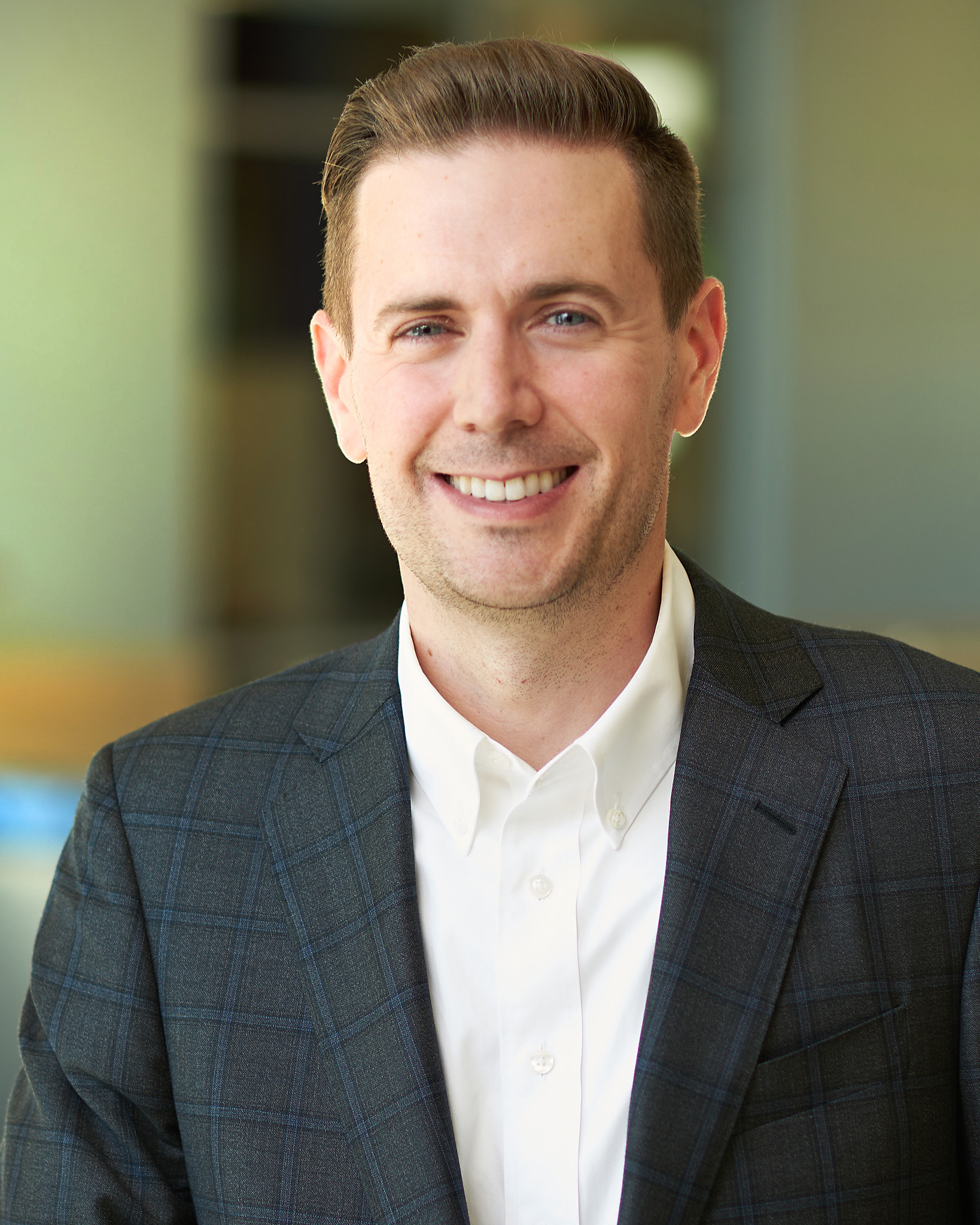
Title: Using Old Problems and New Applications to Understand 6G and Beyond Communications
Date: Mar. 7, 2025, Fri.
Time: 9:15 AM
Venue: McDonnell Douglas Engineering Auditorium (MDEA)
ABSTRACT
The projected growth in demand for wireless broadband applications is driving industry and academic research. To enable future systems, it is critical to look beyond the waveforms and signal processing schemes of today. In this talk, I will look at the impact of both AI/ML and new applications on physical layer design. I will review the use of channel output feedback in additive white Gaussian channels and discuss the surprising (and sensitive) classical results on capacity-achieving linear processing schemes. The practical shortcomings of these kinds of linear schemes will be overviewed. I will then show how an AI/ML approach can outperform the best-known schemes. In addition, I will discuss the increasingly important areas of rural communications and agriculture. I will show how this emerging use case will drive 6G and beyond waveforms.
SPEAKER'S BIOGRAPHY
David J. Love is the Nick Trbovich Professor of Electrical and Computer Engineering at Purdue University. He received the B.S., M.S.E., and Ph.D. degrees from UT-Austin. He is currently a Senior Editor for IEEE Journal on Selected Areas in Communications and held editorial positions for IEEE Signal Processing Magazine, IEEE Trans. Communications, and IEEE Trans. Signal Processing. He holds 32 U.S. patents. His research interests include 6G and beyond wireless, MIMO communications, millimeter-wave wireless, software-defined radios, and coding theory. He is a Fellow of the IEEE, American Association for the Advancement of Science (AAAS), and National Academy of Inventors (NAI). His research has been recognized by the IEEE Communications Society (2016 Stephen O. Rice Prize, 2020 Fred W. Ellersick Prize, and 2024 William R. Bennett Prize), IEEE Signal Processing Society (2015 SPS Best Paper Award), and IEEE VT Society (2010 Jack Neubauer Memorial Award).
CPCC Seminar by Prof. Aydin Sezgin
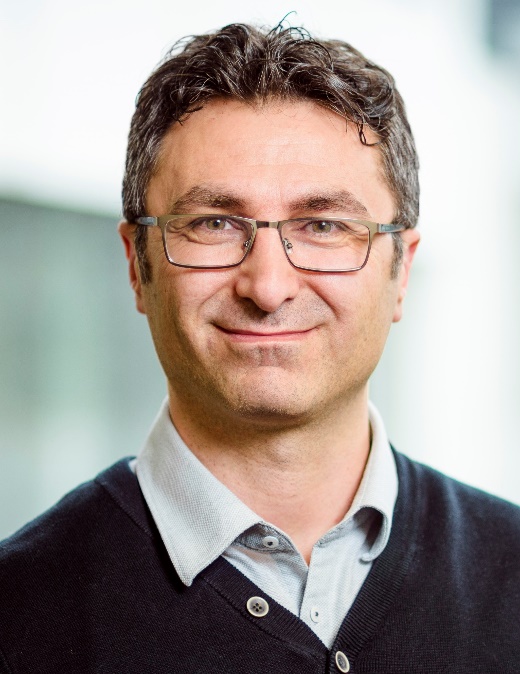
Title: RIS in the Real World: Bridging the Divide Between Conceptual Models and Experimental Evidence
Date: Jan. 24, 2025, Fri.
Time: 1:00 PM
Venue: ISEB Conference Room 3030
ABSTRACT
Reconfigurable Intelligent Surfaces (RIS) are a key component to 6G wireless systems, enabling real-time beamsteering via intelligent reconfiguration. This technology promises to significantly enhance network efficiency, coverage, and reliability, opening up new possibilities for seamless connectivity in complex and diverse environments. RIS can adapt to varying conditions, mitigate interference, and optimize signal quality, making it a critical enabler for the next generation of wireless communication.
However, these theoretical benefits require precise RIS configurations, which depend on the accuracy of the employed channel models. Especially in mobile wireless environments, many real-world effects are frequently neglected in idealistic channel models, leading to an incomplete representation of actual conditions.
To ensure that RIS can deliver on its promises, it is essential to move beyond purely theoretical approaches and incorporate empirical data into channel modeling. By comparing theoretical predictions with experimental evaluations, these models can be refined to better capture the real-world complexities that impact system performance.
Experimental research, therefore, plays a vital role in advancing RIS technology, as it provides the necessary insights to fine-tune models and configurations for optimal real-world performance.
By integrating real-world insights into RIS technology, this talk aims to provide a comprehensive understanding of how to achieve optimal performance in practical environments, ensuring that the potential of 6G systems is fully realized.
SPEAKER'S BIOGRAPHY
Aydin Sezgin received the Dr. Ing. (Ph.D.) degree in electrical engineering from TU Berlin, in 2005. From 2001 to 2006, he was with the Heinrich-Hertz-Institut, Berlin. From 2006 to 2008, he held a postdoctoral position, and was also a lecturer with the Information Systems Laboratory, Department of Electrical Engineering, Stanford University, Stanford, CA, USA. From 2008 to 2009, he held a postdoctoral position with the Department of Electrical Engineering and Computer Science, University of California, Irvine, CA, USA. From 2009 to 2011, he was the Head of the Emmy-Noether-Research Group on Wireless Networks, Ulm University. In 2011, he joined TU Darmstadt, Germany, as a professor. He is currently a professor with the Ruhr-Universität Bochum, Germany. He has published several book chapters, more than 70 journals and 200 conference papers in these topics. Aydin is a winner of the ITG-Sponsorship Award, in 2006. He was a first recipient of the prestigious Emmy-Noether Grant by the German Research Foundation in communication engineering, in 2009. He has coauthored papers that received the Best Poster Award at the IEEE Communication Theory Workshop, in 2011, the Best Paper Award at ICCSPA, in 2015, at ICC, in 2019, and at ISAP, in 2023.
CPCC Seminar by Prof. Konstantinos Nikitopoulos
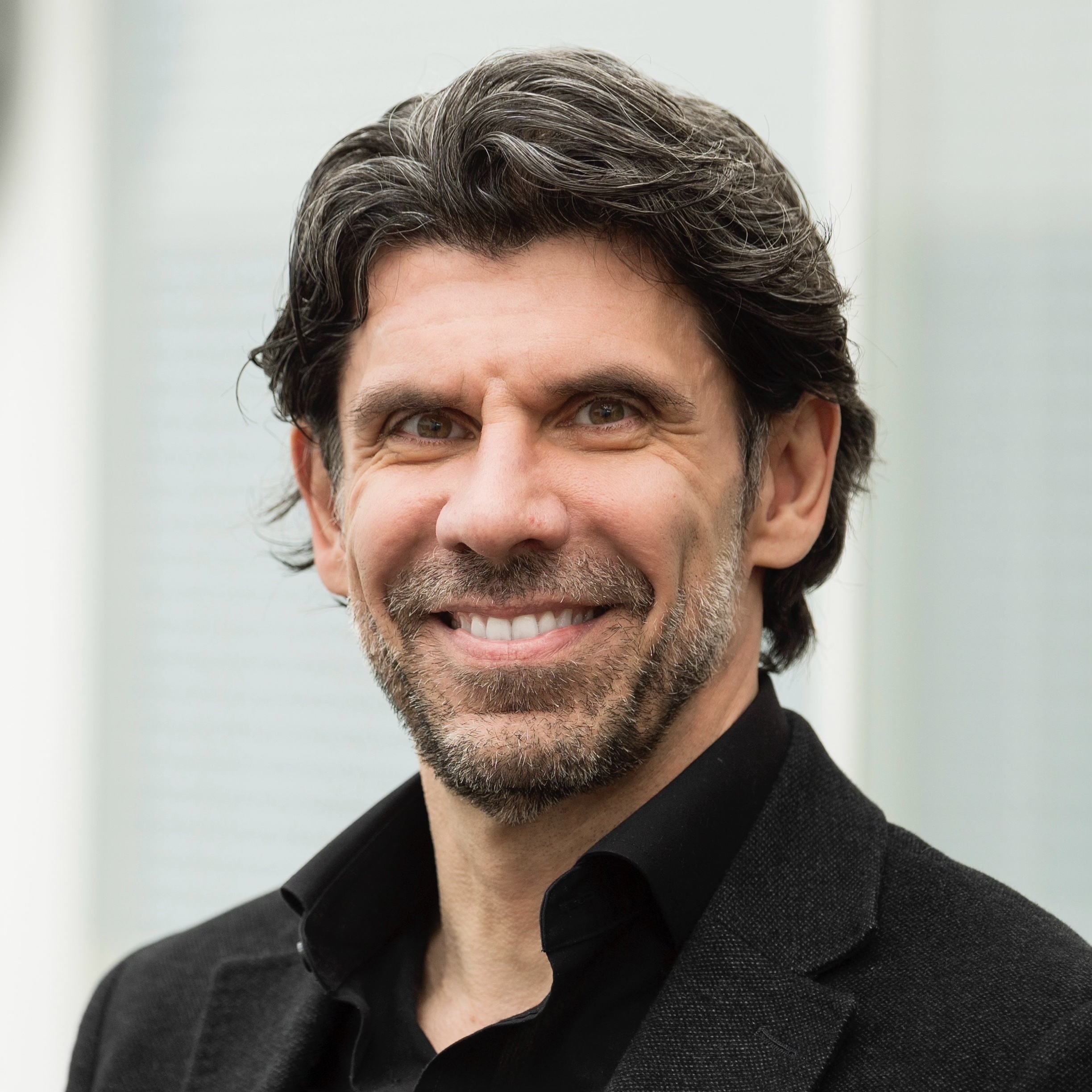
Title: Next-Generation Physical Layer Processing for Future Wireless Systems
Date: Nov. 21, 2024, Thu.
Time: 11:00 AM
Venue: Harut Barsamian Colloquia (Engineering Hall 2430)
ABSTRACT
To deliver the enhanced wireless experience that today's users and network operators expect, future wireless systems must not only achieve ultra-high spectral efficiency but also support massive device connectivity, including both human-type and machine-type communications. Moreover, transformative use cases such as mobile holographic telepresence, 3D immersive multimedia, and extended reality will require link-level data rates in the Terabits-per-second range, made possible by exploiting ultra-wide bandwidths.
However, as traditional processing speeds plateau, and with new transmission environments-such as intelligent reflective surfaces and extra-large antenna arrays-emerging, power consumption is becoming a major challenge. Despite the rapid evolution of wireless technologies, physical layer processing methods have remained largely unchanged for more than two decades, limiting the full potential of modern networks.
This talk will discuss why it is crucial to revisit current physical layer processing techniques, and how traditional algorithms and architectures are restricting the capabilities of future wireless systems. We will also explore promising emerging approaches that could significantly enhance-or even revolutionize-future wireless communications, along with their associated research challenges. These include non-linear processing methods for non-orthogonal transmissions like MIMO and NOMA, as well as alternative computational techniques, such as DigiLogue, neuromorphic, and quantum processing.
SPEAKER'S BIOGRAPHY
Dr. Konstantinos Nikitopoulos is an Associate Professor (Reader) at the Institute for Communication Systems, University of Surrey, UK, where he serves as the Director of the Wireless Systems Lab. He is also an active member of the 5G/6G Innovation Centre (5G/6GIC), leading the research area on "Theory and Practice of Advanced Concepts in Wireless Communications."
Dr. Nikitopoulos's research focuses on the design and development of wireless communication systems that are energy-efficient, low-latency, and highly pragmatic, ensuring they perform effectively in real-world scenarios. His work lies at the intersection of advanced physical layer (PHY) processing, cutting-edge computing architectures, and system-level wireless design, including Open RAN systems.
As an academic, Dr. Nikitopoulos has led research projects totaling over 10 million pounds, many of which have been industry-supported and market-driven. He is a Senior Member of IEEE and a recipient of the prestigious First Grant from the UK's Engineering and Physical Sciences Research Council (EPSRC).
CPCC Seminar by Prof. Tianyi Chen
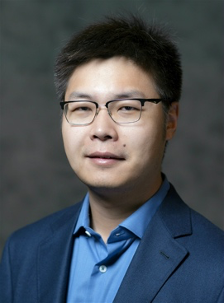
Title: Towards Exact Gradient-based Training for Analog In-memory Computing
Date: Oct. 31, 2024, Thu.
Time: 11:00 AM
Venue: Harut Barsamian Colloquia (Engineering Hall 2430)
ABSTRACT
Artificial intelligence (AI) models that have billions of parameters exacerbate poor energy efficiency on conventional general-purpose processors such as GPUs and CPUs. Analog in-memory computing, or simply analog AI, is a promising approach to addressing the challenge. Empowered by the CHIPS and Science Act, the new analog AI chip is predicted to enjoy energy efficiencies 40-140 times higher than those of cutting-edge GPUs. However, training AI models on new analog devices is difficult and largely unexplored. Recent empirical studies have shown that the "workhorse" of AI training - stochastic gradient descent (SGD) algorithm performs poorly when applied to train models on non-ideal analog devices.
In this talk, we will propose a mathematical model to accurately characterize training dynamics on analog devices. Building upon this, for the first time, we will uncover the role of underlying device physics on the training dynamics, and then demystify the non-convergence issues of vanilla SGD-based training on non-ideal analog devices that have asymmetric updates, reading noise, and device variability. We will further discuss how to algorithmically mitigate the asymmetric error induced by training on non-ideal analog devices and hence eliminate the asymptotic training error. We will conclude the talk by presenting some simulations that verify the correctness of the theoretical analyses and pointing out future directions in this promising area.
SPEAKER'S BIOGRAPHY
Tianyi Chen is an Assistant Professor in the Department of Electrical, Computer, and Systems Engineering at Rensselaer Polytechnic Institute (RPI), where he is jointly supported by the RPI - IBM Artificial Intelligence Research Partnership. Dr. Chen received his B. Eng. degree from Fudan University in 2014, and the Ph.D. degree from the University of Minnesota in 2019. Dr. Chen's research centers on the theoretical foundations of optimization and machine learning, with a focus on their applications to emerging data processing and computing paradigms. Dr. Chen is the inaugural recipient of IEEE Signal Processing Society Best PhD Dissertation Award in 2020, a recipient of NSF CAREER Award in 2021, and faculty research awards from Amazon, Cisco and IBM. He is also the co-author of several best paper awards.
CPCC Seminar by Prof. Nan Yang
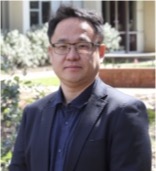
Title: Advancing Terahertz Communications for 6G and Beyond Wireless Era
Date: May 31, 2024, Fri.
Time: 11:00 AM
Venue: Calit2 auditorium
ABSTRACT
Terahertz (THz) communications is envisioned as an up-and-coming and pivotal wireless technology for the sixth generation (6G) and beyond era. In particular, the ultra-wide THz band ranging from 0.1 to 10 THz offers enormous potential to alleviate the spectrum scarcity and break the capacity limitation of emerging wireless systems (such as 4G-LTE and 5G NR). This will undoubtedly support epoch-making wireless applications that demand ultra-high quality service requirements and multi-terabits per second data transmission in the intelligent information society in the 2030s, such as terabit-per-second backhaul systems, ultra-high-definition content streaming among mobile devices, and virtual/augmented reality. In this talk, I will introduce the role and importance of THz communications for the 6G and beyond wireless networks, while briefly describing the fundamental research results on THz channels, devices, and standardisation. After this, I will give a brief summary of recent research advances in THz communications, focusing on performance analysis, spectrum allocation, and hybrid beamforming. Finally, I will discuss some pressing challenges for harnessing the benefits of THz communications in the next decades.
SPEAKER'S BIOGRAPHY
Prof. Nan Yang received the Ph.D. degree from Beijing Institute of Technology, China, in March 2011. Since July 2014, he has been with the College of Engineering, Computing and Cybernetics at the Australian National University, Canberra, Australia, where he is currently an Associate Professor, the Lead of the Information and Signal Processing Cluster, and the head of the Emerging Communications Laboratory in the School of Engineering (SoEN). He is an IEEE ComSoc Distinguished Lecturer (Class of 2023—2024). He received the IEEE ComSoc Asia-Pacific Outstanding Young Researcher Award in 2014, and the Best Paper Awards from the IEEE GlobeCOM 2022, IEEE GlobeCOM 2016 and IEEE VTC Spring 2013. He is serving on the Editorial Board of the IEEE Transactions on Molecular, Biological, and Multi-Scale Communications and the IEEE Communications Letters, and was serving on the Editorial Board of the IEEE Transactions on Wireless Communications and the IEEE Transactions on Vehicular Technology. His research interests include terahertz communications, ultra-reliable and low-latency communications, cyber-physical security, intelligent communications, and molecular communications.
CPCC Seminar by Prof. Geert Leus

Title: A General Graph Convolution Theorem: Application to Dual Graph Inference
Date: Feb. 15, 2024, Thu.
Time: 2:00 PM
Venue: Harut Barsamian Colloquia (Engineering Hall 2430)
ABSTRACT
This talk starts by introducing some basic concepts in the field of graph signal processing including graph filtering (or graph convolution) and the conventional graph convolution theorem. The talk continues by extending this theorem to a general graph convolution theorem by introducing two notions: the node-varying graph filter and the dual graph. The node-varying graph filter broadens the applicability of the conventional graph filter by assigning different filter coefficients to different nodes, whereas the dual graph characterizes the structure of the graph frequency domain. Using these two notions, a general graph convolution theorem can be proposed which encompasses the conventional one and which can be seen as a translation of the convolution theorem for time-varying filters to the graph domain. Interestingly, using non-stationary graph data on the original (or primal) graph, we can use the proposed convolution theorem to learn the dual graph and thereby introduce an innovative data-driven dual graph estimation technique.
SPEAKER'S BIOGRAPHY
Geert Leus received the M.Sc. and Ph.D. degrees in Electrical Engineering from the KU Leuven, Belgium, in June 1996 and May 2000, respectively. Geert Leus is now a Full Professor at the Faculty of Electrical Engineering, Mathematics and Computer Science of the Delft University of Technology, The Netherlands. His research interests are in the broad area of signal processing, with a specific focus on wireless communications, array processing, sensor networks, and graph signal processing. Geert Leus received the 2021 EURASIP Individual Technical Achievement Award, a 2005 IEEE Signal Processing Society Best Paper Award, and a 2002 IEEE Signal Processing Society Young Author Best Paper Award. He is a Fellow of the IEEE and a Fellow of EURASIP. Geert Leus was a Member-at-Large of the Board of Governors of the IEEE Signal Processing Society, the Chair of the IEEE Signal Processing for Communications and Networking Technical Committee, the Chair of the EURASIP Technical Area Committee on Signal Processing for Multisensor Systems, a Member of the IEEE Sensor Array and Multichannel Technical Committee, a Member of the IEEE Big Data Special Interest Group, a Member of the EURASIP Signal Processing for Communications and Networking Special Area Team, the Editor in Chief of the EURASIP Journal on Advances in Signal Processing, and the Editor in Chief of EURASIP Signal Processing. He was also on the Editorial Boards of the IEEE Transactions on Signal Processing, the IEEE Transactions on Wireless Communications, the IEEE Signal Processing Letters, and the EURASIP Journal on Advances in Signal Processing. Currently, he is a Member of the IEEE Signal Processing Theory and Methods Technical Committee and an Associate Editor of Foundations and Trends in Signal Processing.
CPCC Seminar by Prof. Richard Wesel
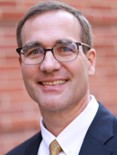
Title: Reliable Short-Blocklength Communication with Low Complexity Decoding
Date: Nov. 17, 2023, Fri.
Time: 9:15 AM
Venue: McDonnell Douglas Engineering Auditorium (MDEA)
ABSTRACT
This talk explores how to effectively transmit and decode the short messages that communicate control information in cellular communications and measurements and status updates from internet-of-things devices. While there are several techniques that can achieve (and in some cases out-perform) the random coding union upper bound on achievable frame error rate, the associated decoders typically have a high average complexity. This talk presents the concatenation of an expurgating linear function with a convolutional code as a technique that can outperform the RCU FER while requiring the average complexity of Viterbi decoding on a relatively small trellis. We will also explore communication of short messages with feedback, presenting new lower bounds on achievable rate for binary symmetric channel and a low complexity posterior-matching algorithm that achieves the lower bound.
SPEAKER'S BIOGRAPHY
Richard D. Wesel (Fellow, IEEE) received the B.S. and M.S. degrees in electrical engineering from the Massachusetts Institute of Technology in 1989, and the Ph.D. degree in electrical engineering from Stanford University in 1996. He is currently a Professor with the Electrical and Computer Engineering Department, UCLA, and an Associate Dean for Academic and Student Affairs for the Henry Samueli School of Engineering and Applied Science, UCLA. His research interests include communication theory with particular interest in low-density parity-check coding, short-blocklength communication with and without feedback, and coding for storage. He has received the National Science Foundation CAREER Award, the Okawa Foundation Award for research in information theory and telecommunications, and the Excellence in Teaching Award from the Samueli School of Engineering. He has served as an Associate Editor for Coding for the IEEE Transactions on Communications and the IEEE Transactions on Information Theory.
CPCC Seminar by Prof. Yunlong Cai
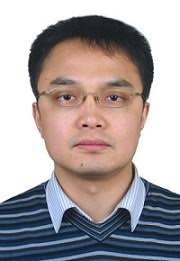
Title: Learning and Optimization for Next-Generation MIMO Communications
Date: Nov. 6, 2023, Mon.
Time: 11:00 AM
Venue: Harut Barsamian Colloquia (Engineering Hall 2430)
ABSTRACT
In this talk, I will introduce our recent work on effective beamforming design for massive multiuser MIMO and reconfigurable intelligent surface (RIS)-aided radar-communication coexistence (RCC) systems, respectively, via deep-unfolding and optimization techniques. In the first work, we propose a framework for deep-unfolding, where a general form of iterative algorithm induced deep-unfolding neural network (IAIDNN) is developed in matrix form to better solve the problems in communication systems. Then, we implement the proposed deep-unfolding framework to solve the sum rate maximization problem for beamforming design in massive multiuser MIMO systems. Specifically, the iterative algorithms are unfolded into a layer-wise structure, where a number of trainable parameters are introduced to replace the high complexity operations in the forward propagation. To train the network, a generalized chain rule of the IAIDNN is proposed to depict the recurrence relation of gradients between two adjacent layers in the back propagation. In the second work, we propose a double-RIS-assisted RCC system where two RISs are deployed for enhancing communication signals and suppressing mutual interference. We aim to jointly optimize the beamforming of RISs and radar to maximize communication performance while maintaining radar detection performance. The investigated problem is challenging, and thus we transform it into an equivalent but more tractable form by introducing auxiliary variables. Then, we propose a penalty dual decomposition (PDD)-based algorithm to solve the resultant problem. Simulation results verify the effectiveness of the proposed algorithms against the existing algorithms.
SPEAKER'S BIOGRAPHY
Yunlong Cai received the Ph.D. degree in electronic engineering from the University of York, U.K., in 2010. From 2010 to 2011, he was a Postdoctoral fellow with the Electronics and Communications Laboratory, CNAM, France. Since February 2011, he has been with the College of Information Science and Electronic Engineering, Zhejiang University, Hangzhou, China, where he is currently a Professor. He has also held research visiting appointments at Georgia Institute of Technology, McGill University and University of California Irvine. His research interests include transceiver design for multiple-antenna systems, cooperative and relay communications, UAV communications, and machine learning for communications. He has published over 200 journal and conference papers in these areas.
Dr. Cai currently serves as an Associate Editor for IEEE Transactions on Communications and a Senior Area Editor for IEEE Signal Processing Letters. He is the Lead Guest Editor of the special issue on “Next Generation Advanced Transceiver Technologies” of the IEEE Journal on Selected Areas in Communications. He was an Associate Editor for IEEE Signal Processing Letters from 2018 to 2023. He has served as the General Chair for the eighteenth IEEE International Symposium on Wireless Communications Systems, which was held in Hangzhou, in October 2022. He regularly sits on the technical program committee boards of prominent IEEE conferences, such as ICC, GLOBECOM, and VTC.
CPCC Seminar by Prof. Jorge Salazar-Cerreno
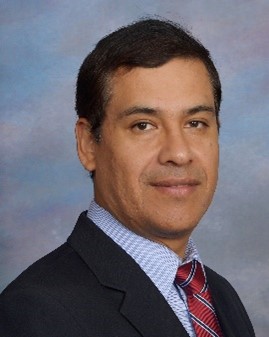
Title: Design Aspects of Multifuntion Phased Array Radars and Future Research Directions
Date: Aug. 3, 2023, Thu.
Time: 11:00 AM
Venue: Harut Barsamian Colloquia (Engineering Hall 2430)
ABSTRACT
The rapid advancement of RF technology has opened up new possibilities for the development of innovative phased array architectures, revolutionizing communication, autonomous sensing, remote sensing, and weather observation capabilities. These cutting-edge phased arrays offer unparalleled performance, incorporating several key features that significantly enhance their functionality. One notable aspect of these new phased array architectures is their ability to achieve fast volumetric scanning updates in less than 20 seconds. Additionally, they boast wide-scanning capabilities, spanning an impressive range of 90 to 120 degrees.
This presentation aims to shed light on the exciting potentials of these novel phased array architectures and their transformative impact on diverse fields, ranging from communication to remote sensing and weather observation. The remarkable features of fast volumetric scanning, wide-scanning range, and ultra-low cross-polarization isolation signify a new era of RF technology, offering unprecedented capabilities and opportunities for various applications.
SPEAKER'S BIOGRAPHY
Jorge L. Salazar-Cerreno received a B.S. In ECE from the University Antenor Orrego, Trujillo, Peru, M.S. degree in ECE from the University of Puerto Rico, Mayaguez (UPRM). In 2011, he received his Ph.D. degree in ECE from the University of Massachusetts, Amherst. His Ph.D. research focused on development of low-cost dual-polarized active phased array antennas (APAA) for the Engineering Research Center for Collaborative Adaptive Sensing of the Atmosphere (CASA). After graduation, Dr. Salazar-Cerreno was awarded a prestigious National Center for Atmospheric Research (NCAR) Advanced Study Program (ASP) postdoctoral fellowship. At NCAR, he worked at the Earth Observing Laboratory (EOL) division developing airborne technology for two-dimensional, electronically scanned, dual-pol phased array radars for atmospheric research. This is a critical tool for studying weather and related hazards, especially for retrieving dynamic and microphysical characteristics of clouds and precipitation over rugged terrain or the open ocean, where other radar systems can have major limitations. In July 2014, he joined the Advanced Radar Research Center (ARRC) at The University of Oklahoma as a research scientist, and became an associate professor at the School of Electrical and Computer Engineering in August 2021. His research interests include high-performance, broadband antennas for dual-polarized phased array radar applications; array antenna architecture for reconfigurable radar systems; APAA; Tx/Rx modules; radome EM modeling; RF and hardware development for characterizing and calibrating APAA and millimiter-waver antennas. In 2019, Dr. Salazar has been awarded a William H. Barkow Presidential Professorship. Presidential Professors inspire their students, mentor their undergraduate and graduate students in the process of research and creative scholarly activity within their discipline, and exemplify to their students and their colleagues the ideals of a scholar through their endeavors in teaching; research and creative scholarly activity; and professional and university service and public outreach. Dr. Salazar is a senior member of the IEEE and currently serves as a reviewer for IEEE Transactions on Antennas and Propagation (TAP), IET Microwaves, Antennas and Propagation (IET), the Journal of Atmospheric and Oceanic Technology (JTECH), IEEE Transactions on Geoscience and Remote Sensing (TGARS), John Wiley and Sons, and the Radio Science Journal.
CPCC Seminar by Prof. Kit Wong
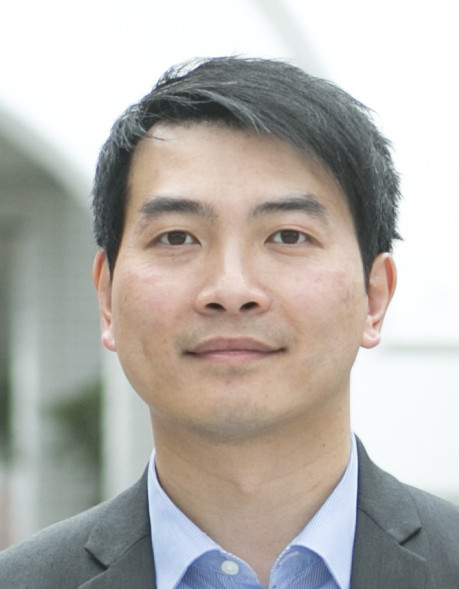
Title: NGMA: Fluid Antenna Multiple Access
Date: Aug. 2, 2023, Wed.
Time: 11:00 AM
Venue: Harut Barsamian Colloquia (Engineering Hall 2430)
ABSTRACT
"Be formless ... shapeless, like water!", which were the words used by Bruce Lee, as he was revealing the philosophy of Jeet Kune Do, the martial arts system Lee founded in 1967. Many parallels can be drawn in wireless communications technologies where engineers have been seeking greater flexibility in using the spectral and energy resources for improving network performance. In this talk, I will speak on some new ideas for improving wireless communications performance, particularly in massive connectivity scenarios, using a novel antenna technology, referred to as fluid antenna. This talk also discusses the potential of using fluid antenna multiple access in the reconfigurable intelligent surface (RIS) aided wireless communication systems.
SPEAKER'S BIOGRAPHY
(Kit) Kai-Kit Wong received the BEng, the MPhil, and the PhD degrees, all in Electrical and Electronic Engineering, from the Hong Kong University of Science and Technology, Hong Kong, in 1996, 1998, and 2001, respectively. He is Chair Professor of Wireless Communications at the Department of Electronic and Electrical Engineering, University College London, His current research centers around 6G mobile communications. He is one of the early researchers who proposed multiuser MIMO. His first paper on multiuser MIMO was published in WCNC 2000 which appeared to be the first research paper on this topic. He is Fellow of IEEE and IET. He currently serves as the Editor-in-Chief for IEEE Wireless Communications Letters.
CPCC Seminar by Prof. Angel Lozano
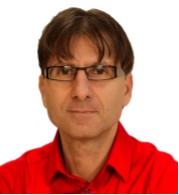
Title: MIMO and Smart Surfaces: A Marriage Made in Heaven
Date: July 11, 2023, Tue.
Time: 11:00 AM
Venue: Harut Barsamian Colloquia (Engineering Hall 2430)
ABSTRACT
We are in the midst of a tidal transformation in the conditions in which wireless systems operate, with a determined push towards higher frequencies (today mmWave, tomorrow sub-terahertz) and shorter transmission ranges. This is stretching, even breaking, time-honored modelling assumptions such as that of planar wavefronts. And, once that classic paradigm is transcended, the opportunity arises for spatial multiplexing even when no multipath components are present. In particular, a smart surface can then augment the number of spatial degrees of freedom even as the transmitter and receiver apertures remain fixed. This possibility, which is revealed only as the curved nature of the wavefronts is accounted for, results from the smart surface acting as a lens that enables resolving denser spatial multiplexings. This presentation posits that, besides the more obvious benefits of enhancing the received power and sidestepping blockages, the true potential of smart surfaces might lie in serving as environmental apertures: multipath propagation on steroids, controllable, and on-demand.
SPEAKER'S BIOGRAPHY
Angel Lozano is a Professor at Univ. Pompeu Fabra (UPF) in Barcelona. He received the Ph.D. degree from Stanford University in 1998. In 1999, he joined Bell Labs (Lucent Technologies, now Nokia), where he was a member of the Wireless Communications Research Department until 2008. Between 2005 and 2008 he was also an Adj. Associate Professor at Columbia University. Prof. Lozano is a Fellow of the IEEE. He has been Area Editor for the IEEE Transactions on Wireless Communications and an Editor for the IEEE ComSoc Technology News, the IEEE Transactions on Information Theory, the IEEE Transactions on Communications, and the Journal of Communications & Networks; he has guest-edited various journal special issues and is actively involved in committees and conference organization tasks for the IEEE. In particular, he has been Chair of the IEEE Communication Theory Technical Committee and an elected member of the Board of Governors of the IEEE Communications Society. Prof. Lozano is the coauthor of the textbook "Foundations of MIMO Communication," released by Cambridge University Press in 2019. His papers have received several awards, including the 2009 Stephen O. Rice prize, the 2016 Fred W. Ellersick prize, and the 2016 Communications Society & Information Theory Society joint paper award. He also received an ERC Advanced Grant for the period 2016-2022 and was a 2017 Highly Cited Researcher.
CPCC Seminar by Prof. Krishna Narayanan
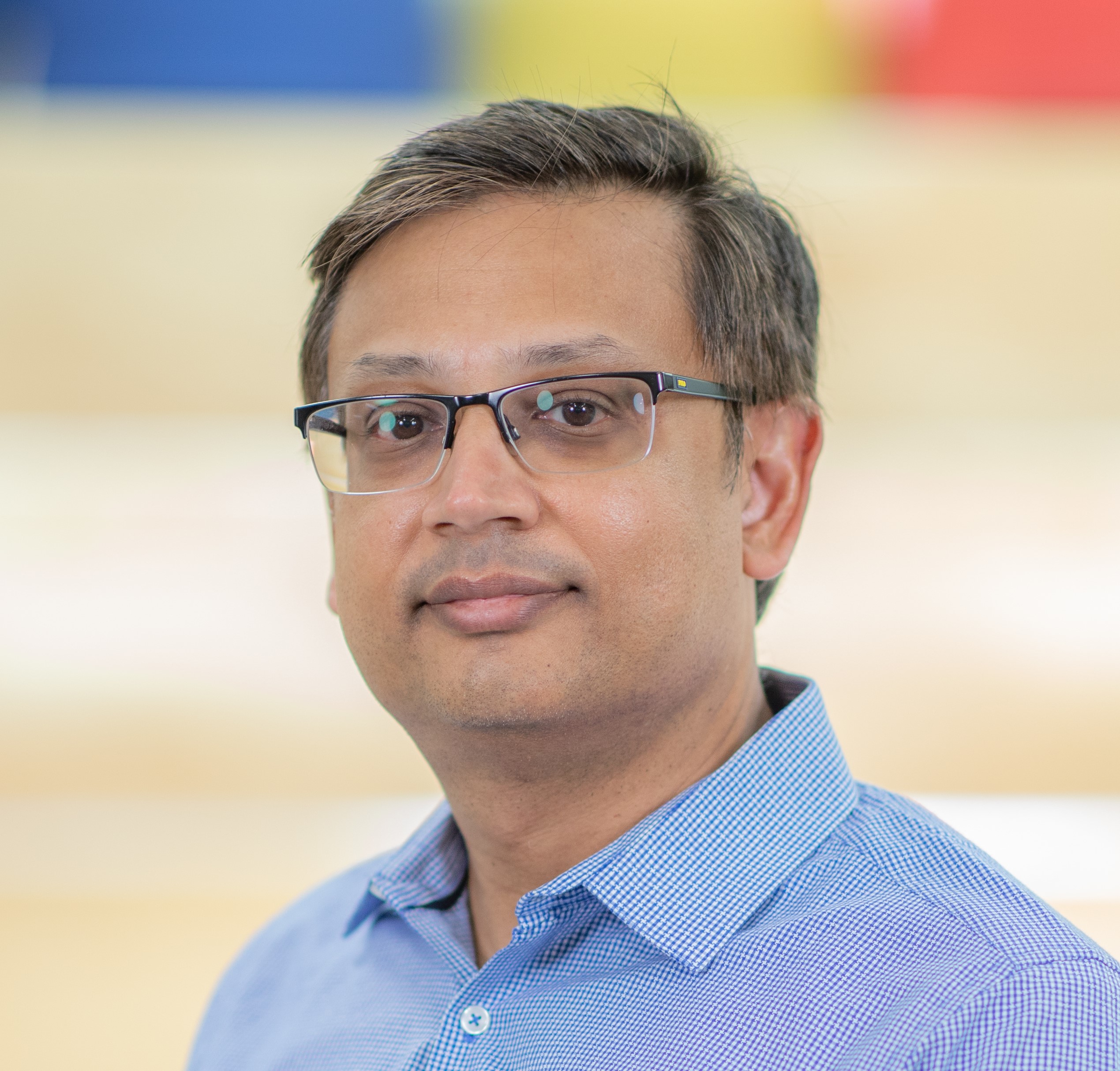
Title: Connections between Unsourced Multiple Access and Sparse Recovery
Date: Apr. 27, 2023, Thu.
Time: 3:00 PM
Venue: Harut Barsamian Colloquia (Engineering Hall 2430)
ABSTRACT
Multiple access communication has been studied extensively in information theory and wireless communications for several decades. Simultaneously, sparse recovery problems including compressed sensing, group testing, neighbor discovery in wireless networks, and data stream computing have also been studied in depth within their respective research communities. Although connections between multiple access and sparse recovery were pointed out as early as the 1980s, these fields have emerged mostly independently.
A particular version of multiple access communication, called unsourced multiple access has become very popular recently due to its relevance for the Internet of Things and Grant-free multiple access in 5G cellular standards. In this talk, we will show that there are strong connections between designing encoding and signal processing schemes for unsourced multiple access, and designing sensing matrices and recovery algorithms for sparse recovery problems in large dimensions. We will show how these connections can be gainfully exploited for designing algorithms with manageable complexity for both unsourced multiple access and sparse recovery. Our proposed techniques have applications in massive multiple access, neighbor discovery, lossy compressed sensing, heavy hitters problems, and group testing.
This is joint work with Prof. Jean-Francois Chamberland and several former and current graduate students at Texas A&M University.
SPEAKER'S BIOGRAPHY
Krishna Narayanan is the Eric D. Rubin professor in the Dept. of Electrical and Computer Engineering at Texas A&M University. He is currently on sabbatical visiting Qualcomm as a Research Associate. His research interests are broadly in coding theory, information theory, and signal processing with applications to wireless communications, data storage and data science. His current research interests are in the design of uncoordinated multiple access schemes, joint source and channel coding, coding for distributed computing, exploring connections between sparse signal recovery and coding theory, and analyzing data defined on graphs. He recently received the 2022 joint communications society and information theory best paper award, and 2020 and 2006 best paper awards in data storage from the IEEE communications society. He was elected a Fellow of the IEEE for contributions to coding for wireless communications and data storage.
CPCC Seminar by Prof. Italo Atenzi
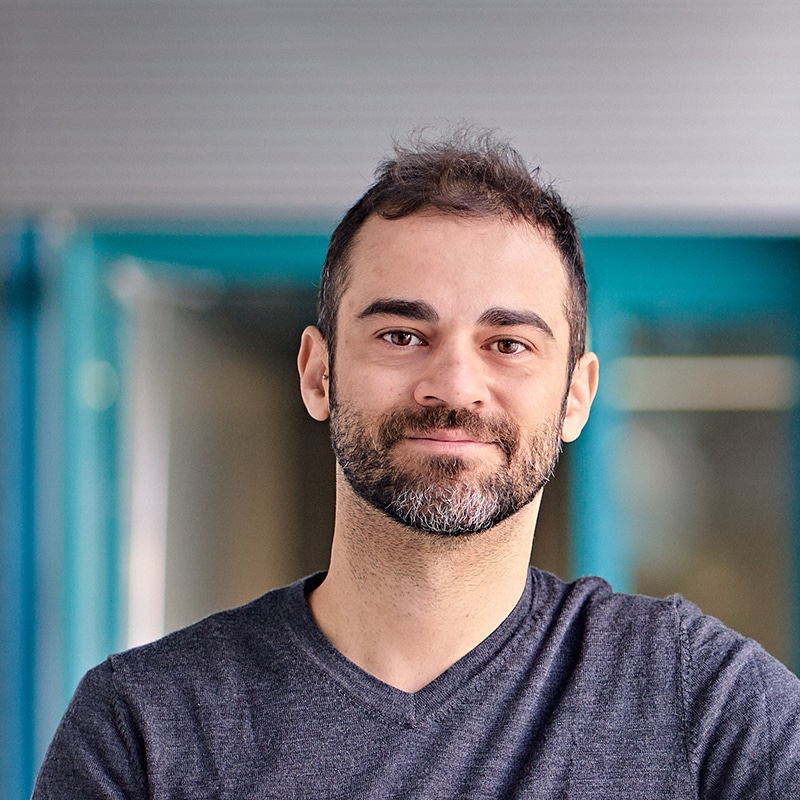
Title: Introduction to 1-Bit Massive MIMO: Channel Estimation and Data Detection
Date: Apr. 14, 2023, Fri.
Time: 10:00 AM
Venue: Harut Barsamian Colloquia (Engineering Hall 2430)
ABSTRACT
Beyond-5G wireless systems are expected to exploit the large amount of bandwidth available in the (sub-)THz band. This will require operating across massive frequency and antenna dimensions, which calls for radical simplifications in the radio-frequency architecture. This presentation will provide an introduction to fully digital massive multiple-input multiple-output (MIMO) architectures with 1-bit analog-to-digital converters (ADCs), which are considered a promising physical-layer enabler of (sub-)THz communications. The presentation will be in a tutorial style and will describe the fundamentals of channel estimation and data detection with 1-bit ADCs, along with comparisons with the unquantized case. Some recent analytical results and practical insights into the system design of 1-bit massive MIMO systems will be discussed.
SPEAKER'S BIOGRAPHY
Italo Atzeni received the MSc degree (Hons.) in telecommunications engineering from the University of Cagliari, Italy, in 2010 and the PhD degree (Hons.) in signal theory and communications from the Polytechnic University of Catalonia–BarcelonaTech, Spain, in 2014. Since 2019, he is with the Centre for Wireless Communications, University of Oulu, Finland, where he is currently an Assistant Professor and Academy of Finland Research Fellow 2022–2027. From 2014 to 2017, he was a Researcher with the Mathematical and Algorithmic Sciences Laboratory, Paris Research Center, Huawei Technologies, France. From 2017 to 2018, he was a Research Associate with the Communication Systems Department, EURECOM, France. He previously held a visiting research appointment at The Hong Kong University of Science and Technology, Hong Kong, in 2013. His primary research interests are in communication theory, statistical signal processing, convex and distributed optimization theory, and their applications to low-complexity, energy-efficient solutions for multi-antenna communications.
CPCC Seminar by Prof. Antti Tolli
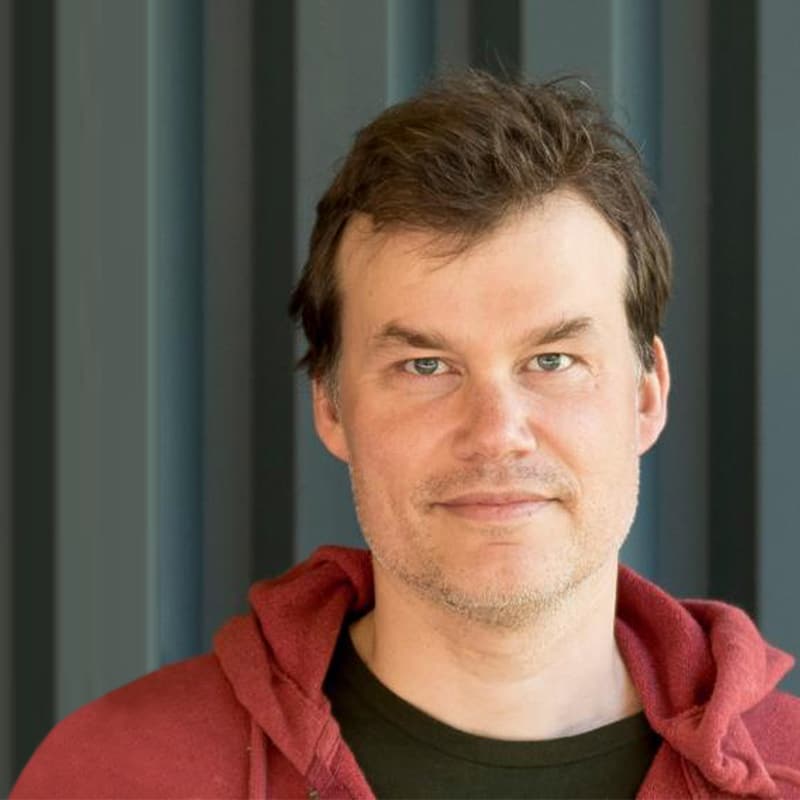
Title: Distributed Unicast and Multicast Precoding Design via Over-the-Air Signaling for Cell-Free Massive MIMO
Date: Apr. 14, 2023, Fri.
Time: 10:45 AM
Venue: Harut Barsamian Colloquia (Engineering Hall 2430)
ABSTRACT
Most works on cell-free massive multiple-input multiple-output (MIMO) consider non-cooperative precoding strategies at the base stations (BSs) to avoid extensive channel state information (CSI) exchange via backhaul signaling. However, considerable performance gains can be achieved by allowing for (limited) coordination among the BSs. This talk introduces a fully distributed framework for cooperative precoding design in cell-free massive MIMO (and, more generally, in joint transmission coordinated multi-point) systems that entirely eliminates the need for backhaul signaling for CSI exchange. The proposed novel over-the-air (OTA) signaling mechanism allows each BS to obtain the same cross-term information that is traditionally exchanged among the BSs via backhaul signaling. To design the joint network-wide unicast and multi-group multicast precoders at the BSs and the combiners at the user equipment (UE) in a fully distributed fashion, we adopt an iterative bi-directional training scheme with UE-specific and/or group-specific precoded uplink and downlink pilots. The proposed distributed precoding designs enjoy desirable flexibility and scalability properties, as the amount of OTA signaling does not scale with the number of BSs or UEs. Numerical results show fast convergence and remarkable performance gains compared with non-cooperative precoding designs. The proposed schemes can also outperform centralized precoding designs under realistic CSI acquisition.
SPEAKER'S BIOGRAPHY
Antti Tölli (M'08, SM'14) is a Professor at the Centre for Wireless Communications (CWC), University of Oulu. He received his Dr.Sc. (Tech.) degree in electrical engineering from the University of Oulu, Finland, in 2008. From 1998 to 2003, he worked at Nokia Networks as a Research Engineer and Project Manager in both Finland and Spain. In May 2014, he was granted a five-year (2014-2019) Academy Research Fellow post by the Academy of Finland. During the academic year 2015-2016, he visited EURECOM in Sophia Antipolis, France, while from August 2018 to June 2019, he visited the University of California, Santa Barbara, USA. He has authored numerous papers in peer-reviewed international journals and conferences and holds several patents in the area of signal processing and wireless communications. His research interests include radio resource management and transceiver design for broadband wireless communications, with a special emphasis on distributed interference management in heterogeneous wireless networks. From 2017 to 2021, he served as an Associate Editor for the IEEE Transactions on Signal Processing.
CPCC Seminar by Prof. Shunqiao Sun
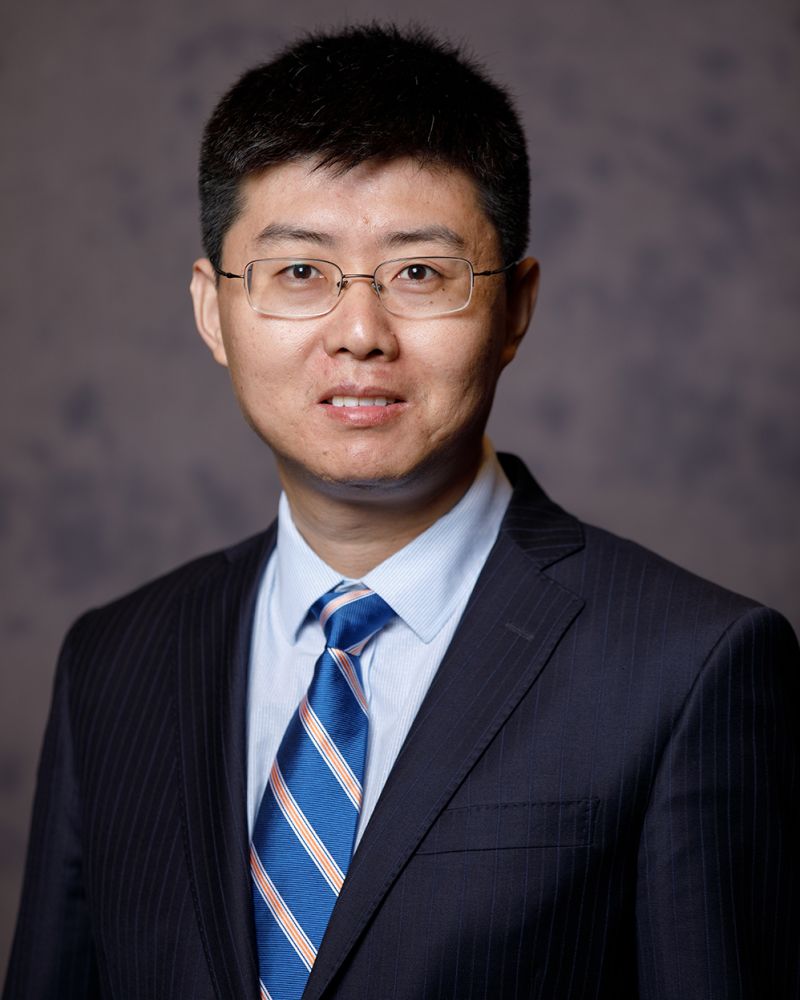
Title: Automotive Radar for Autonomous Driving: Signal Processing Meets Deep Learning
Date: Apr. 12, 2023, Wed.
Time: 10:00 AM
Venue: Harut Barsamian Colloquia (Engineering Hall 2430)
ABSTRACT
Millimeter-wave automotive radar emerges as one of key sensing modalities for autonomous driving, providing high resolution in four dimensions (4D), i.e., range, Doppler, and azimuth and elevation angles, yet remain a low cost for feasible mass production. In this talk, we will address the challenges in automotive radar for autonomous driving, examine how signal processing and deep learning can be combined to optimize the performance of automotive radar systems, and outline future research directions. Our focus will be on the generation of high-resolution radar imaging using multi-input multi-output (MIMO) radar and frequency-modulated continuous-wave (FMCW) technology. We will examine the challenges of waveform orthogonality, mutual interference, and sparse antenna array design and present our recent innovations in the field, including sparse array interpolation via forward-backward Hankel matrix completion, fast direction-of-arrival estimation via unrolling iterative adaptive approach, and adaptive beamforming via deep reinforcement learning, leading to the generation of high-resolution low-level automotive radar imaging, represented in bird's-eye view (BEV) format, providing rich shape information for object detection and recognition with deep neural networks. However, the radar BEVs are in general hardly shift-invariant over both angle and range since not every pixel is generated equally. The talk will highlight the importance of physics-aware machine learning in perception task on high-resolution radar imaging. We will show how incorporating radar domain knowledge and signal structure into deep neural network design can lead to more accurate and reliable object detection and recognition. Finally, we will discuss future research directions, including integrated sensing and communication, and collaborative radar imaging via an automotive radar network.
SPEAKER'S BIOGRAPHY
Shunqiao Sun received the Ph.D. degree in Electrical and Computer Engineering from Rutgers, The State University of New Jersey in Jan. 2016. He is currently an assistant professor at The University of Alabama, Tuscaloosa, AL, USA. From 2016-2019, he was with the radar core team of Aptiv, Technical Center Malibu, California, where he has worked on advanced radar signal processing and machine learning algorithms for self-driving vehicles and lead the development of DOA estimation techniques for next-generation short-range radar sensor which has been used in over 120-million automotive radar units. His research interests lie at the interface of statistical and sparse signal processing with mathematical optimizations, automotive radar, MIMO radar, machine learning, and smart sensing for autonomous vehicles. Dr. Sun has been awarded 2016 IEEE Aerospace and Electronic Systems Society Robert T. Hill Best Dissertation Award for his thesis “MIMO radar with Sparse Sensing”. He authored a paper that won the Best Student Paper Award at 2020 IEEE Sensor Array and Multichannel Signal Processing Workshop (SAM). He is Vice Chair of IEEE Signal Processing Society Autonomous Systems Initiative (ASI) Steering Committee (2023-2024). He is a Senior Member of IEEE.
CPCC Seminar by Dr. Nader Moayeri
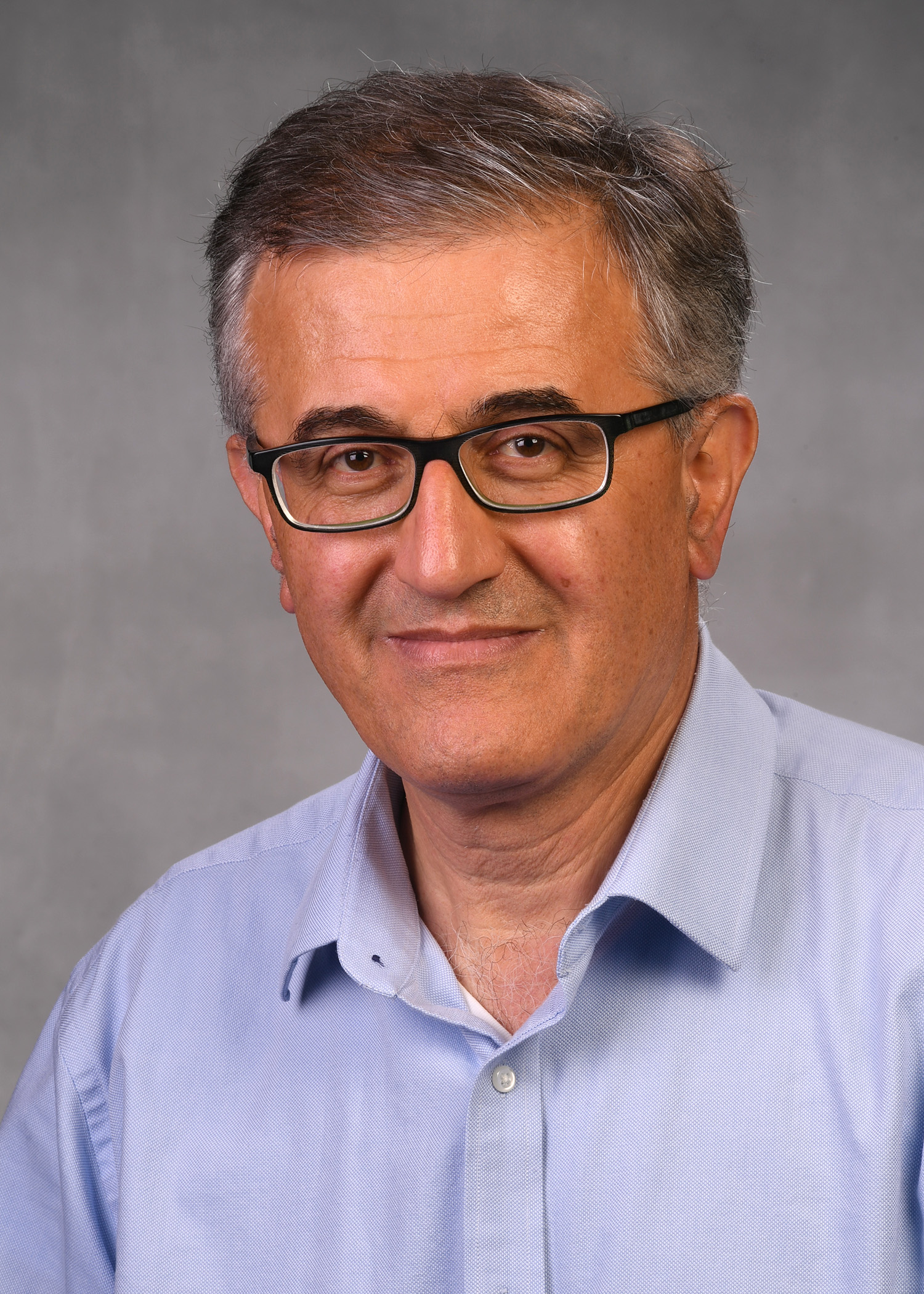
Title: Electronic Contact Tracing and Exposure Notification: Does it really work?
Date: Mar. 2, 2023, Thu.
Time: 11:00 AM
Venue: Harut Barsamian Colloquia (Engineering Hall 2430)
ABSTRACT
COVID-19 has wreaked havoc around the world since late 2019. More than one million people have lost their lives due to COVID-19 in the US alone. Contact tracing can blunt the spread of highly infectious diseases, particularly in the early stages of a pandemic. Electronic contact tracing and exposure notification have many advantages over traditional manual contact tracing.
Smartphone apps for proximity detection and exposure notification based on the Bluetooth Low Energy (BSE) Received Signal Strength Indicator (RSSI) were developed and deployed in at least 26 states in the US and 40 countries around the world. NIST collected a comprehensive set of BLE RSSI data in various operational scenarios in the summer of 2020. We have thoroughly analyzed that data and evaluated the performance of various proximity detection methods. In this talk we show that such methods are not effective in the task they are expected to do.
NIST has also developed a prototype wearable proximity detection device based on a Raspberry Pi platform and using ultrasonic signals for range estimation. We show that this alternative approach provides accurate ranging and hence reliable proximity detection needed for electronic contact tracing and exposure notification.
SPEAKER'S BIOGRAPHY
Nader Moayeri has been with the National Institute of Standards and Technology (NIST) since 1997, where he founded the Wireless Communications Technologies Group and managed it for 11 years. His present research interests are in wireless networking, indoor localization and tracking, and IoT/CPS.
He was with the Imaging Technology Department at Hewlett-Packard Laboratories, Palo Alto, CA, from 1994 to 1997 and on the faculty of the Department of Electrical and Computer Engineering at Rutgers, The State University of New Jersey, from 1986 to 1994. He received a Ph.D. in Electrical Engineering-Systems from the University of Michigan in 1986.
CPCC Seminar by Prof. Upamanyu Madhow
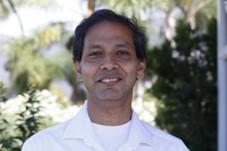
Title: NextG Signal Processing Architectures: from mmWave to Deep Learning
Date: Feb. 17, 2023, Fri.
Time: 9:15 AM
Venue: McDonnell Douglas Engineering Auditorium (MDEA)
ABSTRACT
We illustrate in this talk the importance of a signal processing
perspective for the design of NextG infrastructures by discussing a
selection of problems from three application areas: communication, sensing
and inference.
1) Communication: We discuss recent work in hardware/signal processing
co-design for realizing the immense potential of the mmWave/THz frequency
bands for communication. Our goal is to scale "mostly digital" transceiver
architectures while exploiting 10s of GHz of channel bandwidth and 100s of
antennas. We introduce architectures and algorithms which seek to address
hardware bottlenecks such as phase noise, nonlinearities, and low-precision
analog-to-digital conversion. Key concepts include spatial oversampling,
exploiting the availability of a massive number of antenna elements, and
beamspace processing, exploiting the sparsity of the mmWave channel.
2) Sensing: We introduce a novel compressive MIMO radar architecture that is
well matched to the concept of Joint Communication and Sensing (JCAS). The
architecture exploits large RF beamforming antenna array technologies
developed for communication in a manner that increases range while
maintaining a large field of view and enhancing spatial resolution.
3) Inference: Deep neural networks (DNNs) are pervasive in our cyberlives,
but they are brittle black boxes that cannot be trusted in safety-critical
applications. With standard end-to-end DNN training, we do not control or
understand the features being extracted. We advocate supplementing
end-to-end training with a signal processing approach explicitly aimed at
shaping features at intermediate layers of the DNN, and report on
encouraging preliminary results on enhanced robustness via feature shaping
motivated by communication theory and neuroscience.
SPEAKER'S BIOGRAPHY
Upamanyu Madhow is Distinguished Professor of Electrical and Computer
Engineering at the University of California, Santa Barbara. His current
research interests focus on next generation communication, sensing and
inference infrastructures, with emphasis on millimeter wave systems, and on
fundamentals and applications of robust machine learning. Dr. Madhow is a
recipient of the 1996 NSF CAREER award, co-recipient of the 2012 IEEE
Marconi prize paper award in wireless communications, and recipient of a
2018 Distinguished Alumni award from the ECE Department at the University of
Illinois, Urbana-Champaign. He has served as Associate Editor for the IEEE
Transactions on Communications, the IEEE Transactions on Information Theory,
and the IEEE Transactions on Information Forensics and Security. He is the
author of two textbooks published by Cambridge University Press,
Fundamentals of Digital Communication (2008) and Introduction to
Communication Systems (2014). Prof. Madhow is co-inventor on 31 US patents,
and has been closely involved in technology transfer of his research through
several start-up companies, including ShadowMaps, a software-only approach
to GPS location improvement which has been deployed worldwide by Uber.
CPCC Distinguished Seminar by Prof. P. P. Vaidyanathan
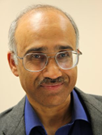
Title: Srinivasa Ramanujan and Signal Processing
Date: Feb. 3, 2023, Fri.
Time: 9:15 AM
Venue: McDonnell Douglas Engineering Auditorium (MDEA)
ABSTRACT
The great mathematician Srinivasa Ramanujan introduced a summation in
1918, today called the Ramanujan-sum. For many years this summation was used by
mathematicians to prove important results in number theory. In recent years, some
researchers have found applications of this sum in digital signal processing,
especially in identifying periodic components of signals buried in noise. In our
recent work we have generalized the Ramanujan-sum decomposition in several
directions, and this has opened up some new theory as well as applications. Many
beautiful properties are enjoyed by the new representations, thanks to the genius
and vision of Ramanujan. In this lecture we briefly talk about Ramanujan as a
person and give an overview of the new signal processing developments.
Applications in signal denoising, and in the study of DNA and protein sequences will
be presented among others.
SPEAKER'S BIOGRAPHY
Prof. Vaidyanathan is the Kiyo and Eiko Tomiyasu Professor of
Electrical Engineering at the California Institute of Technology where he has been
on the faculty since 1983. He also served as the department head for the period
2002-2005. He has authored more than 500 papers in the areas of digital signal
processing and communications, and several of his papers have received prizes
from the IEEE. He is the author/coauthor of four books, and a Life Fellow of the
IEEE. Some of his recognitions include the F. E. Terman Award of the American
Society for Engineering Education, the IEEE CAS Society's Golden Jubilee Medal, and
several awards for excellence in teaching at the California Institute of Technology,
including the Northrop-Grumman prize for excellence in teaching. He has also
received the IEEE Signal Processing Society's Technical Achievement Award,
Education Award, and the "Society Award". He received the IEEE Gustav Robert
Kirchhoff Award (an IEEE Technical Field Award) in 2016 for "Fundamental
contributions to digital signal processing," and the EURASIP Athanasios Papoulis
award in 2021. He is a Fellow of the Indian National Academy of Engineering, and a
member of the U.S. National Academy of Engineering.
CPCC Seminar by Dr. Abdulkadir Celik
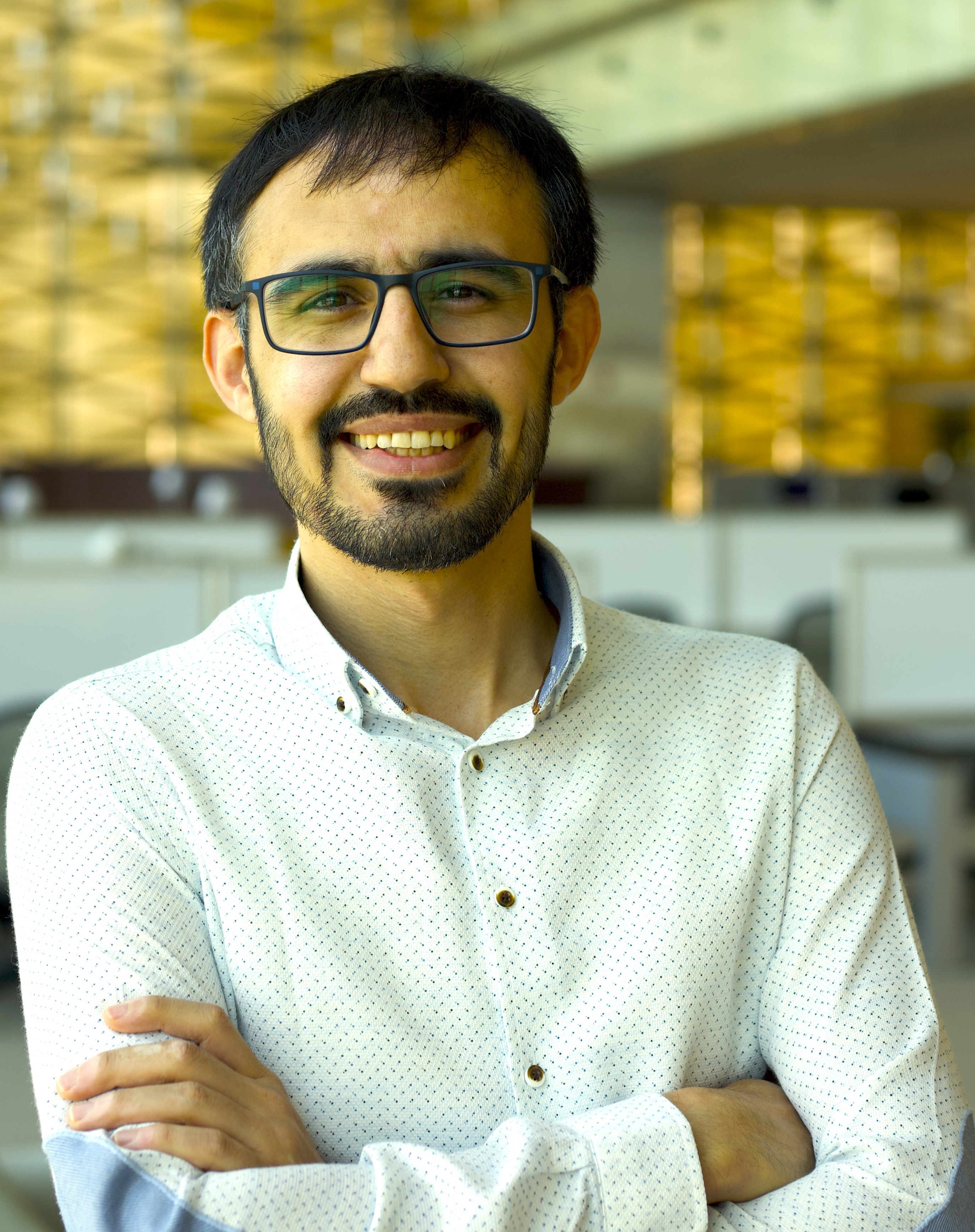
Title: Deployment Strategies and Trajectory Planning for Airborne Wireless Networks
Date: Jan. 12, 2023, Thu.
Time: 10:45 AM
Venue: Harut Barsamian Colloquia (Engineering Hall 2430)
ABSTRACT
Beyond the fifth generation (B5G) wireless networks aim to substantially improve three main service classes: enhanced mobile broadband, massive machine-type communications, and ultra-reliable low-latency communications. Given the spatiotemporal variations in cellular data traffic, a flexible and on-demand base station (BS) deployment is necessary to fulfill such contradictory objectives in real-time. To this end, UAVs have recently gained tremendous interest and brought a major paradigm shift to the terrestrial network-dominated cyberinfrastructure. With this seminar, the audience will gain a deep insight into how UAVs can assist terrestrial wireless networks in two ways: providing connectivity to areas with limited/no infrastructure and improving the quality of service in hot-spot regions of ultra-dense wireless networks. The seminar will show how various research tools (e.g., reinforcement learning, stochastic geometry, optimization theory) can be used to develop deployment strategies and trajectory planning approaches for different objectives and UAV types.
SPEAKER'S BIOGRAPHY
Abdulkadir Celik received an M.S. degree in electrical engineering in 2013, an M.S. degree in computer engineering in 2015, and the Ph.D. degree in co-majors of electrical engineering and computer engineering in 2016 from Iowa State University, Ames, IA, USA. He was a post-doctoral fellow at King Abdullah University of Science and Technology (KAUST) from 2016 to 2020. He is currently a research scientist at the communications and computing systems laboratory at KAUST. His research interests are in the areas of wireless communication systems and networks. He has been a technical committee member of various symposia at flagship conferences of the IEEE Communications Society and IEEE Vehicular Technology Society. Dr. Celik is a senior member of IEEE and associate editor for both the IEEE COMMUNICATIONS LETTERS and IEEE WIRELESS COMMUNICATIONS LETTERS.
CPCC Seminar by Dr. Asmaa Abdallah
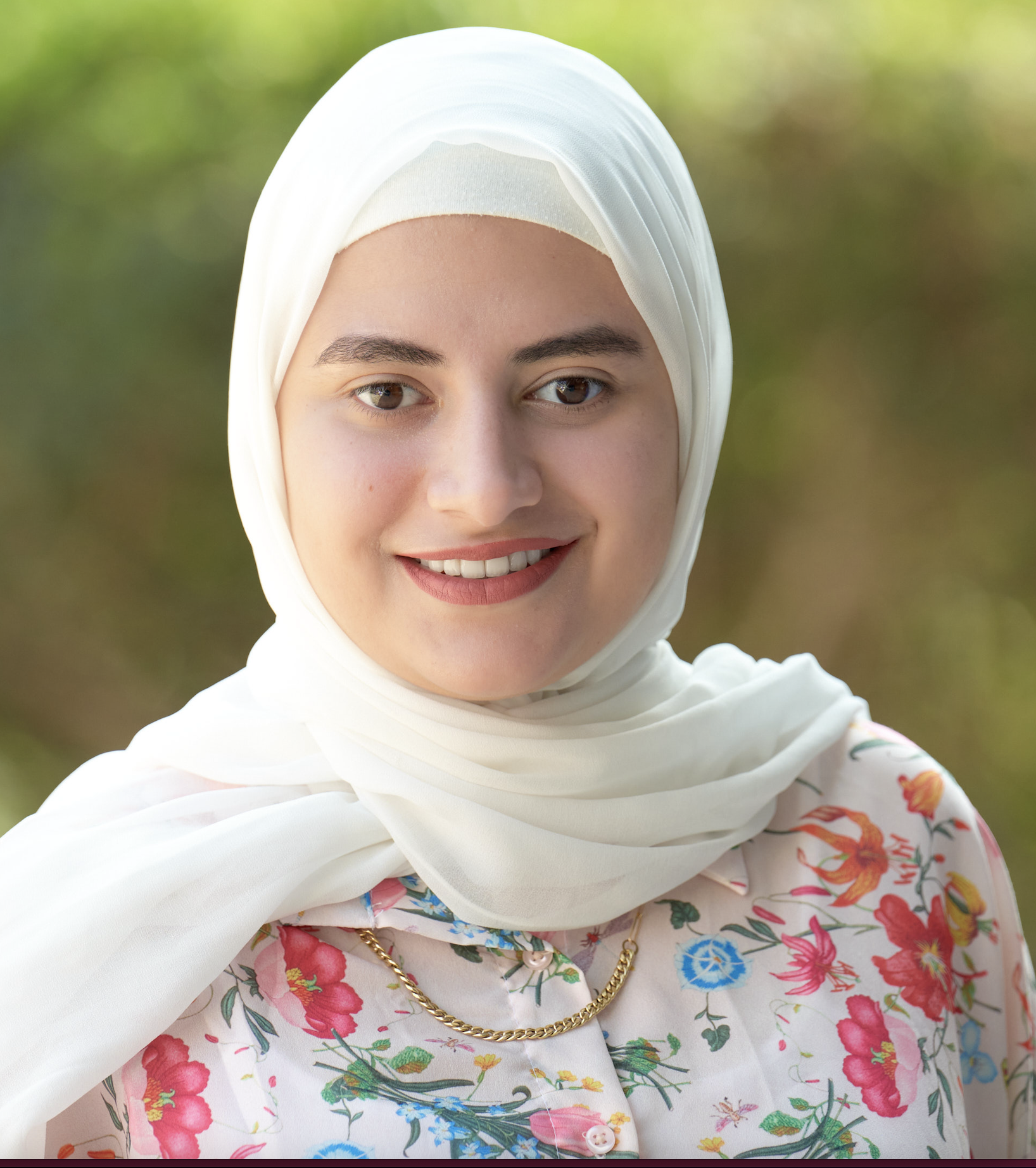
Title: Deep Learning Empowered Solutions for mmWave RIS-aided Systems
Date: Jan. 12, 2023, Thu.
Time: 11:30 AM
Venue: Harut Barsamian Colloquia (Engineering Hall 2430)
ABSTRACT
With the ever-increasing demand for higher throughput, cellular operators are struggling to meet the requirements for fast mobile data connectivity and more data traffic for social media, online gaming and smart home applications. These escalating demands of mobile applications have shaped the design of the upcoming sixth generation (6G), which is expected to offer unprecedented levels of connectivity, and quality of service. Reconfigurable intelligent surface (RIS) has emerged as a promising technology for 6G to assist the mobile networks, however, its deployment is non-trivial due to the channel estimation and beamforming challenges. Deep learning methods have come to the rescue due to their powerful capabilities to solve complex problems. Therefore, we present our learning-based approaches for channel estimation and beamforming problems for RIS-assisted wireless networks. The proposed solutions are expected to have a significant impact on emerging wireless systems in boosting system capacity with improved robustness and high data rates, via a low-cost, low-latency, and green implementation.
SPEAKER'S BIOGRAPHY
Asmaa Abdallah is a Post-Doctoral Fellow at King Abdullah University of Science and Technology (KAUST). In 2020, she received the Ph.D. degree in Electrical and Computer Engineering at the American University of Beirut (AUB), Beirut, Lebanon. She received the M.S degree and B.S. degree (with High Distinction) in Computer and Communications Engineering from Rafik Hariri University (RHU), Lebanon in 2013 and 2015, respectively. Through her academic years, Dr. Abdallah was the recipient of a scholarship from the Lebanese National Counsel for Scientific Research (CNRS-L/AUB) to support her doctoral studies and received the Academic Excellence Award at RHU in 2013 for ranking first in the graduating class.
Her research interests include communication theory, stochastic geometry for wireless communications, machine learning for wireless communications, array signal processing, with emphasis on energy and spectral efficient algorithms for emerging wireless communication technologies. During her time at AUB, she served as an executive committee member of many societies including the Institute of Electrical and Electronics Engineers (IEEE), IEEE Young Professionals, and IEEE Women in Engineering, where she was instrumental in organizing national conferences and outreach events for young engineers.
She was selected as one of 15 leading innovators under 35 years old in the Middle East by MIT technology review.
CPCC Seminar by Prof. Tommy Svensson
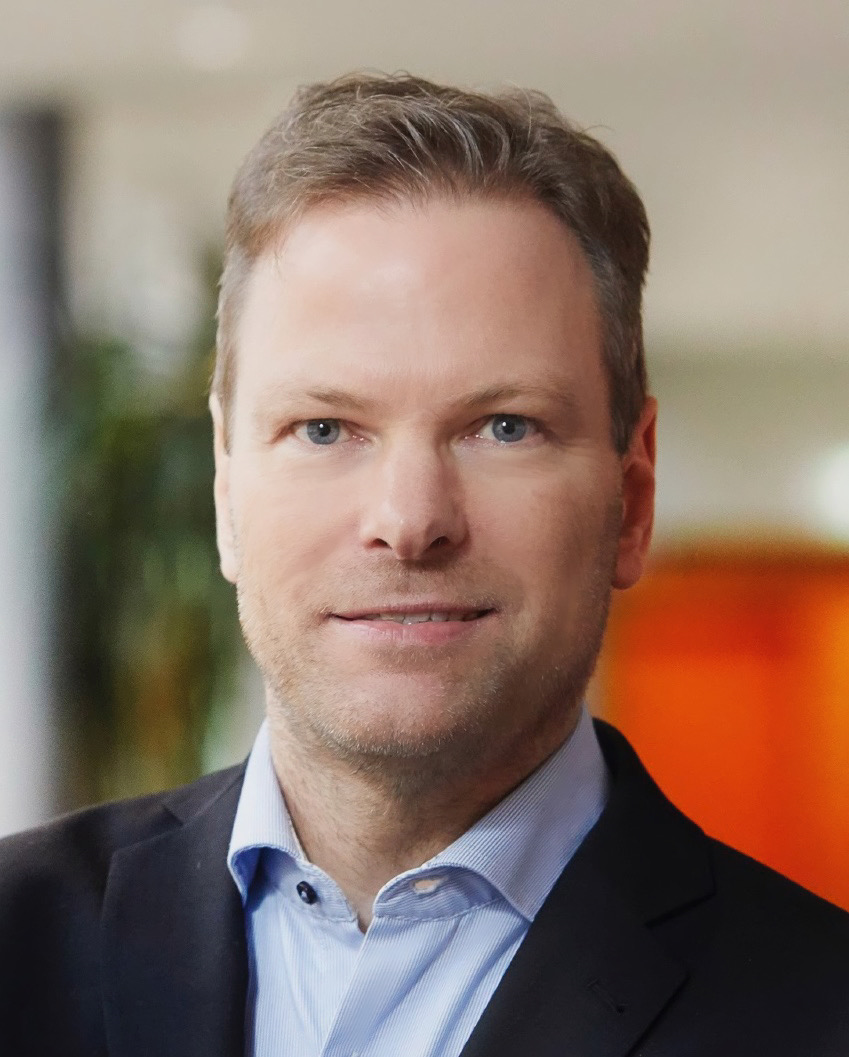
Title: Distributed large MIMO and reconfigurable intelligent surfaces for 6G
Date: Oct. 28, 2022, Fri.
Time: 1:00 PM
Venue: Harut Barsamian Colloquia (Engineering Hall 2430)
ABSTRACT
Research towards the 6th generation (6G) of mobile communications is ongoing. In this talk I will introduce our ongoing research towards 6G at Chalmers with a special focus on distributed large MIMO (D-MIMO) and reconfigurable intelligent surfaces (RIS). D-MIMO and RISs are promising techniques to meet the envisioned required capabilities in 6G on communications, localization and sensing due to their potential of densification that will enable both more efficient, reliable, high capacity and low latency communications, as well as more accurate localization and sensing.
SPEAKER'S BIOGRAPHY
Tommy Svensson is Full Professor in Communication Systems at Chalmers University of Technology in Gothenburg, Sweden, where he is leading the Wireless Systems research on air interface and wireless backhaul networking technologies for future wireless systems.
He received a Ph.D. in Information theory from Chalmers in 2003, and he has worked at Ericsson AB with core networks, radio access networks, and microwave transmission products.
He was involved in the European WINNER and ARTIST4G projects that made important contributions to the 3GPP LTE standards, the EU FP7 METIS and the EU H2020 5GPPP mmMAGIC and 5GCar projects towards 5G and currently the Hexa-X, RISE-6G and SEMANTIC projects towards 6G, as well as in the ChaseOn antenna systems excellence center at Chalmers targeting mm-wave and (sub)-THz solutions for 5G/6G access, backhaul/fronthaul and V2X scenarios.
His research interests include design and analysis of physical layer algorithms, multiple access, resource allocation, cooperative systems, moving networks, and satellite networks. He has co-authored 5 books, 103 journal papers, 135 conference papers and 67 public EU projects deliverables. He is founding editorial board member and editor of IEEE JSAC Series on Machine Learning in Communications and Networks, has been Chairman of the awards winning IEEE Sweden joint Vehicular Technology/ Communications/ Information Theory Societies chapter, editor of IEEE Transactions on Wireless Communications, IEEE Wireless Communications Letters, Guest editor of several top journals, organized several tutorials and workshops at top IEEE conferences, and served as coordinator of the Communication Engineering Master's Program at Chalmers.
CPCC Seminar by Prof. Ali Pezeshki
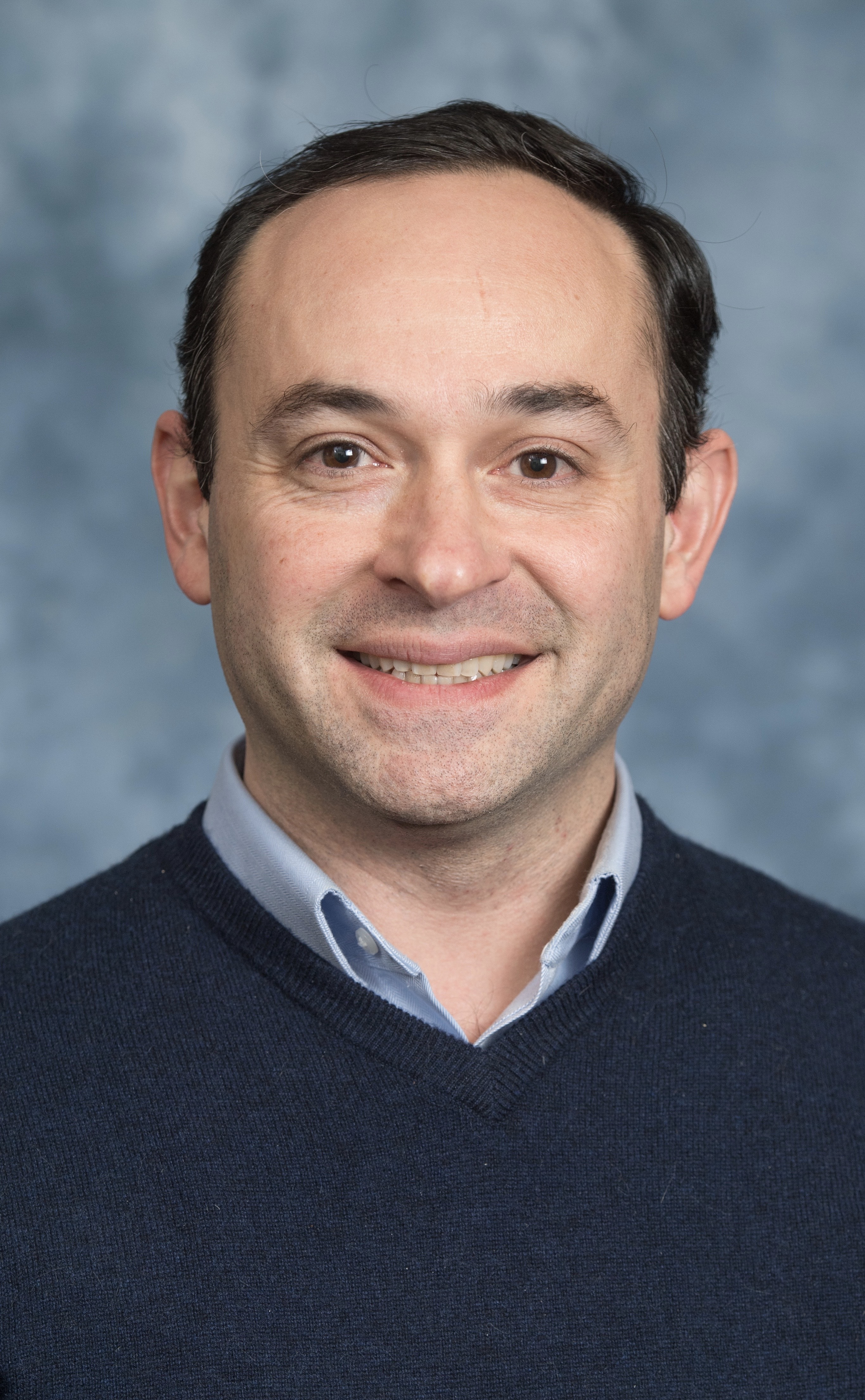
Title: A General Framework for Bounding Approximate Dynamic Programming Schemes
Date: Oct. 28, 2022, Fri.
Time: 9:15 AM
Venue: McDonnell Douglas Engineering Auditorium (MDEA)
ABSTRACT
For years, there has been interest in approximation methods for solving dynamic programming problems, because of the inherent complexity in computing optimal solutions characterized by Bellman's principle of optimality. A wide range of approximate dynamic programming (ADP) methods now exists. Examples of ADP methods are myopic schemes, roll-out schemes, and reinforcement learning schemes. It is of great interest to guarantee that the performance of an ADP scheme be at least some known fraction, say β, of optimal. In this talk, we introduce a general approach to bounding the performance of ADP methods, in this sense, in the stochastic setting. The approach is based on new results for bounding greedy solutions in string optimization problems, where one must choose a string (ordered set) of actions to maximize an objective function. This bounding technique is inspired by submodularity theory, but submodularity is not required for establishing bounds. Instead, the bounding is based on quantifying certain notions of curvature of string functions; the smaller the curvatures the better the bound. The key insight is that any ADP scheme is a greedy scheme for some surrogate string objective function that coincides in its optimal solution and value with those of the original optimal control problem. The ADP scheme then yields to the bounding technique mentioned above, and the curvatures of the surrogate objective determine the value β of the bound. The surrogate objective and its curvatures depend on the specific ADP.
This is joint work with Edwin K. P. Chong and Yajing Liu from Colorado State University.
SPEAKER'S BIOGRAPHY
Ali Pezeshki received the BSc and MSc degrees in electrical engineering from University of Tehran, Tehran, Iran, in 1999 and 2001, respectively. He earned his PhD degree in electrical engineering at Colorado State University in 2004. In 2005, he was a postdoctoral research associate with the Electrical and Computer Engineering Department at Colorado State University. From January 2006 to August 2008, he was a postdoctoral research associate with The Program in Applied and Computational Mathematics at Princeton University. In August 2008, he joined the faculty of Colorado State University, where he is now a Professor in the Department of Electrical and Computer Engineering and the Department of Mathematics. His research interests are in statistical signal processing, machine learning, optimization theory, applied harmonic analysis, and bioimaging.
CPCC Seminar by Prof. Shiuh-hua Wood Chiang
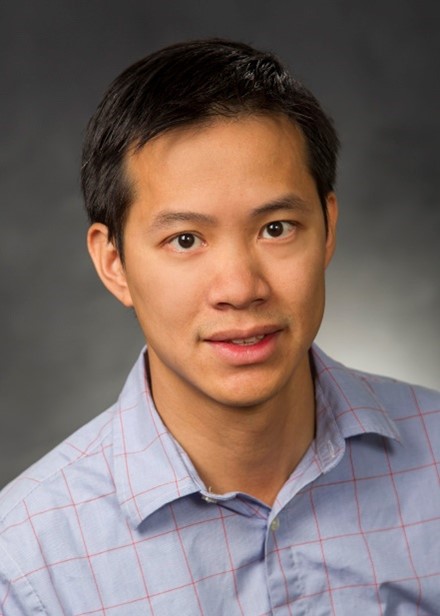
Title: Techniques for High-Performance Successive-Approximation-Register ADCs
Date: Sept. 27, 2022, Tue.
Time: 4:00 PM
Venue: Harut Barsamian Colloquia (Engineering Hall 2430)
ABSTRACT
The demand for high-speed, low-power analog-to-digital converters (ADCs) for high-speed wireline transceivers and mmWave radios
continues to grow unabated, driven in part by advances in DSP-based architectures and technology-scaling benefits in digital
circuits. Recent works on high-speed ADCs operating at > 10 GHz with 6 to 8 bits of resolution have made tremendous progress,
but significant challenges remain. This talk discusses techniques to achieve simultaneous high speed and high power efficiency by
using the time-interleaved successive-approximation-register (SAR) architecture. We present "constant-matching scaling" and
"grouped capacitors" for the digital-to-analog-converter (DAC) to aggressively reduce the capacitance and increase the speed.
The ADC also demonstrates a "dual-path" bootstrapped switch to increase the sampling spurious-free dynamic range (SFDR). Employing the above and other low-power, high-speed techniques, the proposed SAR ADC obtains a single-channel speed of 1.25-GHz without the need for pipelining. The ADC uses only 8X time-interleaving to achieve an overall sampling rate of 10 GHz and a signal-to-noise-and-distortion ratio (SNDR) of 36.9 dB at Nyquist while consuming 21 mW.
SPEAKER'S BIOGRAPHY
Shiuh-hua Wood Chiang received his B.S. degree in Computer Engineering from the University of Waterloo, Waterloo, Canada in 2007, the M.S. degree in Electrical Engineering from the University of California, Irvine in 2009, and the Ph.D. degree in Electrical Engineering from the University of California, Los Angeles in 2013. He was a Postdoctoral Scholar in the Communication Circuits Laboratory at the University of California, Los Angeles in 2013. From 2013 to 2014 he was a Senior Design Engineer in Qualcomm. He joined the Department of Electrical and Computer Engineering of Brigham Young University in 2014. His research interests include low-power RF/analog/mixed-signal circuits for communications and sensing applications.
CPCC Distinguished Alumnus Award Ceremony
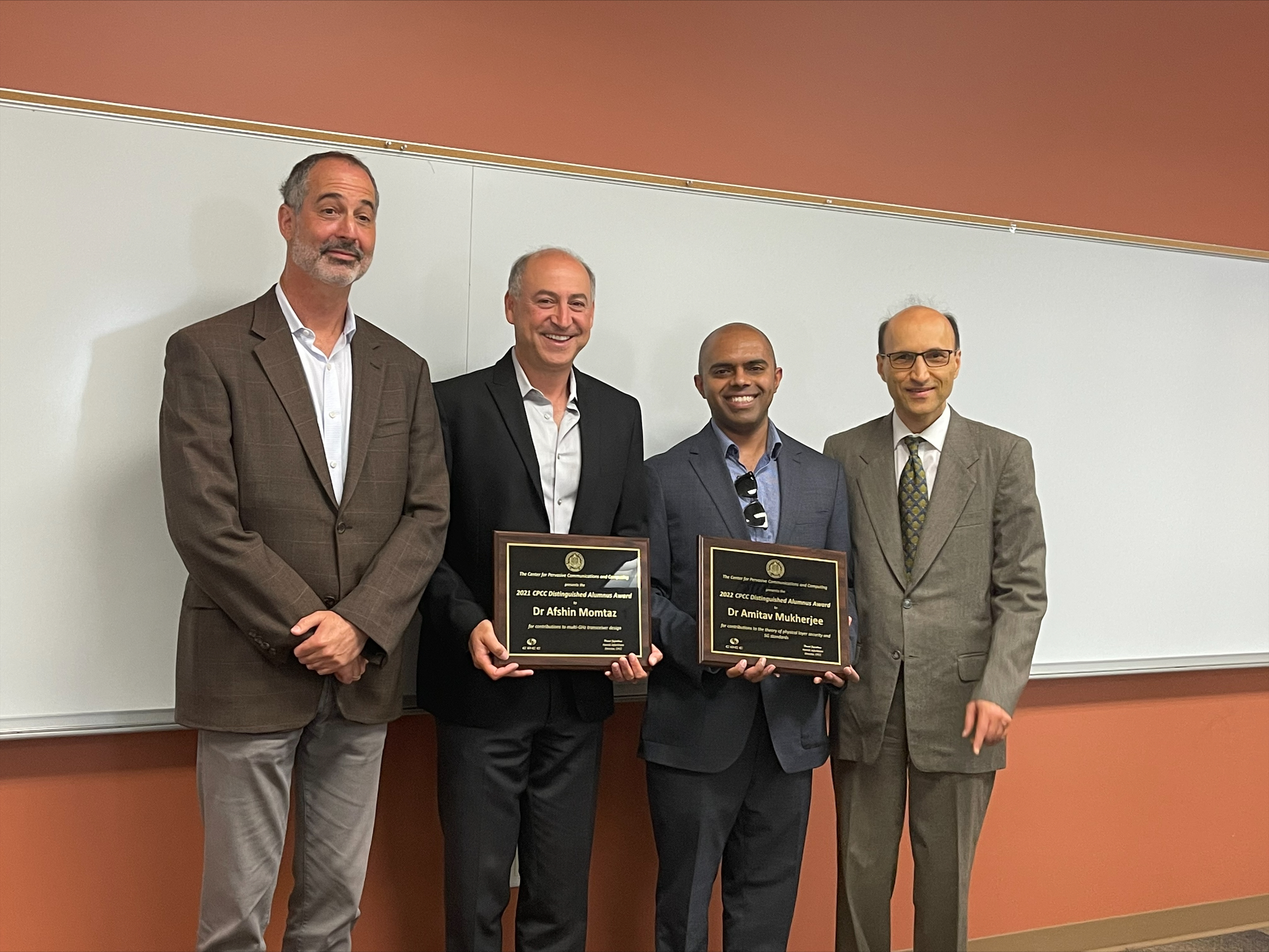
CPCC celebrated the 2021 and 2022 CPCC Distinguished Alumnus Awards.
Because of the pandemic, we combined the celebration of the 2021 and 2022 awards on May 23, 2022.
The award is an annual award presented to a CPCC alumnus based on the scholarly achievements or societal/industry impact in the years during and after the study at UCI.
The 2021 CPCC Distinguished Alumnus Award was presented to Dr. Afshin Momtaz "for contributions to multi-GHz transceiver design."
He is currently the Vice President of Engineering at Broadcom.
The 2022 CPCC Distinguished Alumnus Award was presented to Dr. Amitav Mukherjee "for contributions to the theory of physical layer security and 5G standards." Dr. Mukherjee is the founder of Tiami Networks.
CPCC Director Hamid Jafarkhani welcomed the guests and presented the awards to Dr. Momtaz and Dr. Mukherjee.
Then, each awardee presented a talk on his technical contributions and their impacts. The ceremony ended by serving lunch.
CPCC Distinguished Seminar by Prof. Josef Nossek
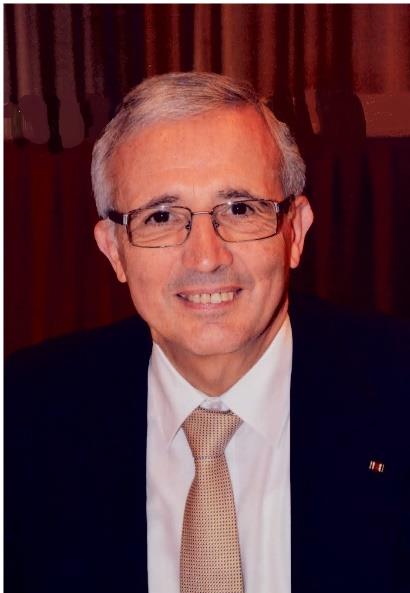
Title: How to Achieve Energy Efficiency in Multi-Antenna Systems? A Physical Layer Perspective
Date: Mar. 29, 2022, Tue.
Time: 2:00 PM
Venue: Harut Barsamian Colloquia (Engineering Hall 2430)
ABSTRACT
Looking back at the historical evolution of wireless communications, bandwidth has almost
always been a scarce resource. Therefore, spectral efficiency has been the key performance
indicator. But in the meantime energy efficiency has become as important as spectral efficiency
for the future communications infrastructure. Since the wireless access is a main contributor
to the overall energy dissipation, the focus here is on the physical layer of mobile
communication systems. The key functional units from an energy dissipation point of view are
the high power amplifiers (HPAs) in the transmitter (Tx) and the analog to digital converters
(ADCs) in the receiver (Rx). An obvious approach is using constant envelope signals for the
HPAs and in the Tx and low resolution ADCs in the Rx. The challenge is how to overcome the
performance loss due to these restrictions. Since these systems will employ multiple antennas
anyway, it is important to exploit the potential of antenna arrays in terms of antenna gain,
diversity and multi-streaming. The basis for that is bridging the gap between electromagnetic
theory, circuit design, signal processing and information theory. The Multiport Communication
Theory is providing a circuit theoretic framework enabling an information theoretic analysis and
optimization which is consistent with the underlying physics.
SPEAKER'S BIOGRAPHY
Josef A. Nossek received the Dipl.-Ing. and the Dr. techn. degrees in electrical
engineering from the University of Technology in Vienna,
Austria in 1974 and 1980, respectively. In 1974 he joined
Siemens AG in Munich, Germany as a member of technical
staff, in 1978 he became supervisor, and from 1980 on he was
Head of Department. In 1987 he was promoted to be Head of
all radio systems design. Since 1989 he has been Full
Professor for circuit theory and signal processing at the Munich
University of Technology where he teaches undergraduate and
graduate courses on circuit and systems theory and signal
processing and leads research on signal processing algorithms
for communications, especially multiantenna systems. He was
President Elect, President and Past President of the IEEE
Circuits and Systems Society in 2001, 2002 and 2003
respectively. He was Vicepresident of VDE (Verband der Elektrotechnik, Elektronik und
Informationstechnik e.V.) 2005 and 2006, President of VDE 2007 and 2008 and was
Vicepresident again in 2009 and 2010. His awards include the ITG Best Paper Award 1988,
the Mannesmann Mobilfunk (now Vodafone) Innovationsaward 1998, the Award for Excellence
in Teaching from the Bavarian Ministry for Science, Research and Art in 1998. From the IEEE
Circuits and Systems Society he received the Golden Jubilee Medal for 'Outstanding
Contributions to the Society' in 1999 , the Education Award in 2008 and the Guillemin-Cauer
Best Paper Award in 2012. In 2008 he also received the Order of Merit of the Federal Republic
of Germany and in 2009 he has been elected member of the German National Academy of
Engineering Sciences (acatech). In 2013 he received an Honorary Doctorate and in 2014 the
Ring of Honor from VDE. From 2016 to 2019 he has been Full Professor at the Federal
University of Ceara in Brasil.
CPCC Distinguished Seminar by Prof. Bhaskar Rao
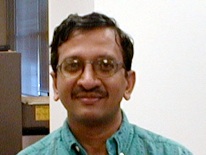
Title: Insights into Sparse Signal Recovery algorithms using an Array Processing perspective
Date: Feb. 25, 2022, Fri.
Time: 9:15 AM
Venue: Virtual
ABSTRACT
Array Processing is a well-developed area with many interesting algorithms for DOA estimation. Sparse Signal Recovery (SSR) and compressed Sensing (CS) methods have been applied to many applications including direction of arrival (DOA) estimation in array processing. In this talk, we will interpret SSR algorithms using beamforming ideas from Array processing to enhance intuition. Our focus will be on Sparse Bayesian Learning (SBL) methods that employ a Gaussian scale mixture prior and have been successfully applied for solving the sparse signal recovery (SSR) problem. The Expectation-Maximization (SBL-EM) based inference algorithm will be examined and interpreted using a beamforming framework. A contrast with the classical minimum power distortion-less response (MPDR) beamformer will be drawn and the benefits highlighted. An interesting finding is the explanation to the ability of SBL to deal with correlated sources. For a uniform linear array (ULA), the Toeplitz approximation property of SBL will be discussed and the potential benefits for a nested array demonstrated by locating more sources than sensors.
SPEAKER'S BIOGRAPHY
Bhaskar D. Rao received the B.Tech. degree in electronics and electrical communication engineering from the Indian Institute of Technology, Kharagpur, India, in 1979 and the M.S. and Ph.D. degrees from the University of Southern California, Los Angeles, in 1981 and 1983, respectively. Since 1983, he has been with the University of California at San Diego, La Jolla, where he is currently a Distinguished Professor in the Electrical and Computer Engineering department. He is the holder of the Ericsson endowed chair in Wireless Access Networks and was the Director of the Center for Wireless Communications (2008-2011). Prof. Rao's interests are in the areas of digital signal processing, estimation theory, and optimization theory, with applications to digital communications, speech signal processing, and biomedical signal processing.
Prof. Rao was elected fellow of IEEE in 2000 for his contributions to the statistical analysis of subspace algorithms for harmonic retrieval. His work has received several paper awards; 2013 best paper award at the Fall 2013, IEEE Vehicular Technology Conference for the paper "Multicell Random Beamforming with CDF-based Scheduling: Exact Rate and Scaling Laws," by Yichao Huang and Bhaskar D Rao, 2012 Signal Processing Society (SPS) best paper award for the paper "An Empirical Bayesian Strategy for Solving the Simultaneous Sparse Approximation Problem," by David P. Wipf and Bhaskar D. Rao published in IEEE Transaction on Signal Processing, Volume: 55, No. 7, July 2007, 2008 Stephen O. Rice Prize paper award in the field of communication systems for the paper "Network Duality for Multiuser MIMO Beamforming Networks and Applications," by B. Song, R. L. Cruz and B. D. Rao that appeared in the IEEE Transactions on Communications, Vol. 55, No. 3, March 2007, pp. 618 630. (http://www.comsoc.org/ awards/rice.html), among others. Prof. Rao is also the recipient of the 2016 IEEE Signal Processing Society Technical Achievement Award.
Prof. Rao has been a member of the Statistical Signal and Array Processing technical committee, the Signal Processing Theory and Methods technical committee, the Communications technical committee of the IEEE Signal Processing Society and was the chair of the Machine learning for Signal Processing technical committee (2019-2020).
CPCC Distinguished Seminar by Prof. John Baras
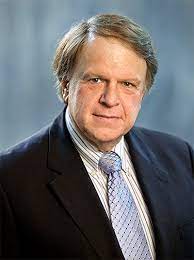
Title: Trusted Autonomy: Theory and Applications
Date: Feb. 23, 2022, Wed.
Time: 11:00 AM
Venue: Calit2 Auditorium
ABSTRACT
Autonomous systems (e.g. robots, cars, UAVs) are becoming ubiquitous. They are also increasingly interacting with humans. Safety is a critical and indispensable requirement for autonomous systems and for their interactions with humans. Trusted autonomy is essential for autonomy. It encompasses self-monitoring, self-adjustment, learning to accomplish safe and high-performance complex task execution in time varying, complex and unknown environments. I will describe our approach to these challenging problems via a methodology that utilizes dynamical systems, optimization, formal models (timed automata, model checking, contracts), and novel approaches to learning and monitoring. I will illustrate the results in diverse applications including teaching robots manipulation tasks, autonomous cars, human-robot collaboration, collaborative UAVs, communication network automation, health care management, smart manufacturing. A key ingredient of the methodology is the development of efficient formal models of tasks and missions and associated safety monitoring methods that combine timed automata and reachability analysis. I will also illustrate why such formal task models are indispensable in executing tasks by different robots, learned in different environments. Two fundamental and universally applicable methodologies will be described: one based on multi-criteria constrained optimization with numerical and logical variables, and one integrating formal logic with constraint-based reasoning and optimization methods. I will close with future research directions and challenges including the fundamental need for systems science and engineering methodologies and software tool suites.
SPEAKER'S BIOGRAPHY
John S. Baras is a Distinguished University Professor, holding the Lockheed Martin Chair in Systems Engineering and a Permanent Joint Appointment with the Institute for Systems Research (ISR) and the ECE Department at the University of Maryland College Park (UMD). He received his Ph.D. degree in Applied Mathematics from Harvard University, in 1973, and he has been with UMD since then. From 1985 to 1991, he was the Founding Director of the ISR. Since 1992, he has been the Director of the Maryland Center for Hybrid Networks (HYNET), which he co-founded. He is a Fellow of IEEE (Life), SIAM, AAAS, NAI, IFAC, AMS, AIAA, Member of the National Academy of Inventors (NAI) and a Foreign Member of the Royal Swedish Academy of Engineering Sciences (IVA). Major honors and awards include the 1980 George Axelby Award from the IEEE Control Systems Society, the 2006 Leonard Abraham Prize from the IEEE Communications Society, the 2017 IEEE Simon Ramo Medal, the 2017 AACC Richard E. Bellman Control Heritage Award, and the 2018 AIAA Aerospace Communications Award. In 2016 he was inducted in the University of Maryland A. J. Clark School of Engineering Innovation Hall of Fame. In June 2018 he was awarded a Doctorate Honoris Causa by his alma mater the National Technical University of Athens, Greece. His research interests include systems, control, optimization, autonomy, machine learning, artificial intelligence, communication networks, applied mathematics, signal processing and understanding, robotics, computing systems, formal methods and logic, network security and trust, systems biology, healthcare management, model-based systems engineering. He has been awarded twenty patents and honored with many awards as innovator and leader of economic development.
CPCC Seminar by Prof. Christ Richmond
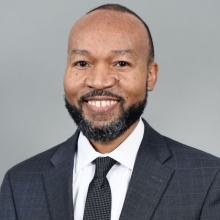
Title: Shared Spectrum for Radar Communications Coexistence - Cooperative Bounds and Radar Performance
Date: May 21, 2021, Fri.
Time: 9:15 AM
Venue: Virtual
ABSTRACT
The limited availability of frequency spectrum coupled with the increasing demands for communication and data services requires achieving greater spectral efficiency. Large amounts of spectrum in the ~1GHz to ~40GHz range is allocated to radar systems, but it's not always in use. This has motivated regulatory bodies and researchers to explore ways additional users can share portions of spectrum already allocated to radars without impacting the radars' normal operations nor its performance. Thus, we explore the possibility of diverse RF systems coexisting within the same frequency band as a means of improving spectral efficiency. Specifically, radars coexisting in the same frequency band as communications systems are of interest, as this presents a set of new challenges for system design and analysis. We first develop a performance bound for a cooperative radar and communications system coexisting within the same frequency band. Second, we develop new theory for predicting the receiver operating characteristics of a radar receiver cooperating with an in-band communications system.
SPEAKER'S BIOGRAPHY
Christ D. Richmond received the bachelor's degree in electrical engineering from the University of Maryland, College Park, and the bachelor's degree in mathematics from Bowie State University, Bowie, MD. He received the master's and electrical engineering degree and a doctorate in electrical engineering from the Massachusetts Institute of Technology. Employed at MIT Lincoln Laboratory from 1996 to 2017, he was a senior staff member in the Advanced RF Sensor Techniques Group where he led research teams as principal investigator on several programs in the development of adaptive algorithms for detection and parameter estimation, performance bounding for active radar/sonar, adaptive communications and passive RF geolocation systems. He was a visiting lecturer and associate at Harvard University from July 2014 to December 2015, and a visiting lecturer at MIT in the Fall of 2000. He is currently an associate professor in the School of Electrical, Computer and Energy Engineering at Arizona State University, and director of the Signals, Information, Inference, and Learning Group. His research interests include statistical signal and array processing, detection and parameter estimation theory, and information theory with application to radar/sonar and communications. He is the recipient of the Office of Naval Research Graduate Fellowship Award 1990-1994, the Alan Berman Research Publications Award, March 1994 (Naval Research Laboratory), the IEEE Signal Processing Society 1999 Young Author Best Paper Award in the area of sensor array and multichannel (SAM) signal processing, and a fellow of the IEEE. He has served as the technical chairman of the Adaptive Sensor Array Processing Workshop, MIT Lincoln Laboratory, 2007, 2006 and 1998, and served as a member the IEEE Technical Committee on SAM Signal Processing. He served as an associate editor for the IEEE Transactions on Signal Processing from 2002 to 2005. He currently serves as a senior associate editor for IEEE Signal Processing Letters and a guest editor for a special issue on "Radar-Communications co-existence for IoT" in the Frontiers in Communications Journal, 2020-2021.
CPCC Seminar by Prof. Antonio Ortega
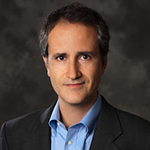
Title: Graph Signal Processing - Theory and Applications
Date: Mar. 5, 2021, Fri.
Time: 9:15 AM
Venue: Virtual
ABSTRACT
Graphs have long been used in a wide variety of problems, such as in analysis of
social networks, machine learning, network protocol optimization or image
processing. In the last few years, a growing body of work has been developed to
extend and complement well known concepts in spectral graph theory, leading to
the emergence of Graph Signal Processing (GSP) as a broad research field. GSP
methods consider the data attached to the vertices as a "graph signal" and seek
to create new techniques (filtering, sampling, interpolation), similar to those
commonly used in conventional signal processing (for audio, images or video), so
that they can be applied to these graph signals. In this talk, we first
introduce some basic graph signal processing concepts, providing a brief
overview of wavelet graph filter banks, sampling of graph signals and graph
topology learning. We illustrate the basic concepts with example applications in
image/video processing and machine learning.
SPEAKER'S BIOGRAPHY
Antonio Ortega received his undergraduate and doctoral degrees from the
Universidad Politecnica de Madrid, Spain, and Columbia University, New York,
respectively. In 1994, he joined the Department of Electrical Engineering at the
University of Southern California, where he is currently a professor and has
served as associate chair. He is a fellow of the IEEE and EURASIP, and a member
of ACM and APSIPA. He is the editor-in-chief of the IEEE Transactions of Signal
and Information Processing over Networks and recently served as a member of the
Board of Governors of the IEEE Signal Processing Society. He has received
several paper awards, including the 2016 Signal Processing Magazine award. His
recent research is focusing on graph signal processing, machine learning,
multimedia compression and wireless sensor networks. Over 40 doctoral students
have completed their Ph.D. theses under his supervision, and his work has led to
over 400 publications in international conferences and journals, as well as
several patents.
CPCC Seminar by Prof. Geert Leus

Title: Learning Higher-Order Interactions with Graph Volterra Models
Date: Oct. 23, 2020, Fri.
Time: 9:15 AM
Venue: Virtual
ABSTRACT
Complex network processes are known to be driven not only by pairwise
interactions but also by the interactions of small groups of tightly
connected nodes, sometimes called higher-order interactions. So,
identifying these higher-order interactions becomes paramount to gain
insight in the nature of such processes. While predicting pairwise
nodal interactions (links) from network data is a well-studied
problem, the identification of higher-order interactions (higher-order
links) has not been fully understood. In this talk, we review several
approaches that have been proposed for addressing this task and
examine their respective limitations. Furthermore, cross-fertilizing
ideas from Volterra series and linear structural equation models, we
introduce a principled method that can capture higher-order
interactions among nodes, the so-called graph Volterra model. The
proposed approach can identify higher-order interactions among nodes
by the respective graph Volterra kernels. To motivate the adoption of
our new model, we demonstrate its performance on real data for
enhancing topology identification in smart grids and higher-order link
prediction in social networks.
SPEAKER'S BIOGRAPHY
Geert Leus received the M.Sc. and Ph.D. degree in Electrical
Engineering from the KU Leuven, Belgium, in June 1996 and May 2000,
respectively. Geert Leus is now an "Antoni van Leeuwenhoek" Full
Professor at the Faculty of Electrical Engineering, Mathematics and
Computer Science of the Delft University of Technology, The
Netherlands. His research interests are in the broad area of signal
processing, with a specific focus on wireless communications, array
processing, sensor networks, and graph signal processing. Geert Leus
received a 2002 IEEE Signal Processing Society Young Author Best Paper
Award and a 2005 IEEE Signal Processing Society Best Paper Award. He
is a Fellow of the IEEE and a Fellow of EURASIP. Geert Leus was a
Member-at-Large of the Board of Governors of the IEEE Signal
Processing Society, the Chair of the IEEE Signal Processing for
Communications and Networking Technical Committee, a Member of the
IEEE Sensor Array and Multichannel Technical Committee, a Member of
the IEEE Big Data Special Interest Group and the Editor in Chief of
the EURASIP Journal on Advances in Signal Processing. He was also on
the Editorial Boards of the IEEE Transactions on Signal Processing,
the IEEE Transactions on Wireless Communications, the IEEE Signal
Processing Letters, and the EURASIP Journal on Advances in Signal
Processing. Currently, he is the Chair of the EURASIP Technical Area
Committee on Signal Processing for Multisensor Systems, a Member of
the IEEE Signal Processing Theory and Methods Technical Committee, an
Associate Editor of Foundations and Trends in Signal Processing, and
the Editor in Chief of EURASIP Signal Processing.
CPCC Seminar by Prof. Daniel Bliss
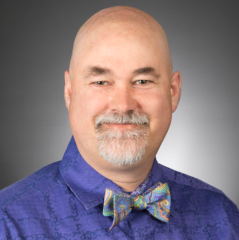
Title: Future of RF Spectral Use
Date: May 15, 2020, Fri.
Time: 9:15 AM
Venue: Virtual
ABSTRACT
With the steady advances in sophistication and reduction in cost, size, weight, and power (C-SWaP) of computational architectures and RF front ends, the historical expectations about RF system limitations are wrong, and consequently, many of the system concepts and standards that we currently use are ripe for reconsideration. We discuss the implications both from the perspective of evolving capabilities and from the perspective of new system approaches. Specifically, we discuss a next-generation processor that is an enabler for many RF low-C-SWaP applications. We also discuss examples of these new approaches that will likely change how we use the RF spectrum. Specifically, we discuss RF Convergence that uses RF spectrum for multiple functionalities simultaneously, such as communications and radar spectrum sharing.
SPEAKER'S BIOGRAPHY
Prof. Daniel W. Bliss (bliss.asu.edu) is a Professor in the School of Electrical, Computer, and Energy Engineering at Arizona State University and a Fellow of the IEEE. He is also the Director of ASU's Center for Wireless Information Systems and Computational Architectures (wisca.asu.edu). Dan received his Ph.D. and M.S. in Physics from the University of California at San Diego (1997 and 1995), and his B.S. in Electrical Engineering from ASU (1989). His current research focuses on advanced systems in the areas of communications, radar, precision positioning, and medical monitoring. Dan has been the principal investigator on numerous programs including sponsored programs with DARPA, ONR, Google, Airbus, and others. He is responsible for foundational work in electronic protection, adaptive multiple-input multiple-output (MIMO) communications, MIMO radar, distributed-coherent systems, and RF convergence. Before moving to ASU, Dan was a Senior Member of the Technical Staff at MIT Lincoln Laboratory (1997-2012).
Between his undergraduate and graduate degrees, Dan was employed by General Dynamics (1989-1993), where he designed avionics for the Atlas-Centaur launch vehicle and performed magnetic field optimization for high-energy particle-accelerator superconducting magnets. His doctoral work (1993-1997) was in the area of high-energy particle physics and lattice-gauge-theory calculations. Dan is a member of the IEEE AES Radar Systems Panel and is a member of the IEEE Signal Processing Magazine Editorial Board.
CPCC Distinguished Seminar by Prof. Moe Win
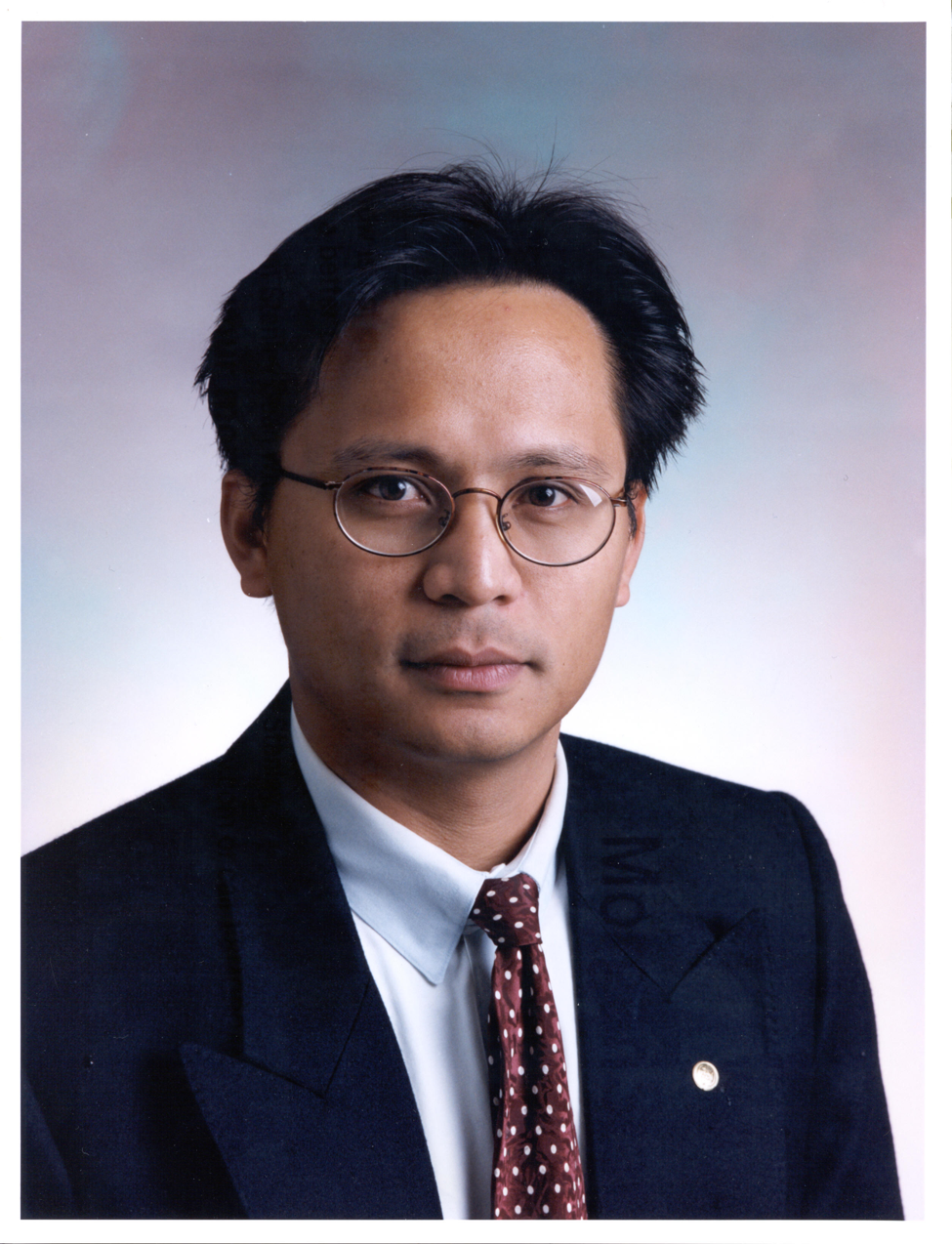
Title: Localization of Things: From Foundation to Operation
Date: Mar. 6, 2020, Fri.
Time: 9:15 AM
Venue: McDonnell Douglas Engineering Auditorium (MDEA)
ABSTRACT
The availability of positional information is essential for numerous wireless applications including crowdsensing, autonomous driving, and Internet-of-Things. The coming years will see the emergence of location-aware networks with sub-meter localization accuracy even in GNSS-challenged environments. This calls for Localization-of-Things (LoT), a new paradigm that refers to locating, tracking, and navigating collaborative or non-collaborative nodes (sensors, vehicles, and objects). Our work relies on statistics, optimization, and communication theory, and it approaches LoT from different perspectives: theoretical framework, cooperative algorithms, network operations, and network experimentation. This talk will give an overview of LoT and will present our recent research results in this exciting field.
SPEAKER'S BIOGRAPHY
Moe Win is a Professor at the Massachusetts Institute of Technology (MIT) and the founding director of the Wireless Information and Network Sciences Laboratory. Prior to joining MIT, he was with AT&T Research Laboratories and NASA Jet Propulsion Laboratory. His research encompasses fundamental theories, algorithm design, and network experimentation for a broad range of real-world problems. His current research topics include network localization and navigation, network interference exploitation, and quantum information science.
Professor Win is a Fellow of the AAAS, the IEEE, and the IET. He has served the IEEE Communications Society as an elected Member-at-Large on the Board of Governors, as elected Chair of the Radio Communications Committee, and as an IEEE Distinguished Lecturer. He was honored with two IEEE Technical Field Awards: the IEEE Kiyo Tomiyasu Award and the IEEE Eric E. Sumner Award (jointly with Professor R. A. Scholtz). Together with students and colleagues, his papers have received several awards. Other recognitions include the IEEE Communications Society Edwin H. Armstrong Achievement Award, the International Prize for Communications Cristoforo Colombo, the Copernicus Fellowship and the Laurea Honoris Causa from the Universita degli Studi di Ferrara, and the U.S. Presidential Early Career Award for Scientists and Engineers. He is an ISI Highly Cited Researcher.
CPCC Seminar by Prof. Antonio G. Marques
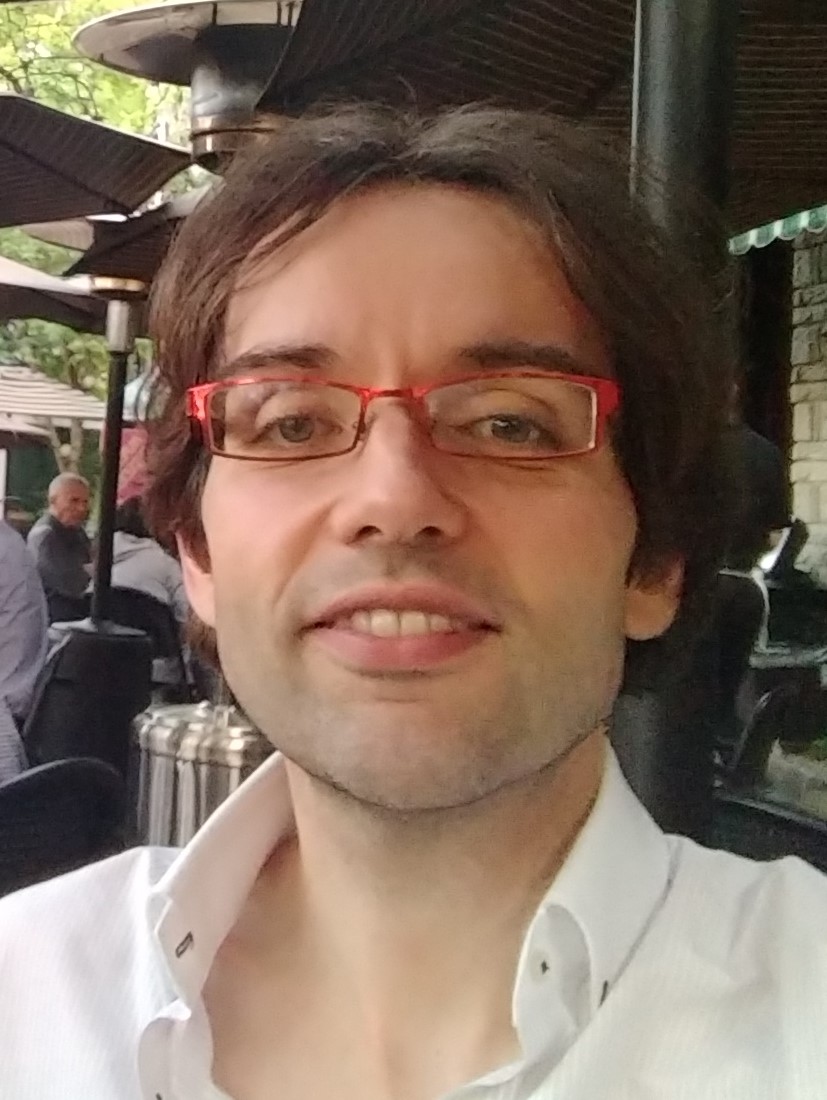
Title: Graph Convolutional Neural Networks
Date: Feb. 11, 2020, Tue.
Time: 2:00 PM
Venue: Harut Barsamian Colloquia (Engineering Hall 2430)
ABSTRACT
Convolutional neural networks (CNNs) have shown remarkable performance in a wide array of inference and reconstruction tasks. The objective of CNNs is to find a computationally feasible architecture capable of reproducing the behavior of a certain unknown function. One of the key for their success is that the structure of a CNN consist of a succession of layers, each of which performs simple operations which include a convolution, the application of a scalar nonlinearity, and the implementation of a pooling (downsampling) operator. Because the classical convolution and downsampling operations are defined for regular (grid-based) domains, CNNs have been applied to act on data modeled by such a regular structure, like time or images. However, an accurate description of modern datasets such as those in social and biological networks calls for more general irregular structures. Motivated by this, we describe several architectures that generalize convolutional neural networks (CNNs) for the processing of signals supported on graphs. The selection graph neural network (GNN) replaces linear time invariant filters with linear shift invariant graph filters to generate convolutional features and reinterprets pooling as a possibly nonlinear subsampling stage where nearby nodes pool their information in a set of preselected sample nodes. A key component of the architecture is to remember the position of sampled nodes to permit computation of convolutional features at deeper layers. The aggregation GNN diffuses the signal through the graph and stores the sequence of diffused components observed by a designated node. This procedure effectively aggregates all components into a stream of information having temporal structure to which the convolution and pooling stages of regular CNNs can be applied. A multinode version of aggregation GNNs is further introduced for operation in large scale graphs. An important property of selection and aggregation GNNs is that they reduce to conventional CNNs when particularized to time signals reinterpreted as graph signals in a circulant graph. Comparative numerical analyses are performed in a synthetic source localization application. Performance is evaluated for a text category classification problem using word proximity networks. Multinode aggregation GNNs are consistently the best performing GNN architecture.
SPEAKER'S BIOGRAPHY
Antonio G. Marques received the telecommunications engineering degree and the Doctorate degree, both with highest honors, from the Carlos III University of Madrid, Spain, in 2002 and 2007, respectively. In 2007, he became a faculty of the Department of Signal Theory and Communications, King Juan Carlos University, Madrid, Spain, where he currently develops his research and teaching activities as an Associate Professor. From 2005 to 2015, he held different visiting positions at the University of Minnesota, Minneapolis. In 2015 and 2016 he was a visitor scholar at the University of Pennsylvania, Philadelphia. His current research focuses on nonlinear and stochastic optimization of wireless and power networks, signal processing for graphs, and data science for networks. Dr. Marques has served the IEEE in a number of posts. In the last year, he is/was an Associate Editor of the Signal Process. Letters, a member of the IEEE Signal Process. Theory and Methods Tech. Comm., a member of the IEEE Signal Process. Big Data Special Interest Group, the Technical Co-Chair of the IEEE CAMSAP Workshop, and the General Co-chair of the 2019 IEEE Data Science Workshop. His work has been awarded in several conferences and workshops, with recent ones including IEEE SSP 2016, IEEE SAM 2016 and Asilomar 2015.
CPCC Seminar by Prof. Angel Lozano

Title: Towards Post-Cellular Wireless Networks
Date: Feb. 5, 2020, Wed.
Time: 3:30 PM
Venue: Harut Barsamian Colloquia (Engineering Hall 2430)
ABSTRACT
With the 5th generation of wireless networks ready for deployment, the time is right to reflect on what has been accomplished, on challenges old and new, on the research tools at our disposal, and on the evolution of wireless communications at large. This lecture intends to contribute to this reflection from a research standpoint, examining the merits and shortcomings of the current cellular framework and speculating on what might come next. The presentation touches on various ideas that relate to beyond-5G networks, but that also have broader conceptual implications.
SPEAKER'S BIOGRAPHY
Angel Lozano is a Professor at Univ. Pompeu Fabra in Barcelona. Prof. Lozano received a Ph.D. from Stanford University in 1999. He then joined Bell Labs (Lucent Technologies, now Nokia) in Holmdel, NJ, where he was a member of the Wireless Communications Research Department until 2008. Prof. Lozano is a Fellow of the IEEE since 2014. He is an editor for the IEEE ComSoc Technology News, an area editor for the IEEE Trans. on Wireless Communications and a former associate editor for the IEEE Trans. on Information Theory (2011-2014), and the IEEE Trans. on Communications (1999-2009). He was Chair of the IEEE Communication Theory Technical Committee (2013-2014) and an elected member of the Board of Governors of the IEEE Communications Society (2012-2014). Prof. Lozano holds 15 patents and is the coauthor of the textbook "Foundations of MIMO Communication," released by Cambridge University Press in 2019. His papers have received several awards, including the 2009 Stephen O. Rice prize to the best paper published in the IEEE Transactions on Communications, the 2016 Fred W. Ellersick prize to the best paper published in the IEEE Communications Magazine, and the 2016 Communications Society & Information Theory Society joint paper award. He also received an ERC Advanced Grant for 2016-2021 and was a 2017 Highly Cited Researcher.
CPCC Seminar by Prof. Ralf Muller
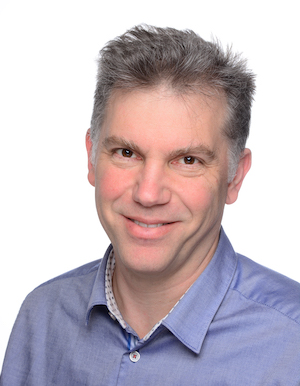
Title: Load Modulated Antenna Arrays: Digital RF Beyond the Power Amplifier
Date: Jan. 31, 2020, Fri.
Time: 2:00 PM
Venue: Harut Barsamian Colloquia (Engineering Hall 2430)
ABSTRACT
Multiantenna transmitters are commonly associated with many additional complications when it comes to hardware design. Still many antennas, by means of the law of large numbers, allow us to make a virtue out of necessity. Few or even a single power amplifier can drive all antenna elements whose data streams are digitally and independently modulated directly before or even after the antenna connector with the help of digital RF switches directly controlled by baseband circuitry. Digital-to-analog conversion, circuit matching, and mitigation of mutual antenna coupling are subject to optimization by means of real-time signal processing. Error-vector magnitudes are to be measured in terms of the electromagnetic field on air. While load modulated arrays are highly promising for massive MIMO and millimeter wave technology, new technological challenges have to be met: RF-switches must meet the speed and power requirements of modern communication systems. Spectral shaping is a serious challenge and standing waves between various antenna elements must be avoided. This presentation gives an overview of the state-of-the-art of load modulated arrays, in general, and provides partial solutions for some of the main challenges that come with this promising technology.
SPEAKER'S BIOGRAPHY
Ralf R. Muller received the Dipl.-Ing. and Dr.-Ing. degree with distinction from Friedrich-Alexander-Universitat (FAU)
Erlangen-Nurnberg in 1996 and 1999, respectively. From 2000 to 2004, he directed a research group at The Telecommunications
Research Center Vienna in Austria and taught as an adjunct professor at TU Wien. In 2005, he was appointed full professor at the
Department of Electronics and Telecommunications at the Norwegian University of Science and Technology in Trondheim, Norway.
In 2013, he joined the Institute for Digital Communications at FAU Erlangen-Nuurnberg in Erlangen, Germany. He held visiting
appointments at Princeton University, US, Institute Eurecom, France, University of Melbourne, Australia, University of Oulu,
Finland, National University of Singapore, Babes-Bolyai University, Cluj-Napoca, Romania, Kyoto University, Japan, FAU
Erlangen-Nurnberg, Germany, and TU Munchen, Germany. Dr. Muller received the Leonard G. Abraham Prize (jointly with Sergio Verdu)
for the paper "Design and analysis of low-complexity interference mitigation on vector channels" from the IEEE Communications
Society. He was presented awards by the Vodafone Foundation for Mobile Communications and the German Information Technology
Society (ITG). Moreover, he received the ITG award for the paper "A random matrix model for communication via antenna arrays"
as well as the Philipp-Reis Award (jointly with Robert Fischer). Dr. Muller served as an associate editor for the IEEE
Transactions on Information Theory from 2003 to 2006 and on the executive editorial board of the IEEE Transactions on Wireless
Communications from 2014 to 2016.
CPCC Distinguished Seminar by Prof. Alexander Vardy
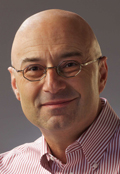
Title: Topics from the Past, Present, and Future of Polar Coding
Date: Nov. 1, 2019, Fri.
Time: 9:00 AM
Venue: McDonnell Douglas Engineering Auditorium
ABSTRACT
Polar coding, invented by Arikan ten years ago, is one of the most original and profound developments in coding theory to date. We will not attempt to summarize 10 years of polar coding in one talk. Instead, we hope this talk will provide a glimpse into several topics curated from the past, present, and future of polar codes.
No prior knowledge of polar coding is assumed; we will begin with a tutorial on polarization theory and polar codes. We will then describe CRC-aided list-decoding of polar codes, starting with our original motivation/intuition for this algorithm and concluding with comments on its use in the 5G standard. We will also present our recent results on polar codes with large kernels. In particular, we will show that such codes not only approach channel capacity, but do so as fast as theoretically possible, at least on the binary erasure channel.
SPEAKER'S BIOGRAPHY
Alexander Vardy is the Jack Keil Wolf Chair Professor at the University of California San Diego, where he is affiliated
with the ECE and CSE Departments and the Qualcomm Institute. He was born in Moscow, U.S.S.R, and grew up in Israel.
He graduated summa cum laude from the Technion - Israel Institute of Technology in 1985, and completed his Ph.D. in 1991
at the Tel Aviv University.
Since 1987, he has been working in the field of coding theory. As part of his work, he has discovered certain codes and decoding algorithms that are now named after him. His 2003 paper with Ralf Koetter on algebraic soft-decision decoding of Reed-Solomon codes won the IEEE Information Theory Society Paper Award, and the resulting decoding algorithm became known as the Koetter-Vardy decoder. In his 2005 paper with Farzad Parvaresh (FOCS Best Paper Award), he discovered the Parvaresh-Vardy codes. In his 2011 paper with Ido Tal (Communications & Information Theory Societies Joint Paper Award), he introduced CRC-aided list-decoding of polar codes that is currently used in 5G wireless communications. He also holds the record for the densest packing of spheres in 20 dimensions and is a co-discoverer of the only known q-analogue of a Steiner system.
CPCC Seminar by Prof. Junshan Zhang
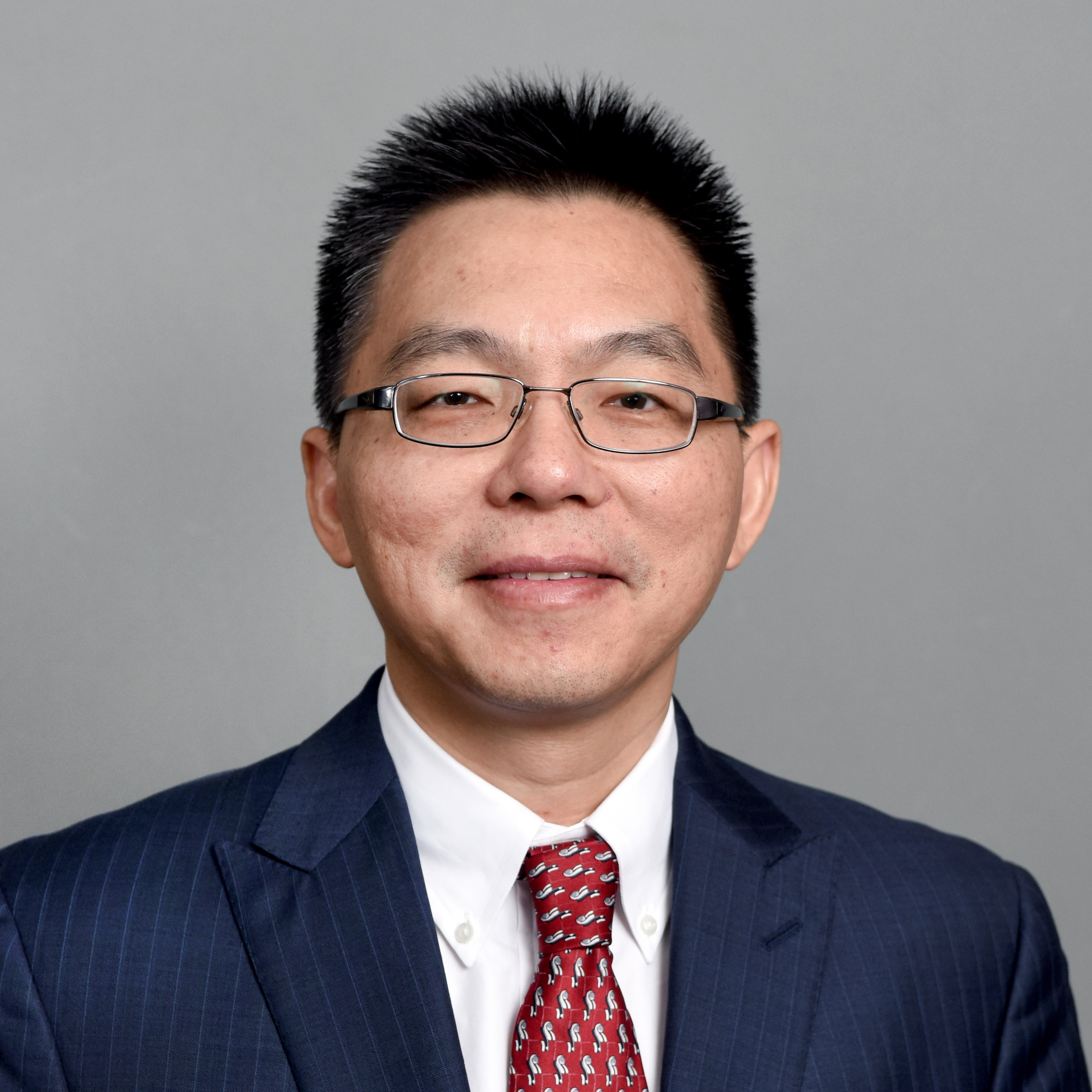
Title: Real-time Edge Intelligence: A Collaborative Learning Approach
Date: Oct. 11, 2019, Fri.
Time: 11:00 AM
Venue: DBH 6011
ABSTRACT
Many IoT applications demand intelligent decisions in a real-time manner. The necessity of real-time edge intelligence dictates that decision making takes place right here right now at the network edge. Since an edge node often has a limited amount of data and is constrained with computational resources, we advocate collaborative learning to achieve edge intelligence. To this end, we first develop an edge learning framework based on collaboration between the edge node and the cloud, where the edge node learns its model based on local data in real-time, while leveraging the cloud intelligence. Specifically, the knowledge transfer from the cloud to the edge node is in the form of a reference model and its associated uncertainty set, and the edge node further constructs an uncertainty set centered around its local empirical distribution. The edge learning problem is then cast as a distributionally robust optimization (DRO) problem subject to the two distribution uncertainty sets, and the solution is characterized using Optimal Transport Theory. Next, we propose a federated meta-learning framework where multiple edge nodes collaboratively train the meta-learning model such that the obtained model can be quickly adapted by the target edge node, using its local data, to achieve real-time edge intelligence. We analyze the convergence of the federated meta-learning algorithm and examine the learning performance of the meta-trained model at the target edge. To the best of our knowledge, this is the first work to establish the convergence of meta-learning.
SPEAKER'S BIOGRAPHY
Junshan Zhang received his Ph.D. degree from the School of ECE at Purdue University in 2000. He joined the School of ECEE at Arizona State University in August 2000, where he has been Fulton Chair Professor since 2015. His research interests fall in the general field of information networks and data science, including communication networks, machine learning for Internet of Things (IoT), Fog/edge Computing, optimization/control of cyber physical systems, smart grid. He is a Fellow of the IEEE, and a recipient of the ONR Young Investigator Award in 2005 and the NSF CAREER award in 2003. His papers have won a few awards, including the Best Student paper at WiOPT 2018, the Kenneth C. Sevcik Outstanding Student Paper Award of ACM SIGMETRICS 2016, the Best Paper Runner-up Award of IEEE INFOCOM 2009 and IEEE INFOCOM 2014, and the Best Paper Award at IEEE ICC 2008 and ICC 2017. Building on his research findings, he co-founded Smartiply Inc in 2015, a Fog Computing startup company delivering boosted network connectivity and embedded artificial intelligence. Prof. Zhang was TPC co-chair for a few major conferences in communication networks, including IEEE INFOCOM 2012 and ACM MOBIHOC 2015. He was general chair for ACM/IEEE SEC 2017 and WiOPT 2016.
CPCC Seminar by Prof. Robert Heath
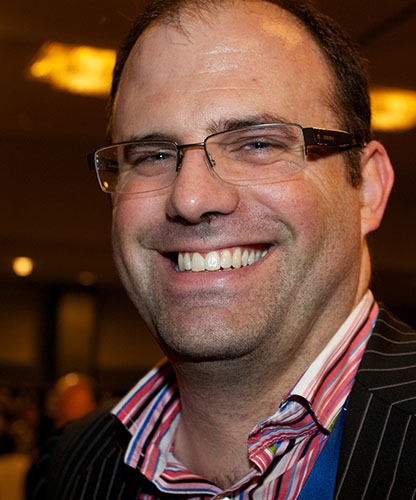
Title: Vehicle-to-Everything Communications
Date: Oct. 4, 2019, Fri.
Time: 9:15 AM
Venue: McDonnell Douglas Engineering Auditorium
ABSTRACT
Vehicles are becoming more intelligent. To achieve higher automation levels, vehicles are now being equipped with more and more sensors. High data rate connectivity seems critical to allow vehicles and road infrastructure to enlarge their sensing range and make better safety related decisions. Connectivity also enables other applications such as infotainment or high levels of traffic coordination. In this presentation, I make the case that high-data rate communication provided by 5G and beyond will be important in future vehicular systems. Then I describe the Situation-Aware Vehicular Engineering Systems (SAVES) initiative at UT Austin, which provides a platform for industry to fund research in communications, sensing, and machine learning for vehicles. Finally, I show some highlights of my research related to cellular radar networks, joint communication and radar, and communication with information and wave-theoretic constraints.
SPEAKER'S BIOGRAPHY
Robert W. Heath Jr. is a Cockrell Family Regents Chair in Engineering in the Department of ECE at The University of Texas at Austin,
and Director of UT SAVES. He has received several awards including the 2017 EURASIP Technical Achievement Award,
the 2019 IEEE Communications Society Stephen O. Rice Prize, and the 2019 IEEE Kiyo Tomiyasu Award.
He authored "Introduction to Wireless Digital Communication" (Prentice Hall in 2017) and "Digital Wireless Communication: Physical Layer Exploration Lab Using the NI USRP"
Wireless Digital Communication" (Prentice Hall in 2017) and "Digital Wireless Communication: Physical Layer Exploration Lab Using the NI USRP"
(National Technology and Science Press in 2012). He co-authored "Millimeter Wave Wireless Communications" (Prentice Hall in 2014)
and "Foundations of MIMO Communications" (Cambridge 2019). He is currently EIC of IEEE Signal
Processing Magazine. He will be a member-at-large on the IEEE Communications Society Board-of-Governors (2020-2022) and is a
past member-at-large on the IEEE Signal Processing Society Board-of-Governors (2016-2018).
He is a licensed Amateur Radio Operator, a registered Professional Engineer in Texas, a Private Pilot,
a Fellow of the National Academy of Inventors, and a Fellow of the IEEE.
CPCC Distinguished Seminar by Prof. Bjorn Ottersten
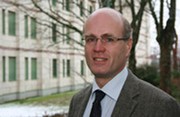
Title: Symbol-level Precoding - a Technology with a Potential in SatComs?
Date: June 10, 2019, Mon.
Time: 11:30 AM
Venue: CALIT2 3008
ABSTRACT
Symbol-level precoding (SLP) is an emerging technology for multi-user multi-antenna communication systems exploiting channel state information and individual symbol streams to achieve so-called constructive interference. We discuss the concept of SLP and present different design criteria to achieve improved spectral efficiency, lower power requirements and robustness against model impairments. Specifically, we describe the path of bringing this technology from theoretical studies to validation and use in the context of satellite communications. Some of the trends and challenges for future satellite systems are discussed from a signal processing perspective.
SPEAKER'S BIOGRAPHY
Bjorn Ottersten received the M.S. degree in electrical engineering and applied physics from Linkoping University, Linkoping,
Sweden, in 1986. In 1989 he received the Ph.D. degree in electrical engineering from Stanford University, Stanford, CA.
Dr. Ottersten has held research positions at the Department of Electrical Engineering, Linkoping University,
the Information Systems Laboratory, Stanford University, the Katholieke Universiteit Leuven, Leuven, and the University of
Luxembourg. During 96/97 Dr. Ottersten was Director of Research at ArrayComm Inc, a start-up in San Jose, California
based on Ottersten's patented technology. He has co-authored journal papers that received the IEEE Signal Processing Society Best Paper Award in 1993, 2001, 2006, and 2013 and 8 IEEE conference papers receiving Best Paper Awards. In 1991 he was appointed Professor of Signal Processing at the Royal Institute of Technology (KTH), Stockholm. From 1992 to 2004 he was head of the department for Signals, Sensors, and Systems at KTH and from 2004 to 2008 he was dean of the School of Electrical Engineering at KTH. Currently, Dr. Ottersten is Director for the Interdisciplinary Centre for Security, Reliability and Trust at the University of Luxembourg. From 2012 to 2018 Dr. Ottersten was Digital Champion of Luxembourg, acting as an adviser to the European Commission. Dr. Ottersten has served as Editor in Chief of EURASIP Signal Processing, Associate Editor for the IEEE Transactions on Signal Processing and on the editorial board of IEEE Signal Processing Magazine. He is currently a member of the editorial boards of EURASIP Signal Processing, EURASIP Journal of Applied Signal Processing and Foundations and Trends in Signal Processing. Dr. Ottersten is a Fellow of the IEEE and EURASIP. In 2011 he received the IEEE Signal Processing Society Technical Achievement Award. He has received the European Research Council advanced research grant twice, 2009-2013 and 2017-2022. His research interests include security and trust as well as signal processing in wireless communications, radar and computer vision.
CPCC Seminar by Prof. Yasamin Mostofi
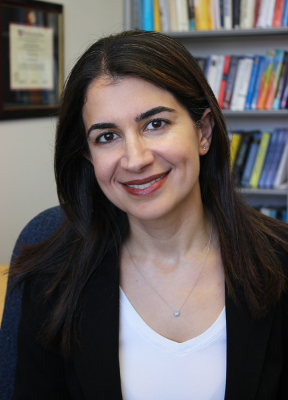
Title: Robotics Meet Wireless Communications: Opportunies and Challenges
Date: June 7, 2019, Fri.
Time: 11:00 AM
Venue: CALIT2 Auditorium
ABSTRACT
Recent years have seen a great progress in the area of robotics. Communication signals are also ubiquitous these days.
In this talk, I will explore the opportunities and challenges at this intersection, for sensing and communication.
In the first part of the talk, I will focus on robotic sensing, and ask the following question
"Can everyday communication signals, such as WiFi signals, give new sensing capabilities to unmanned vehicles?" For instance, imagine two unmanned vehicles arriving behind thick concrete walls. Can they image every square inch of the invisible area through the walls with only WiFi signals? I will show that this is indeed possible, and discuss how our methodology for the co-optimization of path planning and communication has enabled the first demonstration of 3D imaging through walls with only drones and WiFi. I will also discuss other new RF sensing capabilities that have emerged from our approach, such as the first demonstration of through-wall crowd counting and occupancy analytics with only WiFi signals, without relying on people to carry a device.
In the second part of the talk, I will focus on communication-aware robotics, a term coined to refer to robotic systems that explicitly take communication issues into account in their decision making. This is an emerging area of research that not only allows a team of unmanned vehicles to attain the desired connectivity during their operation, but can also extend the connectivity of the existing communication systems through the use of mobility. I will then discuss our latest theoretical and experimental results along this line. I will show how each robot can go beyond the over-simplified but commonly-used disk model for connectivity, and realistically model the impact of channel uncertainty for the purpose of path planning. I will then show how the unmanned vehicles can properly co-optimize their communication, sensing and navigation objectives under resource constraints. This co-optimized approach can result in a significant performance improvement and resource saving, as we shall see. I will also discuss the role of human collaboration in these networks.
SPEAKER'S BIOGRAPHY
Yasamin Mostofi received the B.S. degree in electrical engineering from Sharif University of Technology, and the M.S. and Ph.D. degrees from Stanford University. She is currently a professor in the Department of Electrical and Computer Engineering at the University of California Santa Barbara. Yasamin is the recipient of the 2016 Antonio Ruberti Prize from the IEEE Control Systems Society, the Presidential Early Career Award for Scientists and Engineers (PECASE), the National Science Foundation (NSF) CAREER award, and the IEEE 2012 Outstanding Engineer Award of Region 6 (more than 10 Western U.S. states), among other awards. She was a semi-plenary speaker at the 2018 IEEE Conference on Decision and Control (CDC) and a keynote speaker at the 2018 Mediterranean Conference on Control and Automation (MED). Her research is at the intersection of the two areas of robotics and communications, on mobile sensor networks. Current research thrusts include X-ray vision for robots, see-through imaging, RF sensing, occupancy analytics with everyday communication signals, communication-aware robotics, and human-robot networks. Her research has appeared in several reputable news venues such as BBC, Huffington Post, Daily Mail, Engadget, TechCrunch, NSF Science360, ACM News, and IEEE Spectrum, among others.
CPCC Distinguished Seminar by Prof. Nambi Seshadri
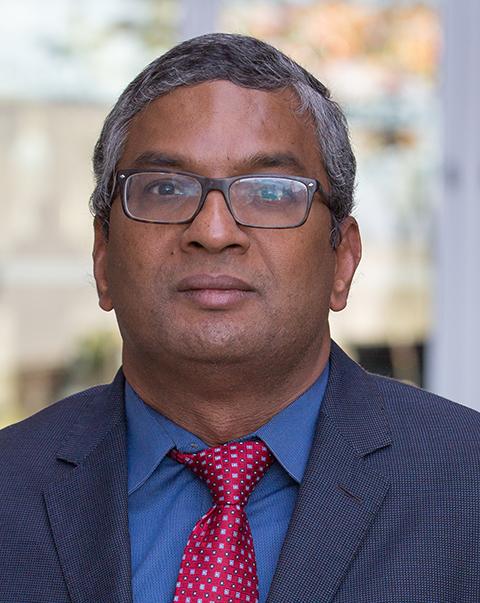
Title: Modern story of Wireless - A personal perspective
Date: May 10, 2019, Fri.
Time: 11:00 AM
Venue: DBH 6011
ABSTRACT
Major strides have been made in the field of wireless communications over
the last century. In this work, I will present my personal take (and invite
the audience to participate) on the key technical contributions that have
impacted the practice of modern wireless communications over the last five
decades.
SPEAKER'S BIOGRAPHY
Dr. Seshadri is a Professor of Electrical & Computer Engineering at
University of California San Diego, Distinguished Professor at Indian
Institute of Technology, Madras and consulting Chief Technology Officer at
Quantenna Communications, San Jose, California.
He has a track record of contributing to successful research programs at
AT&T Bell Laboratories and AT&T Labs, Inc., as well as creating and building
a multi-billion dollar wireless business at Broadcom Inc.
He is a Fellow of IEEE, Member of the US National Academy of Engineering,
Foreign Member of the Indian National Academy of Engineering (INAE) and
holds about 200 patents. He received the Alexander Graham Bell Medal from
IEEE in 2018.
CPCC Seminar by Prof. Antti Tolli
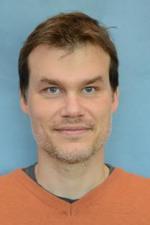
Title: Two-Stage Spatial Processing for Dimensionality Reduction in Massive MIMO
Date: Apr. 1, 2019, Mon.
Time: 11:00 AM
Venue: Harut Barsamian Colloquia (Engineering Hall 2430)
ABSTRACT
Massive multiple-input multiple-output (MIMO) provides significant beamforming gains and improved interference reduction capabilities, and can support a massive amount of simultaneous wireless communication links. However, the precoder design in downlink (DL) or multiuser detection (MUD) in uplink (UL) becomes difficult and computationally expensive as the high antenna and data stream count results in high-dimensional matrix operations when conventional antenna specific MIMO processing is applied. In this talk, we focus on two-stage digital beamformer design, aiming to reduce the complexity involved, where the beamformer is split into a slow-varying statistics-based outer beamformer (OBF) and an inner beamformer (IBF) accounting for fast channel variations. Both downlink and uplink setups are considered where the users are divided into sub-groups based on their statistical properties. Different methods are considered for the OBF design, so as to reduce the size of the effective channel in each sub-group used for IBF design.
SPEAKER'S BIOGRAPHY
Antti Tolli (M'08, SM'14) received the Dr.Sc. (Tech.) degree in electrical engineering from the University of Oulu, Oulu, Finland, in 2008. Before joining the Centre for Wireless Communications (CWC) at the University of Oulu, he worked for 5 years with Nokia Networks as a Research Engineer and Project Manager both in Finland and Spain. In May 2014, he was granted a five year (2014-2019) Academy Research Fellow post by the Academy of Finland. Currently, he also holds an Associate Professor position with the University of Oulu. During the academic year 2015-2016, he visited at EURECOM, Sophia Antipolis, France, while from August 2018 till June 2019 he is visiting University of California - Santa Barbara, USA. He has authored numerous papers in peer-reviewed international journals and conferences and several patents all in the area of signal processing and wireless communications. His research interests include radio resource management and transceiver design for broadband wireless communications with a special emphasis on distributed interference management in heterogeneous wireless networks. He is currently serving as an Associate Editor for IEEE Transactions on Signal Processing.
CPCC Distinguished Seminar by Prof. Muriel Medard
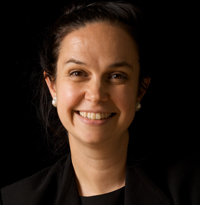
Title: Reliable Communication over Noisy Channels by Guessing Random Additive Noise Decoding (GRAND)
Date: Mar. 1, 2019, Fri.
Time: 11:00 AM
Venue: DBH 6011
ABSTRACT
In 1948 Claude Shannon published "A Mathematical Theory of Communication," which
created the basis for the digital communication revolution that was to follow,
and gave rise to the field of Information Theory. As part of that
ground-breaking work, he identified the greatest rate at which data can be
communicated over a noisy channel and also provided an algorithm for achieving
it. Despite its mathematical elegance, his algorithm is impractical and much
work in the intervening 70 years has focused on identifying more practical
approaches that enable reliable communication at high rates. That work is
ongoing and, for example, Polar Codes, first introduced by Erdal Arikan in 2009,
have recently been adopted into the 5G cellular standard. We revisit
communication over a noisy channel through the lens of a new universal channel
decoding algorithm first introduced in 2018 called GRAND (Guessing Random
Additive Noise Decoding). GRAND has surprising practical and theoretical
features that set it apart from earlier approaches. Analysis of GRAND provides
an alternate means of proof of Shannon's original theorem, giving rise to
several new insights along the way. Ongoing work and open problems will be
discussed.
Joint work with: Ken Duffy (Hamilton Institute).
SPEAKER'S BIOGRAPHY
Muriel Medard, Ph.D., is the Cecil H. Green Professor in the Electrical
Engineering and Computer Science (EECS) Department at MIT. She leads the Network
Coding and Reliable Communications Group at the Research Laboratory for
Electronics at MIT. She has co-founded three companies to commercialize network
coding. She is a Fellow the Institute of Electrical and Electronics Engineers
(IEEE), has been editor for many publications, and Editor-in-Chief of the IEEE
Journal on Selected Areas in Communications. She was 2012 President of the IEEE
Information Theory Society, and received its 2017 Wyner Award. She has served as
technical program committee co-chair of many of the major conferences in
information theory, communications and networking. She received the 2002 IEEE
Kirchmayer Award, the 2009 IEEE Communication Society and Information Theory
Society Joint Paper Award, the 2009 Bennett Prize, the 2016 IEEE Vehicular
Technology Evans Award, the 2016 IEEE Women in Communication Engineering
Outstanding Achievement Award, the 2017 IEEE Communications Society Armstrong
Award, the 2018 ACM Sigcomm Test of Time Award, and several conference paper
awards. She received the MIT 2004 Edgerton Faculty Achievement Award and the
2013 EECS Graduate Student Association Mentor Award. The Thomson Reuters 2014
most influential scientific minds list includes her.
CPCC Seminar by Prof. Daniela Tuninetti
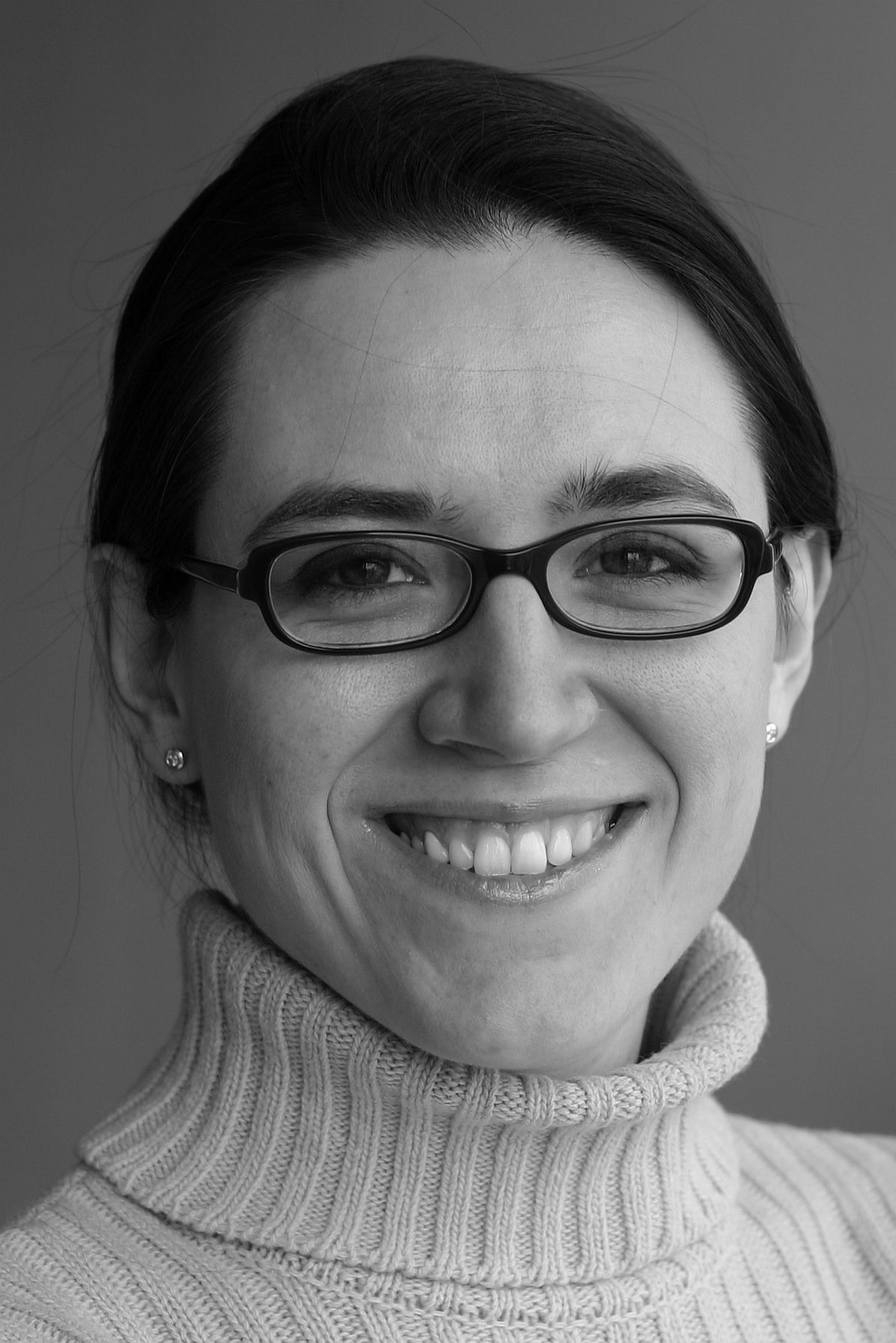
Title: Codes for Caching and Data Shuffling
Date: Feb. 8, 2019, Fri.
Time: 11:00 AM
Venue: DBH 6011
ABSTRACT
This talk highlights how coded multicast transmissions speeds up the
information delivery phase in two distributed communication problems:
caching and data shuffling. Caching is an efficient way to reduce
network traffic congestion during peak hours by storing some content
at the user's local cache memory, even without knowledge of users'
later demands. Maddah-Ali and Niesen (MAN) in 2014 proposed a
two-phase (placement phase and delivery phase) coded caching strategy
where careful placement of content in the caches creates multicast
opportunities for any users' demands. In this talk we will discuss the
MAN scheme, its optimality, and its "global caching gain" compared to
classical uncoded schemes. Data shuffling of training data among
different computing nodes (or workers) is a core element to improve
the statistical performance of modern large scale machine learning
algorithms, but is often considered to be a significant bottleneck due
to the heavy communication load it imposes on the system. In this
talk, we will focus on distributed data shuffling, where workers are
allowed to communicate with one another while no communication between
the master and workers is allowed. We will discuss how coding can
considerably reduce the communication load by aiming at aligning
interference in a decentralized manner.
Joint work with: Kai Wan, Mingyue Ji, Pablo Piantanida, and Giuseppe Caire.
SPEAKER'S BIOGRAPHY
Daniela Tuninetti is currently a Professor within the Department of
Electrical and Computer Engineering (ECE) at the University of
Illinois at Chicago (UIC), which she joined in 2005. Dr. Tuninetti got
her Ph.D. in Electrical Engineering in 2002 from ENST/Telecom
ParisTech (Paris, France, with work done at the Eurecom Institute in
Sophia Antipolis, France), and she was a postdoctoral research
associate at the School of Communication and Computer Science at the
Swiss Federal Institute of Technology in Lausanne (EPFL, Lausanne,
Switzerland) from 2002 to 2004. Dr. Tuninetti is a recipient of a Best
Paper award at the European Wireless Conference in 2002, of an NSF
CAREER award in 2007, and named UIC University Scholar in
2015. Dr. Tuninetti was the Editor-in-Chief of the IEEE Information
Theory Society Newsletter from 2006 to 2008; she was an Editor for
IEEE Communication Letters from 2006 to 2009, for IEEE Transactions on
Wireless Communications from 2011 to 2014, and for IEEE Transactions
on Information Theory from 2015 to 2017. Dr. Tuninetti's research
interests are in the ultimate performance limits of wireless
interference networks (with special emphasis on cognition and user
cooperation), coexistence between radar and communication systems,
multi-relay networks, content-type coding, and caching systems.
CPCC Distinguished Seminar by Prof. Visa Koivunen
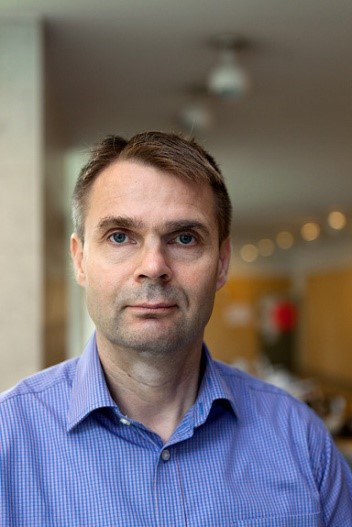
Title: Joint Radar-Communications: Spectrum Sharing, Cooperation and Waveform Optimization
Date: Oct. 23, 2018, Tue.
Time: 1:30 PM
Venue: CALIT2 Room 3008
ABSTRACT
Synergistic design of communications and radar systems with potentially common spectral and hardware resources provides means for
efficiently utilizing a limited radio-frequency spectrum. Such coexistence, RF convergence and joint radar-communications models may provide advantages of low-cost, compact size, reduced power consumption, spectrum sharing, improved performance, and safety due to enhanced information sharing and interference management. Coexistence among different radio system will a part of spectrum regulation. Moreover, flexible use of different degrees of freedom (e.g frequency, space, code, polarization) and awareness about the spectrum are key enabling technologies for the future fully adaptive and cognitive radar systems. In this talk, a brief overview of different approaches for coexistence, cooperation and design of joint radar-communications systems is provided. Waveform optimization such that both subsystems achieve their desired performance levels is studied. Multicarrier waveforms that have a high potential for joint radar-communication operation and RF convergence are considered. In radar system, optimal waveform design depends on the radar task, target scenario and awareness about the state of the radar spectrum whereas communications subsystem aims at providing sufficient quality. Examples of waveform optimization for different tasks and constraints as well as joint precoder-decoder designs for avoiding interferences in both subsystems are presented. The emerging applications of coexisting radar-communications systems include automotive radars, health and well-being monitoring as well as classical surveillance and communications tasks.
SPEAKER'S BIOGRAPHY
Visa Koivunen (IEEE Fellow) received his D.Sc. (EE) degree with honors from the University of Oulu, Dept. of Electrical Engineering. He received the primus doctor award among the doctoral graduates in years 1989-1994. From 1992 to 1995 he was a visiting researcher at the University of Pennsylvania, Philadelphia, USA. Since 1999 he has been a full Professor of Signal Processing at Aalto University (formerly known as Helsinki Univ of Technology), Finland. He received the Academy professor position (distinguished professor nominated by the Academy of Finland). During 2003-2006 he was adjunct full professor at the Moore School of Electrical Engineering, University of Pennsylvania, Philadelphia, USA. During his sabbatical term in 2006-2007 he was a visiting fellow at Princeton University, NJ, USA. He has also been a part-time Visiting Fellow at Nokia Research Center (2006-2012). Since 2010 he has been visiting fellow (part-time) at Princeton University and spent a full sabbatical at Princeton University for the academic year 2013-2014 and multiple mini-sababticals. He has served as an associate editor for IEEE Signal Processing Letters and IEEE Transactions on Signal Processing. He has served as co-editor for two IEEE JSTSP special issues. He was a member of editorial board for IEEE Signal Processing Magazine. He has been a member of the IEEE Signal Processing Society technical committees SPCOM-TC and SAM-TC. He was the general chair of the IEEE SPAWC 2007 conference in Helsinki, Finland June 2007. He was the Technical Program Chair for the IEEE SPAWC 2015 in Stockholm. He is the General Chair of 2018 Asilomar Conference.
Dr. Koivunen's research interest include statistical, communications, sensor array and multichannel signal processing and their applications in wireless comms, future radar systems, cyber-physical systems such as smart grid and large-scale data analytics. He has published more than 380 papers in international scientific conferences and journals and holds 6 patents. He has advised 28 doctoral theses in these research topics. He co-authored the papers receiving the best paper award in IEEE PIMRC 2005, EUSIPCO'2006,EUCAP (European Conference on Antennas and Propagation) 2006 and COCORA 2012. He has been awarded the IEEE Signal Processing Society best paper award for the year 2007 (with J. Eriksson) and for the second time in 2017 (with Zoubir et al).
He has been awarded the 2015 EURASIP (European Association for Signal Processing) Technical Achievement Award for fundamental contributions to statistical signal processing and its applications in wireless communications, radar and related fields.
CPCC Seminar by Dr. Shahar Kvatinsky
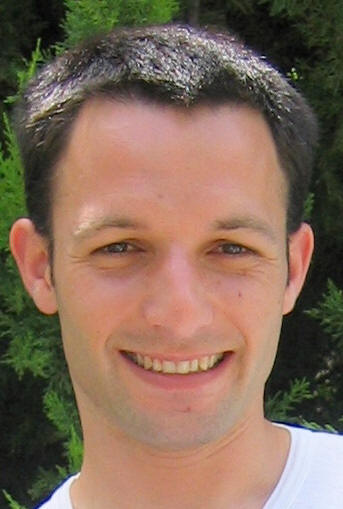
Title: Designing Extremely Efficient Computers with Memristors
Date: Aug. 21, Tue.
Time: 11:00 AM
Venue: Harut Barsamian Colloquia (Engineering Hall 2430)
ABSTRACT
For decades, the driving force for improvements in the computer industry has relied on scaling down the size of the transistors. Unfortunately, this trend has slowed down and computers cannot be improved anymore just by adding more devices. To overcome this challenge, numerous solutions are explored today, both on the technology domain (i.e., finding technologies to replace or complement CMOS transistors) and on the architecture domain. The classical computer architecture, based on general purpose processors and one coherent memory hierarchy, is insufficient anymore.
In this talk, I will discuss how new technologies are the enablers of novel heterogeneous computer architectures. The talk will focus on resistive non-volatile memory technologies (memristors), and I will show how they can be much more than just a memory technology and how they can be used for different interesting applications such as artificial intelligence, internet-of-things, image processing and more.
SPEAKER'S BIOGRAPHY
Shahar Kvatinsky is an assistant professor at the Andrew and Erna Viterbi Faculty of Electrical Engineering, Technion - Israel Institute of Technology. He received the B.Sc. degree in computer engineering and applied physics and an MBA degree in 2009 and 2010, respectively, both from the Hebrew University of Jerusalem, and the Ph.D. degree in electrical engineering from the Technion - Israel Institute of Technology in 2014. From 2006 to 2009 he was with Intel as a circuit designer and was a post-doctoral research fellow at Stanford University from 2014 to 2015. Kvatinsky is an editor of Microelectronics Journal and has been the recipient of the 2015 IEEE Guillemin-Cauer Best Paper Award, 2015 Best Paper of Computer Architecture Letters, Viterbi Fellowship, Jacobs Fellowship, ERC starting grant, the 2017 Pazy Memorial Award, the 2014 and 2017 Hershel Rich Technion Innovation Awards, 2013 Sanford Kaplan Prize for Creative Management in High Tech, 2010 Benin prize, and six Technion excellence teaching awards. His current research is focused on circuits and architectures with emerging memory technologies and design of energy efficient architectures.
CPCC Seminar by Prof. Tareq AlNaffouri
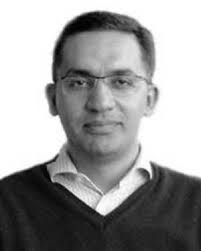
Title: Detection and Estimation Using Regularized Least Squares: Performance Analysis and Optimal Tuning Under Uncertainty
Date: June 6, 2018, Wed.
Time: 2:00 PM
Venue: Harut Barsamian Colloquia (Engineering Hall 2430)
ABSTRACT
This talk considers the problem of signal estimation and detection in linear systems under additive and multiplicative uncertainty.
The estimation problem is considered in the first part of the talk. We utilize regularized least squares for signal estimation and show how the regularization parameter can be optimally tuned to take care of 1) the additive noise 2) the ill-posed-ness of the channel matrix and 3) channel (multiplicative) uncertainty. The performance of the proposed approach is demonstrated by applying it to a large set of real world discrete ill-posed problems showing that it outperforms popular benchmark regularization methods in many cases while maintaining lower computational complexity
In the second part of the talk we utilize regularized least squared and its boxed relaxed version for BPSK detection. We derive precise error analysis at high dimensions using the Convex Gaussian Min-max theorem, a recently developed tool that emerged from the theory of compressed sensing. We take advantage of these accurate performance prediction results to optimally tune the parameters involved in the detection. We further extend our analysis to the case where channel uncertainty is also present and use that to optimally divide the power between the two phases of channel estimation and data transmission.
SPEAKER'S BIOGRAPHY
Tareq Y. Al-Naffouri received the B.S. degrees in mathematics and electrical engineering (with first honors) from King Fahd University of Petroleum and Minerals, Dhahran, Saudi Arabia, the M.S. degree in electrical engineering from Georgia Institute of Technology, Atlanta, and the Ph.D. degree in electrical engineering from Stanford University, CA, in 2004. He was a visiting scholar at the California Institute of Technology, Pasadena, from January to August 2005 and during the summer of 2006. He was a Fulbright Scholar at the University of Southern California from February to September 2008. He is currently an Associate Professor at the Electrical Engineering Department at King Abdullah University of Science & Technology (KAUST) Saudi Arabia. His research interests lie in the areas of adaptive, statistical, and sparse signal processing and their applications, and in localization, and machine learning.
CPCC Seminar by Dr. Netanel Raviv
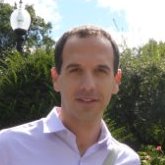
Title: Private information retrieval in graph based replication systems
Date: May 31, 2018, Thu.
Time: 1:00 PM
Venue: Harut Barsamian Colloquia (Engineering Hall 2430)
ABSTRACT
Replication is prevalent in both theory and practice as a means for obtaining robustness in distributed storage systems. A system in which every data entry is stored on two separate servers gives rise to a graph structure in a natural way, and the combinatorial properties of this graph shed light on the possible features of the system. One possible feature of interest, that has recently gained renewed attention, is private information retrieval (PIR). A PIR protocol enables a user to obtain a data entry from a storage system without revealing the identity of the requested entry to sets of colluding servers. In this talk we introduce a simple PIR protocol for graph based replication systems, which guarantees perfect secrecy against any set of colluding servers that does not induce a cycle. Furthermore, we show that the secrecy deteriorates gracefully with the number of cycles in the colluding set, and that the upload complexity can be reduced for graphs of certain specialized structure.
SPEAKER'S BIOGRAPHY
Netanel Raviv received a B.Sc. cum laude in mathematics and computer science in 2010, an M.Sc. and Ph.D. in computer science in 2013 and 2017, respectively, all from the Technion, Israel. He is now a postdoctoral scholar at the Center for the Mathematics of Information (CMI) at the California Institute of Technology. He is an awardee of the IBM Ph.D. fellowship for the academic year of 2015-2016, the first prize in the Feder family competition for best student work in communication technology, and the Lester-Deutsche Postdoctoral Fellowship. His research interests include applications of coding theory to networks, storage, and computation.
CPCC Seminar by Roger Piqueras Jover
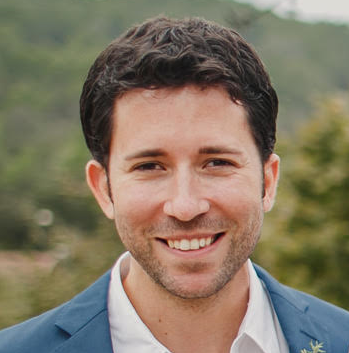
Title: Protocol-fuzzing mobile networks with open-source tools to enhance the security of LTE and 5G mobile networks
Date: May 15, 2018, Tue.
Time: 10:00 AM
Venue: ICS DBH 3011
ABSTRACT
The Long Term Evolution (LTE) is the latest mobile communications standard being deployed globally to provide connectivity to billions of mobile devices, from personal cell-phones to all types of critical systems, such as self-driving cars, medical appliances and industrial IoT sensors. As such, the security of this communication standard is of paramount importance. However, there is concerning inherent protocol security threats in LTE due to the large amount of unauthenticated and unprotected messages exchanged between a base station and a mobile device prior to the authentication security handshake.
Open source implementations of the LTE standards rapidly matured within the last couple of years. This, in combination with sophisticated yet low cost software radio hardware, fueled a new wave of security research that identified numerous protocol security issues in LTE that could allow an adversary to deny the service of mobile endpoints and track the location of users. This talk will summarize an ongoing effort on protocol-fuzzing LTE mobile networks using open-software tools. The protocol exploits against mobile endpoints that were discovered two years ago will be discussed as an introduction to the new systematic approach to protocol-fuzz LTE networks, introducing as well a series of new potential exploits in the uplink, against the network infrastructure and mobile devices outside of the radio range of the adversary.
Finally, these LTE protocol exploits are analyzed in the context of the recently (December 2017) published first release of the 3GPP 5G specifications (3GPP Rel. 15) for the 5G Radio Access Network (5G New Radio) and Core Network (5G System). Unfortunately, not only most protocol-aware radio jamming issues and LTE protocol exploits are still a potential threat, but there is a large number of new pre-authentication messages and new fields to already existing messages that could open the doors to further 5G-specific exploits.
SPEAKER'S BIOGRAPHY
Roger Piqueras Jover is a Wireless Security Research Scientist and Security Architect at the CTO Security Architecture team of Bloomberg LP, where he leads projects on mobile/wireless security and is actively involved in hardware security, network security, machine learning and anomaly/fraud detection. Previous to Bloomberg, he spent 5 years at the AT&T Security Research Center (AT&T SRC), where he led the research area on wireless and LTE mobile network security and received numerous awards for his work.
Roger holds 17 issued patents on mobile and wireless security, has co-authored manuscripts in numerous top communications and security conferences and is the Technical Co-Chair for the ongoing IEEE 5G Summit series.
Roger holds a Dipl. Ing. from Politechnical University of Catalunya (Barcelona, Spain), a Master's in Electrical and Computer Engineering from University of California Irvine and a Master's/MPhil and EBD (Everything But Dissertation) in Electrical Engineering from Columbia University.
CPCC Distinguished Seminar by Prof. Vahid Tarokh
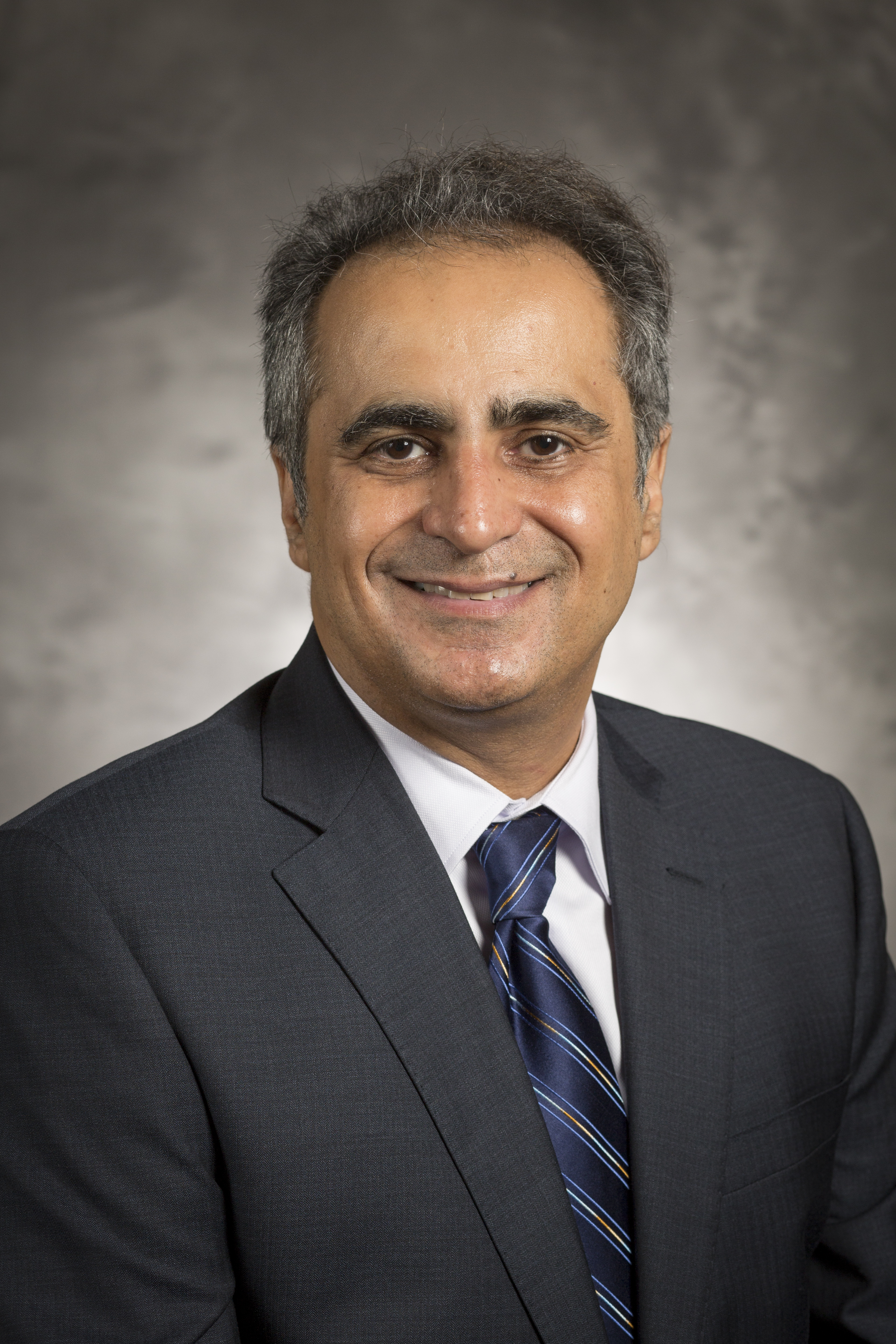
Title: Robust Classification and Change Detection for Brain-Computer Interfaces
Date: May 10, 2018, Thu.
Time: 11:00 am
Venue: Harut Barsamian Colloquia (Engineering Hall 2430)
ABSTRACT
In this talk, we will first discuss eye movement decoding in a working memory experiment involving a macaque monkey. Our objective is to use the local field potentials (LFPs) collected from the brain of the monkey to decode the type of task that the monkey is doing, and the direction of saccade in each task. We will show that the LFP time-series data can be modeled using a nonparametric regression framework, and show that the classifiers trained using minimax function estimators as features are robust and consistent. We will also discuss application of the resulting classifier to the brain data.
We will then briefly discuss the problem of change detection applied to spike data from a mice experiment collected using cues and electric shocks.
This is a joint work with Taposh Banerjee.
SPEAKER'S BIOGRAPHY
Vahid Tarokh is Rhodes Family Professor of Electrical and Computer Engineering, Professor of Mathematics, and Computer Science at Duke University. He worked at AT&T Labs-Research until 2000, and subsequently at MIT (as an Associate Professor of EECS) until 2002. He joined Harvard University as Perkins Professor of Applied Mathematics and Hammond Vinton Hayes Senior Fellow of Electrical Engineering. He then joined Duke University in January 2018. His current research focuses on statistical signal processing and applications. Dr. Tarokh has received a number of awards, and holds four honorary degrees.
CPCC Seminar by Prof. Ahmed Helmy
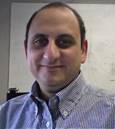
Title: Data-Driven Design and Simulation of Future Mobile Networks (with applications in Vehicular Networks, Transportation, Mobile Health)
Date: April 6, 2018, Fri.
Time: 9:15 am
Venue: McDonnell Douglas Engineering Auditorium
ABSTRACT
The future of social networking is in the mobile world. Future network services are expected to center around human activity and behavior. Wireless networks (including ad hoc, sensor networks and DTNs) are expected to grow significantly and accommodate higher levels of mobility and interaction. In such a highly dynamic environment, networks need to adapt efficiently (performance-wise) and gracefully (correctness and functionality-wise) to growth and dynamics in many dimensions, including behavioral and mobility patterns, on-line activity and load. Understanding and realistically modeling this multi-dimensional space is essential to the design and evaluation of efficient protocols and services of the future Internet.
This level of understanding to drive the modeling and protocol design shall be developed using data-driven paradigm. The design philosophy for the proposed paradigm is unique in that it begins by intensive analysis of measurements from the target contexts, which then drive the modeling, protocol and service design through a systematic framework, called TRACE. Components of TRACE include: 1. Tracing and monitoring of behavior, 2. Representing and Analyzing the data, 3. Characterizing behavioral profiles using data mining and clustering techniques, and finally 4. Employing the understanding and insight attained into developing realistic models of mobile user behavior, and designing efficient protocols and services for future mobile societies.
Tracing at a large scale represents the next frontier for sensor networks (sensing the human society). Our latest progress in that field (MobiLib) shall be presented, along with data mining and machine learning tools to meaningfully analyze the data. Several challenges will be presented and novel use of clustering algorithms will be provided. Major contributions to modeling of human mobility; the time variant community model, TVC and Community Mobility (COBRA) will also be discussed. In addition, a novel framework for measuring vehicular mobility at planet scale, using thousands of webcams around the world, shall be presented.
Insights developed through analysis, mining and modeling will be utilized to introduce and design a novel communication paradigm, called profile-cast, to support new classes of service for interest-aware routing and dissemination of information, queries and resource discovery, trust and participatory sensing (crowd sourcing) in future mobile networks. Unlike conventional - unicast, multicast or directory based - paradigms, the proposed paradigm infers user interest using implicit behavioral profiling via self-monitoring and mining techniques. In order to capture interest, a spatio-temporal representation is introduced to capture users behavioral-space. Users can identify similarity of interest based on their position in such space.
The proposed profile-cast paradigm will act as enabler to new classes of service, ranging from mobile social networking, and navigation of mobile societies and spaces, to computational health care, mhealth (mobile health), emergency management and education, among others. The ideas of similarity-based support groups will be specifically highlighted for potential applications in disease-self management, collaborative education, and emergency response.
SPEAKER'S BIOGRAPHY
Dr. Ahmed Helmy is a Professor and Graduate Director at the Computer and Information Science and Engineering (CISE) Department at the University of Florida (UF). He is also the August-Wilhelm Scheer Honorary Fellow of TUM Institute for Advanced Study, and visiting Professor at the Techincal University of Munich (TUM), Germany summer 2017. He received his Ph.D. in Computer Science 1999 from the University of Southern California (USC), M.Sc. in Electrical Engineering (EE) 1995 from USC, M.Sc. in Engineering Mathematics in 1994 and B.Sc. in Electronics and Communications Engineering 1992 from Cairo University, Egypt. He was a key researcher in the Network Simulator NS-2 and Protocol-Independent Multicast (PIM) projects at USC/ISI from 1995 to 1999. Before joining UF in 2006, he was on the Electrical Engineering-Systems Department faculty at USC starting Fall 1999, where he founded and directed the Wireless and Sensor Networks Labs.
In 2002, he received the NSF CAREER Award for his research on resource discovery and mobility modeling in large-scale wireless networks (MARS). In 2000 he received the Zumberge Award, and in 2002 he received the best paper award from the IEEE/IFIP MMNS Conference. In 2003 he was the Electrical Engineering nominee for the USC Engineering Jr. Faculty Research Award, and a nominee for the Sloan Fellowship. In 2004 and 2005 he got the best faculty merit ranking at the Electrical Engineering department at USC. He was a winner in the ACM MobiCom 2007, a finalist in 2008 SRC competitions, a 2nd place winner in ACM MobiCom WiNTECH demo competition 2010, and a finalist/runner-up in the 2012 ACM MobiCom SRC competition. In '13 he won the best paper award from ACM SIGSPATIAL IWCTS. In 2014 he won the Epilepsy Foundation award for innovation, and the ACM MobiCom Mobile App Competition (1st place) and startup pitch competition (2nd place). In 2015 he won the Internet Technical Committee (ITC) best paper award by for seven IEEE ComSoc conferences/symposia of 2013. In 2017 he (with his group) won the best poster award at IEEE INFOCOM conference. He is leading (or has led) several NSF funded projects including MARS, STRESS, ACQUIRE, AWARE and MobiBench.
His research interests include design, analysis and measurement of wireless ad hoc, sensor and mobile social networks, mobility modeling, multicast protocols, IP mobility and network simulation. He has published over 150 journal articles, conference papers and posters, book chapters, IETF RFCs and Internet drafts. His research is (or has been) supported by grants from NSF, KACST, Aalto University, USC, Intel, Cisco, DARPA, NASA, Nortel, HP, Pratt & Whitney, Siemens and SGI. He has over 13,100 citations with H-index=47, i10-index=120, (Google Scholar).
Dr. Helmy is an editor of the IEEE Transactions on Mobile Computing (TMC), an area editor of the Ad hoc Networks Journal - ElSevier (since 2004), and an area editor of the IEEE Computer (since 2010). He was the finance chair of ACM MobiCom '13, co-chair of ACM MobiSys HotPlanet '12, program co-chair for ACM MSWiM 2011, and ACM MobiCom CHANTS workshop 2011, co-chair of AdhocNets 2011, honorary program chair of IEEE/ACM IWCMC 2011, general chair of IWCMC 2010, vice-chair of IEEE MASS 2010, plenary panel chair of IEEE Globecom 2010, co-chair of IEEE Infocom Global Internet (GI) workshop 2008, and IFIP/IEEE MMNS 2006, vice-chair for IEEE ICPADS 2006, IEEE HiPC 2007, and local & poster chair for IEEE ICNP 2008 and 2009. He is ACM SIGMOBILE workshop coordination chair (for MobiCom, Mobihoc, Mobisys, Sensys) (since 2006). He has served on numerous committees of IEEE and ACM conferences on networks. He is a senior member of the IEEE and an ACM Distinguished Scientist.
CPCC Distinguished Seminar by Prof. Eytan Modiano
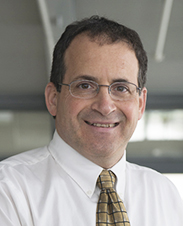
Title: Optimal Stochastic Control for Generalized Network Flow Problems
Date: Jan. 26, 2018, Fri.
Time: 11:00 am
Venue: DBH 6011
ABSTRACT
We will describe a new online dynamic policy, called Universal Max-Weight
(UMW), for throughput-optimal routing and scheduling in wireless networks
with an arbitrary mix of unicast, broadcast, multicast and anycast traffic.
To the best of our knowledge, UMW is the first throughput-optimal algorithm
for solving the generalized network-flow problem. Building upon UMW, we also
design an admission control, routing and scheduling policy that maximizes
network utility, while simultaneously keeping the physical queues in the
network stable.
When specialized to the unicast setting, the UMW policy yields a
throughput-optimal, loop-free, routing and link-scheduling policy. This is
in contrast to the Back-Pressure (BP) policy which allows for packet
cycling, resulting in excessive latency. Extensive simulation results show
that the proposed UMW policy incurs substantially smaller delays as compared
to backpressure. Conceptually, the UMW policy is derived by relaxing the
precedence constraints associated with multi-hop routing and then solving a
min-cost routing and max-weight scheduling problem on a virtual network of
queues. The proof of optimality combines ideas from stochastic Lyapunov
theory with a sample path argument from adversarial queueing theory.
SPEAKER'S BIOGRAPHY
Eytan Modiano received his B.S. degree in Electrical Engineering and
Computer Science from the University of Connecticut at Storrs in 1986 and
his M.S. and PhD degrees, both in Electrical Engineering, from the
University of Maryland, College Park, MD, in 1989 and 1992 respectively. He
was a Naval Research Laboratory Fellow between 1987 and 1992 and a National
Research Council Post Doctoral Fellow during 1992-1993. Between 1993 and
1999 he was with MIT Lincoln Laboratory. Since 1999 he has been on the
faculty at MIT, where he is a Professor and Associate Department Head in the
Department of Aeronautics and Astronautics, and Associate Director of the
Laboratory for Information and Decision Systems (LIDS).
His research is on communication networks and protocols with emphasis on
satellite, wireless, and optical networks. He is the co-recipient of the
MobiHoc 2016 best paper award, the Wiopt 2013 best paper award, and the
Sigmetrics 2006 Best paper award. He is the Editor-in-Chief for IEEE/ACM
Transactions on Networking, and served as Associate Editor for IEEE
Transactions on Information Theory and IEEE/ACM Transactions on Networking.
He was the Technical Program co-chair for IEEE Wiopt 2006, IEEE Infocom
2007, ACM MobiHoc 2007, and DRCN 2015. He is a Fellow of the IEEE and an
Associate Fellow of the AIAA, and served on the IEEE Fellows committee.
CPCC Seminar by Dr. Phillip Walk
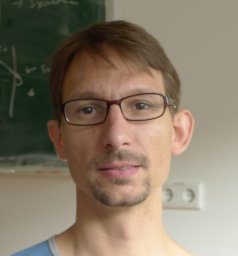
Title: Blind Deconvolution for Short Message Communications over Wireless Multipath Channels
Date: Jan. 22, 2018, Mon.
Time: 11:00 AM
Venue: Harut Barsamian Colloquia (Engineering Hall 2430)
ABSTRACT
Blind deconvolution is a challenging problem in signal processing with a
long history. We will present new deconvolution algorithms which perform
stable and efficient without using any stochastic assumptions on the
signals and only demand a coprime zero structure. For the next
generation of wireless networks such blind deconvolution methods are
crucial to provide a sporadic short message communication over fast
fading and non-coherent wireless channels. Herein we introduce a Binary
Modulation On Conjugate-Reciprocal Zeros (BMOCZ) to communicate
reliable over an unknown finite impulse response channel by using a low
complexity decoder at the receiver, giving by a Direct Zero Testing
(DiZeT) on the magnitude of the received z-transform. Moreover, we can
significantly improve the bit error performance by introducing a weight
for the DiZeT decoder, which we will analyze in more detail for BMOCZ by
using Huffman signals. Furthermore, our signaling scheme is applicable
to multiple antenna scenarios and is demonstrated to exploit the antenna
diversity. Due to the low complexity of the decoder, our scheme looks
promising for real-time applications as needed in many mobile and
machine type devices.
SPEAKER'S BIOGRAPHY
Philipp Walk received his PhD in the Electrical Engineering Department
from the Technical University Munich, Germany, in 2014 under the
supervision of Holger Boche, where he continued as a postdoctoral
researcher until 2015. In September 2015 he received a DFG postdoctoral
fellowship and joined the group of Babak Hassibi in the Electrical
Engineering Department at Caltech, Pasadena. From February to May 2016
he received a fellowship for attending the Hausdorff trimester program
"Mathematics of Signal Processing" in Bonn, Germany. Walk's research
interests are in wireless communication, blind deconvolution, phase
retrieval, and physical layer security.
Events
CPCC Seminar by Dr. Ryan Gabrys
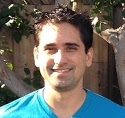
Title: Coding for Emerging DNA Storage Systems
Date: Nov. 30, 2017, Thu.
Time: 11:00 AM
Venue: CALIT2 Room 3008
ABSTRACT
DNA-based data storage is an emerging technology of potentially unprecedented density, durability, and replication efficiency. In this talk, we provide an overview of existing DNA storage architectures and the underlying coding techniques enabling these technologies. We then focus our attention to a recent work where we designed the first portable, random-access platform using nanopore sequencers. Our system produced error-free readouts while maintaining the highest reported information rate/density, which represents a crucial step towards the development of a practical DNA-based storage system.
SPEAKER'S BIOGRAPHY
Ryan Gabrys received his Ph.D. degree in electrical engineering from the University of California - Los Angeles. Since 2014, he has been a postdoctoral researcher at the University of Illinois - Urbana Champaign. Currently, he works at SPAWAR Systems Center Pacific. His research interests include coding theory with applications to storage and synchronization.
CPCC Distinguished Seminar by Dr. Reinaldo Valenzuela
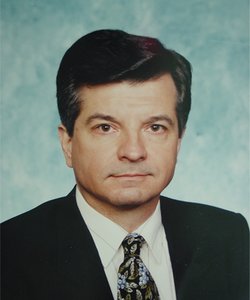
Title: 5G New Deployment Scenarios: Opportunities and Challenges
Date: Nov. 17, 2017, Fri.
Time: 9:15 AM
Venue: McDonnell Douglas Engineering Auditorium (MDEA)
ABSTRACT
The insatiable demand for media rich content and the increasing
availability of advanced devices such as smart phones, tablets, etc.,
has forced the mobile communications eco system to start in earnest to
consider the next generation solutions to address these needs. Some of
the options being mentioned as ingredients for such 5th Generation
mobile radio systems include Small Cells, HetNets, Carrier Aggregation, Machine-to-Machine, Internet-of-Things, Relays, Device-to-Device and operation in the millimeter wave spectrum range, among others. In this talk, I will review some of the background trends driving the evolution
of broadband wireless access that will impact the technology choices beyond 2020. Then, I will consider in some detail some of the most intriguing options service providers may consider.
SPEAKER'S BIOGRAPHY
Reinaldo Valenzuela received the B.Sc. degree from the University of
Chile, and the Ph.D. degree from the Imperial College of Science and
Technology, University of London, U.K. At Bell Laboratories, he
studied indoor microwave propagation and modeling, packet reservation
multiple access for wireless systems, and optical WDM networks. He
became the Manager of the Voice Research Department with Motorola
Codex, where he was involved in the implementation integrated voice
and data packet systems. On returning to Bell Laboratories, he led a
multi-disciplinary team to create a software tool for wireless system
engineering, now in widespread use with Lucent Technologies. He
received the Distinguished Member of the Technical Staff Award and is
the Director of the Wireless Communications Research Department. He
has published over 80 papers and holds 12 patents. He is interested in
microwave propagation measurements and models, intelligent antennas,
fifth generation wireless system, and space time systems achieving
high capacities using transmit and receive antenna arrays. He is an
IEEE Fellow, Bell Labs Fellow, recipient of the IEEE Eric E. Sumner
award, and is a member of the National Academy of Engineering.
CPCC Distinguished Seminar by Prof. Jan Rabaey
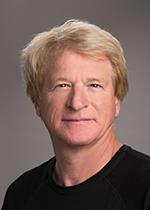
Title: Human-Centric Computing - The Case for a Hyper-Dimensional Approach
Date: June 2, 2017, Fri.
Time: 9:15 AM
Venue: McDonnell Douglas Engineering Auditorium (MDEA)
ABSTRACT
Some of most compelling application domains of the IoT and Swarm concepts relate to how humans interact with the world around it and the cyberworld beyond. While the proliferation of communication and data processing devices has profoundly altered our interaction patterns, little has been changed in the way we process inputs (sensory) and outputs (actuation). The combination of IoT (Swarms) and wearable devices offers the potential for changing all of this, opening the door for true human augmentation.
Yet, making sense of the plethora of information received from the often noisy sensors and making reliable decisions within very tight latency bounds (< 10 ms) typically demands huge computational workloads to be performed in wearable form factors at extreme energy efficiency. In this presentation, we will make the case why alternative non-Von Neumann computational paradigms and architectures may be the right choice for these cognitive processing tasks. Even more, we will focus on a computational model called Hyper-Dimensional Computing (HDC), and illustrate with concrete examples of why this approach may be the right.
SPEAKER'S BIOGRAPHY
Professor Jan Rabaey holds the Donald O. Pederson Distinguished Professorship at the University of California at Berkeley. He is a founding director of the Berkeley Wireless Research Center (BWRC) and the Berkeley Ubiquitous SwarmLab, and is currently the Electrical Engineering Division Chair at Berkeley.
Prof. Rabaey has made high-impact contributions to a number of fields, including advanced wireless systems, low power integrated circuits, sensor networks, and ubiquitous computing. His current interests include the conception of the next-generation integrated wireless systems over a broad range of applications, as well as exploring the interaction between the cyber and the biological world.
He is the recipient of major awards, amongst which the IEEE Mac Van Valkenburg Award, the European Design Automation Association (EDAA) Lifetime Achievement award, and the Semiconductor Industry Association (SIA) University Researcher Award. He is an IEEE Fellow, a member of the Royal Flemish Academy of Sciences and Arts of Belgium, and has received honorary doctorates from Lund (Sweden), Antwerp (Belgium) and Tampere (Finland). He has been involved in a broad variety of start-up ventures.
CPCC Seminar by Dr. Muralidhar Rangaswamy
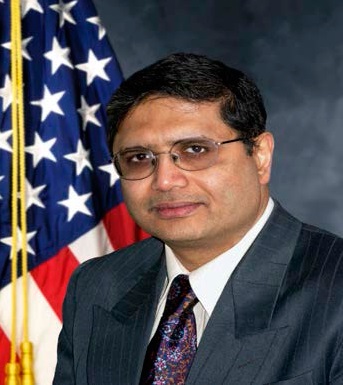
Title: Fully Adaptive Radar
Date: Feb. 21, 2017, Tue.
Time: 4:00 PM
Venue: CALIT2 Room 3008
ABSTRACT
This tutorial will provide an overview of adaptive radar processing from the
standpoint of bringing to bear optimally and adaptively, all available degrees
of freedom on transmit and receive to address the problem of detection,
tracking, and classification from a single as well as a multi-sensor
perspective. The idea of closed loop radar processing will be introduced.
Pertinent research challenges will be identified and addressed. Important
issues of training data heterogeneity, computational cost, waveform
optimization and design as well as joint transmit-receive adaptive processing
will be addressed.
SPEAKER'S BIOGRAPHY
Muralidhar Rangaswamy received the B.E. degree in Electronics
Engineering from Bangalore University, Bangalore, India in 1985 and the M.S. and Ph.D.
degrees in Electrical Engineering from Syracuse University, Syracuse, NY, in 1992. He is
presently employed as the Senior Advisor for Radar Research at the RF Exploitation
Branch within the Sensors Directorate of the Air Force Research Laboratory (AFRL). Prior to this he
has held industrial and academic appointments. His research interests include radar signal processing, spectrum estimation, modeling non-
Gaussian interference phenomena, and statistical communication theory. He has co-authored
more than 200 refereed journal and conference record papers in the areas of his research
interests. Additionally, he is a contributor to 8 books and is a co-inventor on 3 U.S. patents.
Dr. Rangaswamy served as the Technical Editor (Associate Editor-in-Chief) for Radar Systems
in the IEEE Transactions on Aerospace and Electronic Systems (IEEE-TAES) from 2007-2015
and as an Associate Editor for Radar Systems within the IEEE-TAES from 2004-2007.
He was the Co-Editor-in-Chief for the Digital Signal Processing journal between 2005 and 2011.
Dr. Rangaswamy was a member of the Senior Editorial Board of the IEEE Journal of Selected
Topics in Signal Processing (Jan 2012-Dec 2014). He was a 2 term elected member of the
sensor array and multichannel processing technical committee (SAM-TC) of the IEEE Signal Processing Society
between January 2005 and December 2010 and serves as a member of the Radar Systems Panel (RSP)
in the IEEE-AES Society. He was the General Chairman for the 4 the IEEE Workshop on Sensor Array and Multichannel Processing
(SAM-2006), Waltham, MA, July 2006. Dr. Rangaswamy has served on the Technical Committee of the IEEE Radar
Conference series in a myriad of roles (Track Chair, Session Chair, Special Session Organizer
and Chair, Paper Selection Committee Member, Tutorial Lecturer). He served as the Publicity
Chair for the First IEEE International Conference on Waveform Diversity and Design,
Edinburgh, U.K. November 2004. He presently serves on the conference sub-committee of the
RSP. He was the Technical Program Chairman for the 2014 IEEE Radar Conference.
He received the IEEE Warren White Radar Award in 2013, the 2013 Affiliate Societies Council
Dayton (ASC-D) Outstanding Scientist and Engineer Award, the 2007 IEEE Region 1 Award,
the 2006 IEEE Boston Section Distinguished Member Award, and the 2005 IEEE-AESS
Fred Nathanson memorial outstanding young radar engineer award. He was elected as a Fellow of
the IEEE in January 2006 with the citation "for contributions to mathematical techniques for
radar space-time adaptive processing". He received the 2012 and 2005
Charles Ryan basic research award from the Sensors Directorate of AFRL, in addition to more than 40
scientific achievement awards.
CPCC Seminar by Roger Piqueras Jover

Title: LTE security, protocol exploits and location tracking experimentation with low-cost software radio
Date: Feb. 16, 2017, Thu.
Time: 11:00 AM
Venue: Harut Barsamian Colloquia (Engineering Hall 2430)
ABSTRACT
The security flaws of legacy GSM networks, which lack of mutual authentication and implement an outdated encryption algorithm, are well understood among the technology community. Moreover, until now, the main cellular vulnerabilities being discovered and exploited in the mobile security research field were based on 2G base stations and GSM open source implementations. The Long Term Evolution (LTE) is the newest standard being deployed globally for mobile communications, and is generally considered secure. LTE's mutual authentication and strong encryption schemes result in the false assumption that LTE networks are not vulnerable to, for example, rogue base stations, IMSI catchers and protocol exploits. However, these threats are also possible in LTE. Before the authentication and encryption steps of an LTE connection are executed, a mobile device engages in a substantial exchange of unprotected messages with *any* LTE base station (real or rogue) that advertises itself with the right broadcast information. Eavesdropping or spoofing these messages can be leveraged to implement a long list of exploits to which all LTE mobile devices are vulnerable.
This talk will demonstrate how to eavesdrop LTE base station broadcast messages, and how to implement full-LTE IMSI catchers and other LTE protocol exploits, such as blocking SIMs and devices. Details will be provided as well on a previously unknown technique to track the location of mobile devices as the connection moves from tower to tower. We will discuss as well the necessary toolset to implement these and other exploits, which are possible with simply $1.5k worth of off-the-shelf hardware and some modifications of the code of widely available LTE open source implementations.
SPEAKER'S BIOGRAPHY
Roger Piqueras Jover is a Wireless Security Research Scientist at the CTO Security Architecture team of Bloomberg LP, where he leads the projects on mobile/wireless security. He is also actively involved in hardware and network security, big data analysis and anomaly detection. Previous to Bloomberg, he spent 5 years at the AT&T Security Research Center leading projects on LTE mobile network security. He holds a Dipl.-Ing. in Telecommunications Engineering from the Universitat Politecnica de Catalunya (UPC Barcelona), a Master's in Electrical and Computer Engineering from UC Irvine and a Master's/MPhil (EBD) in Electrical Engineering from Columbia University.
Roger's research interests are in the area of mobile and wireless communications, resource allocation, new network architectures and technologies for 5G and security for wireless networks. In his spare time, he actively works in identifying, implementing on software-radio and proposing solutions to PHY layer threats, rogue base stations and protocol exploits against LTE cellular networks.
CPCC Seminar by Prof. Constantinos Papadias
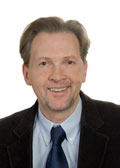
Title: Low complexity antenna arrays and techniques for wireless communication and sensing
Date: Oct. 7, 2016, Fri.
Time: 9:15 AM
Venue: McDonnell Douglas Engineering Auditorium (MDEA)
ABSTRACT
In this talk we will provide an overview of recently developed techniques in the area of compact antenna arrays that have fewer radio frequency (RF) chains than elements. These arrays comprise of both conventionally fed active antennas and passive ones that radiate due to the mutual coupling from neighboring elements. By using load control circuits, the mutual coupling between adjacent elements can be exploited in order to produce the desired radiation patterns. Compared to conventional antenna arrays, which require one RF chain per element, these systems have a clear double benefit: they require fewer RF chains, making them cheaper and less power-consuming; and they occupy a smaller volume, due to the small inter-element distances needed for strong mutual coupling. However, it is not always straightforward to design the mixed analog-digital circuit logic that can produce arbitrary (e.g. channel-dependent) beams or other types of spatial multiplexing and precoding. A number of recent advances in this direction will be provided, including techniques for closed-loop MIMO transmission, as well as multi-user precoding. The corresponding applications range from MIMO handsets to small cell access points and remote radio heads to Massive arrays. The use of such low-complexity arrays in cognitive radio networks and other spectrum sharing systems is another important application that will be emphasized. The talk will conclude with the presentation of a number of recent over-the-air experiments and demos performed at AIT's Broadband Wireless & Sensor Networks (B-WiSE) Research Lab that showcase the benefits of these systems in various setups, which underline their potential for next-generation wireless devices and networks.
SPEAKER'S BIOGRAPHY
Constantinos B. Papadiasis the Dean of Athens Information Technology (AIT), in Athens, Greece, where he is also Professor and Head of its Broadband Wireless and Sensor Networks (B-WiSE) Research Group. He is also Adjunct Professor at Aalborg University in Denmark. He received the Diploma of Electrical Engineering from the National Technical University of Athens (NTUA) in 1991 and the Doctorate degree in Signal Processing (highest honors) from the Ecole Nationale Superieuredes Telecommunications (ENST), Paris, France, in 1995. He was a researcher at Institut Eurecom (1992-1995), Stanford University (1995-1997) and Bell Labs (as Member of Technical Staff from 1997-2001 and as Technical Manager from 2001-2006). He was also Adjunct Professor at Columbia University (2004-2005) and Carnegie Mellon University (2006-2011). His research interests span several areas of advanced communication systems, with emphasis on wireless, cognitive, green and next generation networks. He has published over 170 papers, one research monograph, two edited books, 6 book chapters, and has received over 6000 citations for his work. He has also made standards contributions and holds 12 patents. He was a member of the Steering Board of the Wireless World Research Forum (WWRF) from 2002-2006, a member and industrial liaison of the IEEE's Signal Processing for Communications Technical Committee from 2003-2008 and a National Representative of Greece to the European Research Council's IDEAS program from 2007-2008. He has served as member of the IEEE Communications Society's Fellow Evaluation and Awards Comities, as well as an Associate Editor for the IEEE Transactions on Signal Processing, the IEEE Transactions on Wireless Communications and the Journal of Communications and Networks. He has participated in several European Commission research grants, including the Horizon2020 project SANSA in the area of satellite-assisted wireless backhauling and another two FP7 research projects where he acts as Technical Coordinator: HARP, in the area of remote radio heads, and ADEL, in the area of licensed shared access. His distinctions include the Bell Labs President's Award (2002); a Bell Labs Teamwork Award (2003); the IEEE Signal Processing Society's Young Author Best Paper Award (2003); ESI's "most cited paper of the decade" citation in the area of wireless networks (2006); his recognition as a "Highly Cited Greek Scientist" (2011); and the co-authorship of two papers that earned Best Student Paper Awards at the IEEE International Conference on Bioinformatics and BioEngineering(2013 & 2014). He was a Distinguished Lecturer of the IEEE Communications Society for 2012-2013. Dr. Papadiasis a Member of the Technical Chamber of Greece and a Fellow of IEEE.
CPCC Seminar by Prof. Na Li
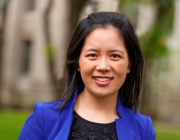
Title: Distributed Energy Management with Limited Communication
Date: Sept. 13, 2016, Tue.
Time: 2:00 PM
Venue: McDonnell Douglas Engineering Auditorium (MDEA)
ABSTRACT
A major issue in future power grids is how intelligent devices and independent producers can respectively change their power consumption/production to achieve near maximum efficiency for the power network. Limited communications between devices and producers necessitates an approach where the elements of the network can act in an autonomous manner with limited information/communications yet achieve near optimal performance. In this talk, I will present our recent work on distributed energy management with limited communication. In particular, I will show how we can extract information from physical measurements and recover information from local computation. We will also investigate the minimum amount of communication for achieving the optimal energy management and study how limited communication affects the convergence rate of the distributed algorithms. We will conclude the talk with a discussion on challenges and opportunities on distributed optimization and control for future grids.
SPEAKER'S BIOGRAPHY
Na Li is an assistant professor in Electrical Engineering and Applied Mathematics of the School of Engineering and Applied Sciences in Harvard University since 2014. She received her Bachelor degree in Mathematics in Zhejiang University in 2007 and PhD degree in Control and Dynamical systems from California Institute of Technology in 2013. She was a postdoctoral associate of the Laboratory for Information and Decision Systems at Massachusetts Institute of Technology 2013-2014. Her research lies in the design, analysis, optimization and control of distributed network systems, with particular applications to power networks. She received NSF career award (2016) and entered the Best Student Paper Award finalist in the 2011 IEEE Conference on Decision and Control.
CPCC Seminar by Prof. Farshad Lahouti
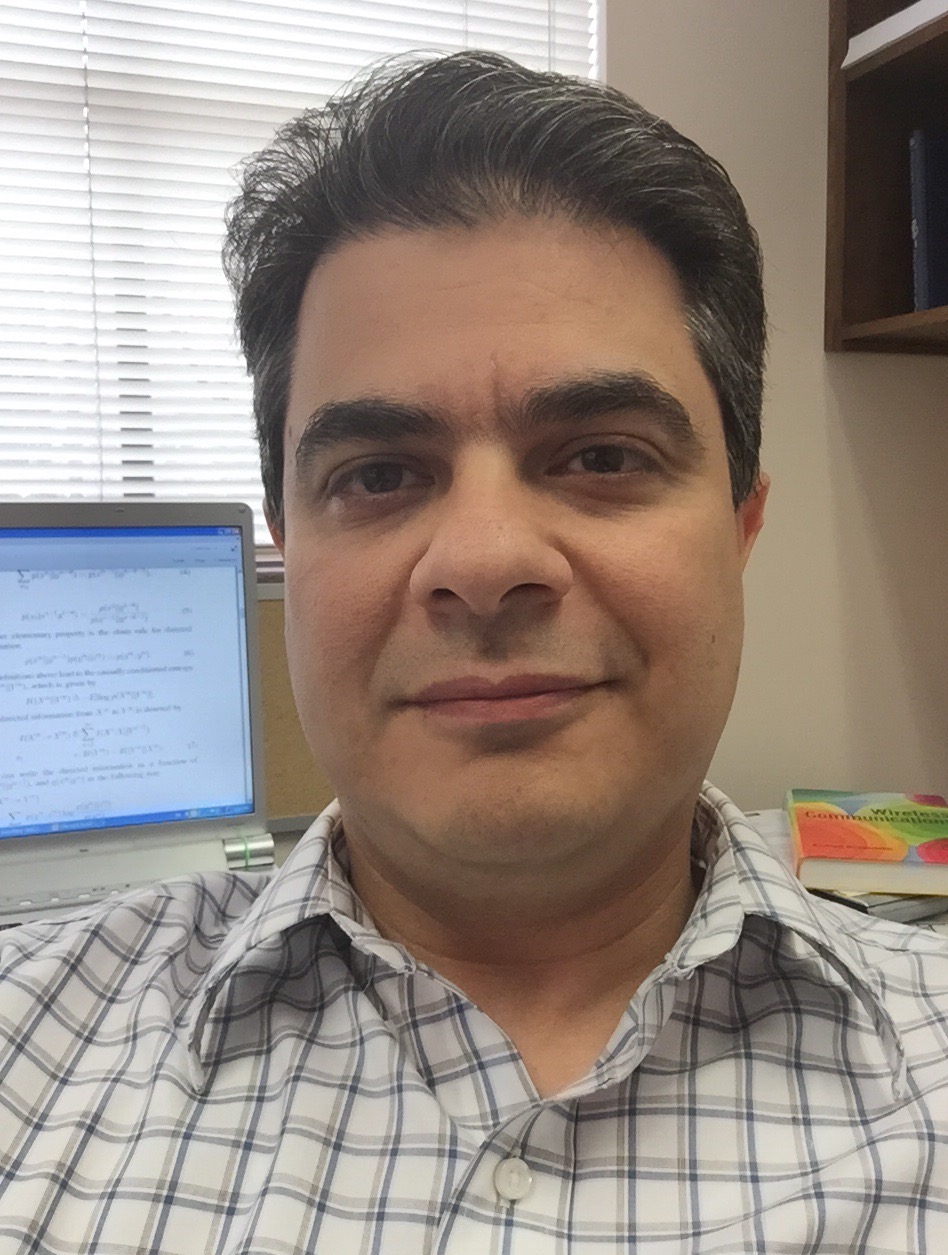
Title: Fundamental Limits of Crowdsourcing
Date: March 8, 2016, Tue.
Time: 11:00 AM
Venue: CALIT2 Room 3008
ABSTRACT
Digital crowdsourcing (CS) is a modern approach to perform certain large projects using small contributions of a large crowd. In CS, a taskmaster typically breaks down the project into small batches of tasks and assigns them to so-called workers with imperfect skill levels. The crowdsourcer then collects and analyzes the results for inference and serving the purpose of the project. In this work, the CS problem, as a human-in-the-loop computation problem, is modeled and analyzed in an information theoretic rate-distortion framework. The purpose is to seek ultimate performance bounds that one can achieve by any form of query from the crowd and any decoding (inference) algorithm with a given budget. The results also shed light on optimized strategies for the design of crowdsourcing systems. We also present and analyze a query scheme dubbed k-ary incidence coding.
SPEAKER'S BIOGRAPHY
Farshad Lahouti is currently a visiting professor of electrical engineering at the California Institute of Technology (Caltech), where he initiated the digital ventures design program. He received his B.Sc. from the University of Tehran, Iran and his Ph.D. from the University of Waterloo, Canada both in Electrical Engineering in 1997 and 2002, respectively. In 2005, he joined the faculty of the School of Electrical and Computer Engineering, University of Tehran, where he founded the Center for Wireless Multimedia Communications. He also served as the head of the Communications Engineering Department from 2008 to 2012. Dr Lahouti is the recipient of the distinguished scientist award from Iran Nation Academy of Sciences in 2014. His current research interests are coding and information theory, signal processing and communication theory with applications to wireless networks, cyber-physical systems and man-machine symbiosis, and biological and neuronal networks. Information on his recent works can be found here: http://www.its.caltech.edu/~lahouti.
What is DARPA? An insider's look
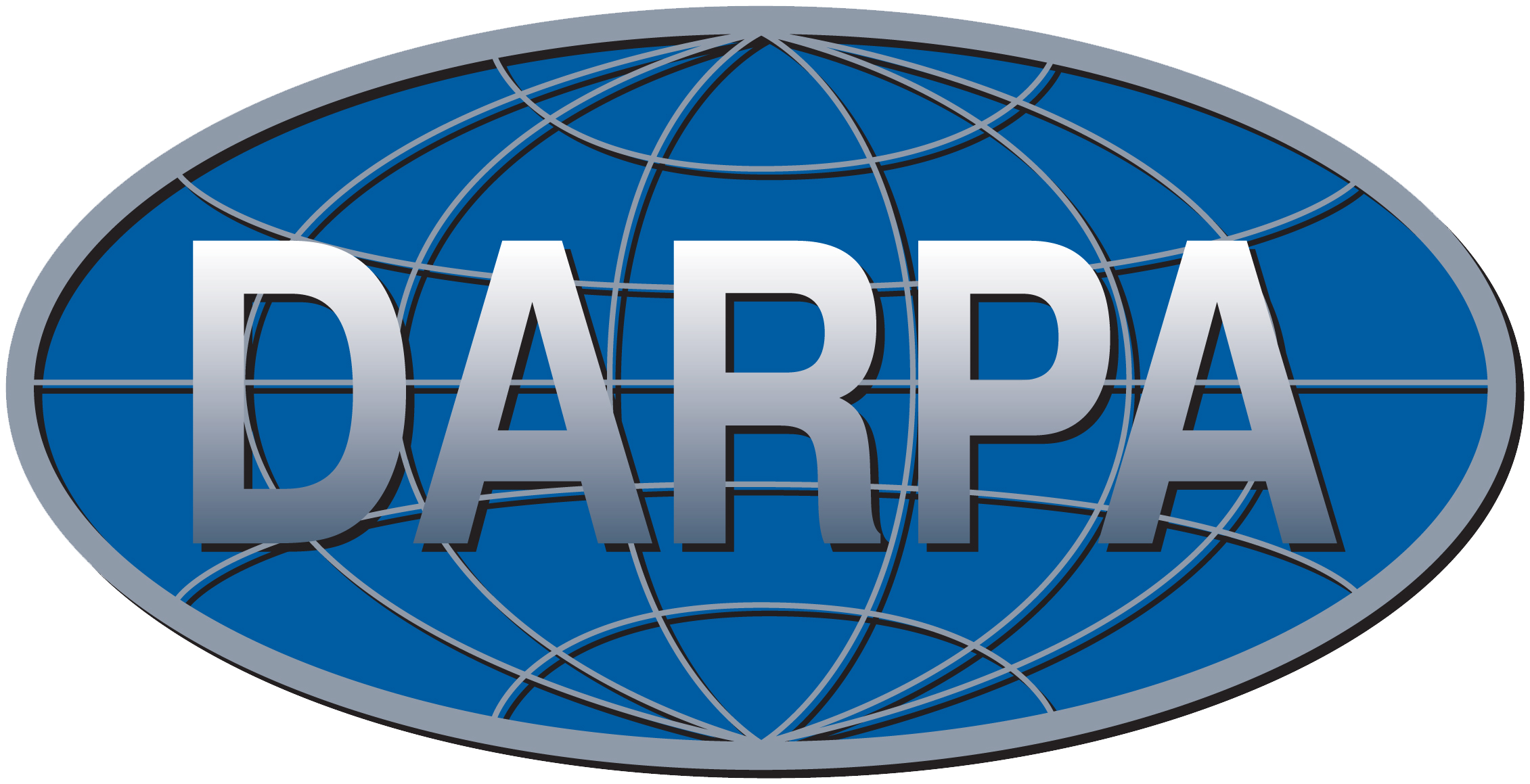
Date: February 9, 2016
Time: 09:00 AM to 10:00 AM
Venue: Calit2 Auditorium.
Learn about DARPA's research priorities, scientific offices and funding opportunities!
Meet Dr. Reza Ghanadan, Defense Advanced Research Projects Agency (DARPA) program manager with the Defense Sciences Office.
DARPA/UCI Workshop on Mobile and Intelligent Sensor Networks

Date: February 8, 2016
Time: 09:00 AM to 05:00 PM
Venue: Information and Computer Science Building, 6210 Donald Bren Hall, 6th floor.
Sensor networks are crucial for collecting data and understanding the physical world.
This workshop will explore fundamental challenges in design and deployment of heterogeneous
sensor networks that can benefit from mobility and intelligent distributed decision making.
Distributed decision making and deployment is fundamental to large heterogeneous sensor networks
as global and central algorithms are not feasible. The fundamental goals of the network deployment
are improving the capacity/throughout, connectivity, coverage, bandwidth efficiency, mobility, delay,
and security of the heterogeneous sensor networks.
The goal of the workshop is to foster discussion, discovery, and dissemination of the state-of-the-art
in this area and identifying potential next generation breakthrough technologies.
The workshop will include invited talks and solicited oral or poster presentations.
More information can be found at the following Link .
CPCC Seminar by Prof. Paul Cuff
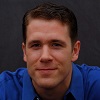
Title: A Stronger Soft-Covering Lemma that assures Semantic Security in Wiretap Channels
Date: Nov. 2, 2015, Monday
Time: 10:00 am
Venue: Harut Barsamian Colloquia (Engineering Hall 2430).
ABSTRACT
In 1975, Wyner published two very different papers that are unexpectedly connected.
One introduced the wiretap channel, showing that information-theoretic secrecy is
possible without a secret key by taking advantage of channel noise. This is the
foundation for much of physical-layer security. The other paper introduced a notion
of common information relevant to generating random variables at different terminals.
In that work he introduced a soft-covering tool for proving achievability.
Coincidently, soft covering has now become the tool of choice for proving strong secrecy
in wiretap channels, although Wyner didn't appear to make any connection between the two results.
We present a sharpening of the soft-covering tool by showing that the soft-covering phenomenon happens
with doubly-exponential certainty with respect to a randomly generated codebook.
Through the union bound, this enables security proofs in settings where many security constraints must be satisfied simultaneously.
The "type II" wiretap channel is a great example of this, where the eavesdropper can actively influence his observations.
We demonstrate the effectiveness of this tool by deriving the secrecy capacity of wiretap channels of type II with a noisy main channel---previously an open problem.
Additionally, this stronger soft covering allows information-theoretic security proofs to be easily upgraded to semantic security, which is the gold standard in cryptography.
SPEAKER'S BIOGRAPHY
Paul Cuff received the B.S. degree in electrical engineering from Brigham Young University, Provo, UT, in 2004 and the M.S. and Ph. D. degrees in electrical engineering from Stanford University in 2006 and 2009. His Ph.D. research advisor was Thomas Cover. Since 2009 he has been an Assistant Professor of Electrical Engineering at Princeton University.
Over the years Dr. Cuff has interacted with industry in both the technology and the financial sectors, spending summers at Google, Microsoft Research, and elsewhere, and giving talks at a number of hedge funds. In 2005, while in graduate school, he co-founded a tech startup called Adaptive Hearing Solutions with Bernard Widrow centered around signal processing technology. This venture began with the winning of the Stanford business plan competition.
As a graduate student, Dr. Cuff was awarded the ISIT 2008 Student Paper Award for his work titled “Communication Requirements for Generating Correlated Random Variables.” This work has led to fruitful and unexpected avenues of research in secure source coding. As faculty, he received the NSF Career Award in 2014 and the AFOSR Young Investigator Program Award in 2015.
CPCC Seminar by Prof. Saeed Mohammadi

Title: Bring the System Down – to a Chip
Date: May 28, 2015, Thu.
Time: 4:00 pm
Venue: CALIT2 Room 3008.
ABSTRACT
What if you can fit a cell phone inside a lapel pin? No batteries required!
What if you can take the temperature of mitochondria inside a live cell without interfering with
its activities? Future compact electronic systems including devices built for the internet of
everything will rely on integration of various functions with efficient and ultra low power
communication systems. The advent of highly reliable and scalable CMOS Silicon on
Insulator (SOI) technology has opened up a pathway for tight integration of various
functions on a single chip. The first part of the presentation will be devoted to RF and
microwave power amplifiers, including a 5G RF front-end implemented in a scaled CMOS
SOI technology. We will discuss how SOI technology facilitates the implementation of high
performance power amplifier modules. Next, integrated sensing platforms based on CMOS
SOI technology will be presented. Such platforms, when integrated with on-chip antenna,
amplifiers and ultra-low power interface circuits allow observing physical and biological
phenomena that have not yet been reported.
SPEAKER'S BIOGRAPHY
Saeed Mohammadi received his PhD degree from the University of Michigan in
2000. He is currently an associate professor of electrical engineering and a member of
Birck nanotechnology center at Purdue University. Professor Mohammadi and his students
are currently working on integrated system on a chip for electromechanical, biological, RF
and microwave applications.
2015 IEEE Communication Theory Workshop (CTW 2015)

Title: 2015 IEEE Communication Theory Workshop (CTW 2015)
Date: May 10-13, 2015
The 2015 IEEE Communication Theory Workshop (CTW 2015) will be held on May 10-13 at the Laguna Cliffs Marriott Resort and Spa in Dana Point, Orange County, California.
CPCC Director, Prof. Hamid Jafarkhani will be the general chair and CPCC member, Prof. Syed Jafar will be the TPC chair.
CTW has been through years a continuous success owing mostly to its highly interactive atmosphere, and top-quality technical content. As always, the workshop will be single track with technical sessions, plenary speakers, and panel discussions.
The technical sessions will consist of invited lectures given by leaders in both academia and industry. The hot-topics poster session is an open call.
CPCC Distinguished Seminar by Prof. Georgios B. Giannakis
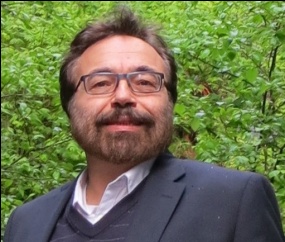
Title: Learning Tools for Big Data Analytics
Date: Feb. 26, 2015, Thu.
Time: 11:00 am
Venue: Harut Barsamian Colloquia (Engineering Hall 2430)
ABSTRACT
We live in an era of data deluge. Pervasive sensors collect massive amounts of information on every bit of our lives, churning out enormous streams of raw data in various formats. Mining information from unprecedented volumes of data promises to limit the spread of epidemics and diseases, identify trends in financial markets, learn the dynamics of emergent social-computational systems, and also protect critical infrastructure including the smart grid and the Internet’s backbone network. While Big Data can be definitely perceived as a big blessing, big challenges also arise with large-scale datasets. The sheer volume of data makes it often impossible to run analytics using a central processor and storage, and distributed processing with parallelized multi-processors is preferred while the data themselves are stored in the cloud. As many sources continuously generate data in real time, analytics must often be performed “on-the-fly” and without an opportunity to revisit past entries. Due to their disparate origins, massive datasets are noisy, incomplete, prone to outliers, and vulnerable to cyber-attacks. These effects are amplified if the acquisition and transportation cost per datum is driven to a minimum. Overall, Big Data present challenges in which resources such as time, space, and energy, are intertwined in complex ways with data resources. Given these challenges, ample signal processing opportunities arise. This seminar outlines ongoing research in novel models applicable to a wide range of Big Data analytics problems, as well as algorithms to handle the practical challenges, while revealing fundamental limits and insights on the mathematical trade-offs involved.
SPEAKER'S BIOGRAPHY
Georgios B. Giannakis (Fellow’97) received his Diploma in Electrical Engr. from the Ntl. Tech. Univ. of Athens, Greece, 1981. From 1982 to 1986 he was with the Univ. of Southern California (USC), where he received his MSc. in Electrical Engineering, 1983, MSc. in Mathematics, 1986, and Ph.D. in Electrical Engr., 1986. Since 1999 he has been a professor with the Univ. of Minnesota, where he now holds an ADC Chair in Wireless Telecommunications in the ECE Department, and serves as director of the Digital Technology Center. His general interests span the areas of communications, networking and statistical signal processing – subjects on which he has published more than 375 journal papers, 625 conference papers, 20 book chapters, two edited books and two research monographs (h-index 111). Current research focuses on big data analytics, wireless cognitive radios, network science with applications to social, brain, and power networks with renewables.. He is the (co-) inventor of 22 patents issued, and the (co-) recipient of 8 best paper awards from the IEEE Signal Processing (SP) and Communications Societies, including the G. Marconi Prize Paper Award in Wireless Communications. He also received Technical Achievement Awards from the SP Society (2000), from EURASIP (2005), a Young Faculty Teaching Award, the G. W. Taylor Award for Distinguished Research from the University of Minnesota, and the IEEE Fourier Technical Field Award (2015). He is a Fellow of EURASIP, and has served the IEEE in a number of posts, including that of a Distinguished Lecturer for the IEEE-SP Society.
CPCC Seminar by Prof. Dongning Guo
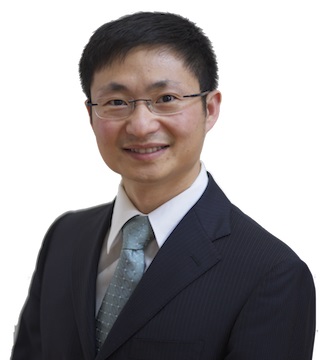
Title: Toward a Many-User Information Theory
Date: Jan. 29, 2015, Thu.
Time: 3:00 pm
Venue: Harut Barsamian Colloquia (Engineering Hall 2430)
ABSTRACT
Classical multiuser information theory studies the fundamental limits of models with a fixed (often small) number of users as the coding blocklength goes to infinity.
In this talk, I introduce a new regime, where the number of users and the blocklength tend to infinity simultaneously.
This paradigm is motivated by systems in which the number of devices is comparable or far exceeds the blocklength, such as in large machine-to-machine communication
systems and sensor networks.
The focus is on the Gaussian many-access channel, which consists of a single receiver and a massive number of transmitters, where a subset of users transmit in a given block and need to be identified.
Since the conventional notion of capacity in bits per channel use is ill-suited for the task, a new notion of capacity is introduced and characterized.
Also discussed are many-broadcast channels, lossless many-source coding, and an outlook on a general many-user information theory. Parts of the work were done in collaboration with Xu Chen and Tsung-Yi
Chen at Northwestern University, and with Gregory W. Wornell at MIT.
SPEAKER'S BIOGRAPHY
Dongning Guo joined the faculty of Northwestern University, Evanston, IL, in 2004, where he is currently an Associate Professor in the Department of Electrical Engineering and Computer Science. He received the B.Eng. degree from the University of Science & Technology of China, the M.Eng. degree from the National University of Singapore, and the M.A. and Ph.D. degrees from Princeton University, Princeton, NJ. He was a R&D Engineer in the Center for Wireless Communications, Singapore, from 1998 to 1999. He has been an Associate Editor of IEEE Transactions on Information Theory, an Editor of Foundations and Trends in Communications and Information Theory, and a Guest Editor for the IEEE Journal on Selected Areas in Communications. He received the Huber and Suhner Best Student Paper Award in the International Zurich Seminar on Broadband Communications in 2000 and is a co-recipient of the IEEE Marconi Prize Paper Award in Wireless Communications in 2010. He is also a recipient of the NSF CAREER Award in 2007. He is currently on sabbatical leave visiting Massachusetts Institute of Technology. His research interests are in information theory, communications, networking, and signal processing.
CPCC Seminar by Prof. Mohamed-Slim Alouini
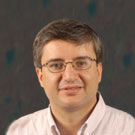
Title: Spectrum Scarcity and Optical Wireless Communications
Date: Jan. 27, 2015, Tue.
Time: 11:00 AM
Venue: Calit2 3008
ABSTRACT
Rapid increase in the use of wireless services over the last two decades has lead the problem of the radio-frequency (RF) spectrum exhaustion. More specifically, due to this RF spectrum scarcity, additional RF bandwidth allocation, as utilized in the recent past, is not anymore a viable solution to fulfill the demand for more wireless applications and higher data rates. Among the many proposed solutions, optical wireless communication or free-space optical (FSO) systems have gained an increasing interest due to their advantages including higher bandwidth and higher capacity compared to the traditional RF communication systems. This promising technology offers full-duplex Gigabit throughput in certain applications and environment while benefiting from a huge license-free spectrum, immunity to interference, and high security. These features of FSO communication systems potentially enable solving the issues that the RF communication systems face due to the expensive and scarce RF spectrum. The first part of the talk will give an overview of FSO communication systems by offering examples of advantages and application areas of this emerging technology. In the second part of talk, we will focus on some recent results and on-going research directions in the accurate characterization of the performance of FSO systems in the presence of inevitable impairments due to atmospheric turbulence and misalignment between transmitter and receiver.
SPEAKER'S BIOGRAPHY
Mohamed-Slim Alouini was born in Tunis, Tunisia. He received the Ph.D. degree in Electrical Engineering from the California Institute of Technology (Caltech), Pasadena, CA, USA, in 1998. He served as a faculty member in the University of Minnesota, Minneapolis, MN, USA, then in the Texas A&M University at Qatar, Education City, Doha, Qatar before joining King Abdullah University of Science and Technology (KAUST), Thuwal, Makkah Province, Saudi Arabia as a Professor of Electrical Engineering in 2009. His current research interests include the modeling, design, and performance analysis of wireless communication systems.
CPCC Seminar by Prof. Daniel W. Bliss
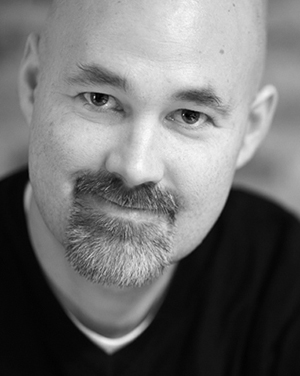
Title: Joint Radar-Communications Performance Bounds: Data versus Estimation Information Rates
Date: Aug. 13, 2014, Wed.
Time: 2:00 pm
Venue: Harut Barsamian Colloquia (Engineering Hall 2430)
ABSTRACT
We investigate cooperative radar and communications
signaling. While each system typically considers the
other system a source of interference, by considering the
radar and communications operations to be a single joint
system, the performance of both systems can, under certain
conditions, be improved by the existence of the other. As an
initial demonstration, we focus on the radar as relay scenario
and present an approach denoted multiuser detection radar
(MUDR). We present a novel joint estimation and information
theoretic bound formulation that is constructed for a receiver
that observes communications and radar return in the same
frequency allocation. The joint performance bound is presented
in terms of the communication rate and the estimation rate of
the system.
SPEAKER'S BIOGRAPHY
Daniel W. Bliss is an Associate Professor in
the School of Electrical, Computer and Energy Engineering at
Arizona State University. Dan received his Ph.D. and M.S.
in Physics from the University of California at San Diego
(1997 and 1995), and his BSEE in Electrical Engineering from
Arizona State University (1989). His current research
topics include multiple-input multiple-output (MIMO)
wireless communications, MIMO radar, cognitive radios, radio
network performance, geolocation, and statistical signal
processing for anticipatory physiological analytics. Before
moving to ASU Dan was a senior member of the technical staff
at MIT Lincoln Laboratory (1997-2012). Employed by General
Dynamics (1989-1993), he designed rocket avionics and
performed magnetic field calculations and optimization for
high-energy particle-accelerator superconducting magnets.
His doctoral work (1993-1997) was in the area of
high-energy particle physics.
CPCC Distinguished Seminar by Prof. Michael W. Marcellin
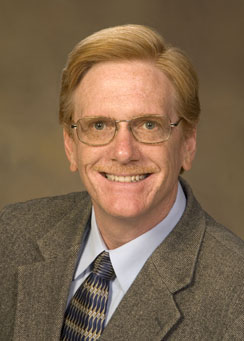
Title: Visually-Lossless JPEG2000 for Interactive Multi-Resolution Delivery of Imagery
Date: May 19, 2014, Mon.
Time: 11:00 AM
Venue: EH 2430
ABSTRACT
Visibility thresholds play an important role in finding appropriate
quantization step sizes in image and video compression systems.
After a brief tutorial on the JPEG2000 standard, we present a method
of measuring visibility thresholds for quantization distortion in JPEG2000.
A quantization distortion model for each subband is developed based on the
statistical characteristics of wavelet coefficients and the dead-zone
quantizer of JPEG2000. This is in contrast to previous studies which have
assumed uniform quantization distortion. The resulting visibility thresholds
are further adjusted for locally changing backgrounds through a visual masking model,
and then used to determine the minimum number of coding passes to be included in
a JPEG2000 codestream for visually lossless quality. In our experiments, the proposed
coding scheme achieves visually lossless coding for 24-bit color images at approximately
20% of the bitrate required for numerically lossless coding.
JPEG2000 inherently supports the display of imagery at various resolutions.
When an image is displayed at dif¬ferent resolutions, the spatial frequencies of
subbands are changed. Previous JPEG2000 visually lossless algo¬rithms have employed
a single set of visibility thresholds optimized for full resolution. This generally
results in visually lossless quality at all resolutions, but with significant
inefficiencies at less than full resolution. In this talk we discuss a method to
minimize the amount of data needed for display at lower resolutions.
Specifically, we present a layering strategy which effectively incorporates
a different set of visibility thresholds for each resolution. This allows
for visually lossless decoding at a variety of resolutions, using only a
fraction of the full resolution codestream.
All codestreams produced using the methods described in this talk are fully JPEG2000 Part-I compliant.
Joint work with Han Oh and Ali Bilgin
SPEAKER'S BIOGRAPHY
Michael W. Marcellin was born in Bishop, California, on July 1, 1959. He graduated summa cum laude with the B.S. degree in Electrical Engineering from San Diego State University in 1983, where he was named the most outstanding student in the College of Engineering. He received the M.S. and Ph.D. degrees in Electrical Engineering from Texas A&M University in 1985 and 1987, respectively.
Since 1988, Dr. Marcellin has been with the University of Arizona, where he holds the title of Regents' Professor of Electrical and Computer Engineering, and of Optical Sciences. His research interests include digital communication and data storage systems, data compression, and signal processing. He has authored or coauthored more than two hundred publications in these areas.
Dr. Marcellin is a major contributor to JPEG2000, the emerging second-generation standard for image compression. Throughout the standardization process, he chaired the JPEG2000 Verification Model Ad Hoc Group, which was responsible for the software implementation and documentation of the JPEG2000 algorithm. He is coauthor of the book, JPEG2000: Image compression fundamentals, standards and practice, Kluwer Academic Publishers, 2002. This book serves as a graduate level textbook on image compression fundamentals, as well as the definitive reference on JPEG2000. Dr. Marcellin served as a consultant to Digital Cinema Initiatives (DCI), a consortium of Hollywood studios, on the development of the JPEG2000 profiles for digital cinema.
Professor Marcellin is a Fellow of the IEEE, and is a member of Tau Beta Pi, Eta Kappa Nu, and Phi Kappa Phi. He is a 1992 recipient of the National Science Foundation Young Investigator Award, and a corecipient of the 1993 IEEE Signal Processing Society Senior (Best Paper) Award. He has received teaching awards from NTU (1990, 2001), IEEE/Eta Kappa Nu student sections (1997), and the University of Arizona College of Engineering (2000, 2010). In 2003, he was named the San Diego State University Distinguished Engineering Alumnus. Professor Marcellin is the recipient of the 2006 University of Arizona Technology Innovation Award. He was finalist for the 2012 Arizona Governor's Innovation Awards. From 2001 to 2006, Dr. Marcellin was the Litton Industries John M. Leonis Distinguished Professor of Engineering. He is currently the International Foundation for Telemetering Chaired Professor of Electrical and Computer Engineering at the University of Arizona.
CPCC Seminar by Prof. Urbashi Mitra
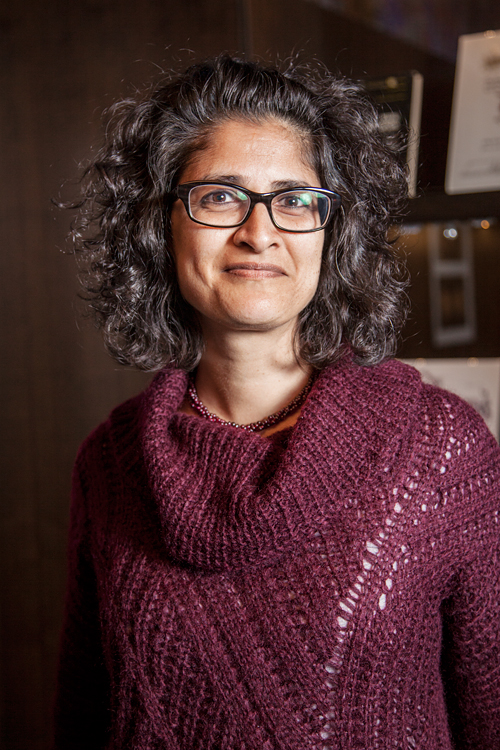
Title: The confluence of communication, sensing and control in large scale wireless networks
Date: Nov. 8, 2013, Fri.
Time: 11:00 - 12:00 am
Venue: DBH 6011
ABSTRACT
Modern wireless technology enables the vision of future large scale
systems such as the SmartGrid, a network of ubiquitous and heterogeneous
devices wirelessly connected to the Internet, and wireless health
monitoring and health modifying sensor networks over communities and not
just individuals. All of these applications necessitate methods that
simultaneously consider scale, communication, sensing and control. In
this talk, key elements of realizing this vision are examined. We shall
focus on novel active control methods for networks described
by partially observable Markov decision processes. Such models are very
general and can encompass sensing networks, as well as communication
networks. Following an innovations approach, a Kalman-like filter is
derived to estimate the underlying system state. As a case-study,
numerical results are provided for physical activity detection in a
heterogeneous wireless body area network. We further examine
distributed estimation in large scale networks with time-correlated
behavior and explore how modern statistical methods such as
compressed sensing can be applied to both the distributed estimation
problem as well as the network control problem.
SPEAKER'S BIOGRAPHY
Urbashi Mitra received the B.S. and the M.S. degrees from the University
of California at Berkeley and her Ph.D. from Princeton University. She
is currently a Professor in the Ming Hsieh Department of Electrical
Engineering at the University of Southern California. She is a member
of the IEEE Information Theory Society's Board of Governors (2002-2007,
2012-2014) and the IEEE Signal Processing Society's Technical
Committee on Signal Processing for Communications and Networks
(2012-2014). She is the recipient of: 2012 Globecom Signal Processing
for Communications Symposium Best Paper Award, 2012 NAE Lillian Gilbreth
Lectureship, USC Center for Excellence in Research
Fellowship (2010-2013), the 2009 DCOSS Applications & Systems Best Paper
Award, IEEE Fellow (2007), Texas Instruments Visiting Professor (Fall
2002, Rice University), 2001 Okawa Foundation Award, 2000 OSU College of
Engineering Lumley Award for Research, and a 1996 NSF CAREER Award. Dr.
Mitra has been/is an Associate Editor for the following IEEE
publications: Transactions on Signal Processing (2012--), Transactions
on Information Theory (2007-2011), Journal of Oceanic
Engineering (2006-2011), and Transactions on Communications
(1996-2001). Dr. Mitra has held visiting appointments at: the Delft
University of Technology, Stanford University, Rice University, and the
Eurecom Institute. She served as co-Director of the
Communication Sciences Institute at the University of Southern
California from 2004-2007. Her research interests are in:
wireless communications, communication and sensor networks, detection
and estimation and the interface of communication, sensing and control.
CPCC Seminar by Prof. Zhi (Gerry) Tian
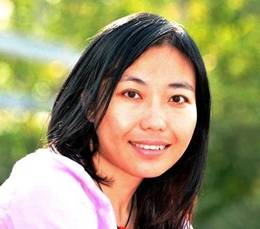
Title: Enhancing Access to the Radio Spectrum - Compressive Spectrum Sensing
Date: Feb. 13, 2013, Wed.
Time: 1:00 - 2:00 pm
Venue: EH 2430
ABSTRACT
This talk has two parts. In the first part, I will briefly discuss several NSF programs
related to Communications, Sensing and Cyber-Physical Systems. In particular,
I will give an introduction on NSF's initiative on enhancing access to the radio spectrum (EARS).
In the second part, I will present a technical discussion on compressed sensing in statistical signal
processing, where compressive sampling of random processes is of interest. Our new framework allows
for accurate estimation of useful statistics from compressive measurements using simple least-squares
solutions, even when the random signal of interest is non-sparse. As an example, I will present
a cyclic feature based compressive spectrum sensing approach for wideband cognitive radios.
Wideband communication signals possess unique two-dimensional sparsity structures in both
the frequency domain and the modulation-dependent cyclic frequency domain. Exploitation of
these sparsity elements not only reveals important features
of the modulated signals for detection and classification purposes,
but also results in fast reconstruction of the cyclic statistics and hence reduced sensing time.
Using the new framework of compressed sensing for random processes, compressive spectrum
sensing becomes feasible even for (non-sparse) crowded spectrum.
SPEAKER'S BIOGRAPHY
Dr. Zhi (Gerry) Tian is a Professor in the Department of Electrical and Computer Engineering
of Michigan Technological University. She is currently on leave to serve as a Program
Director in the Division of Electrical, Communications and Cyber Systems (ECCS)
of the Engineering Directorate at the National Science Foundation.
Her research interests lie in digital and wireless communications,
wireless sensor networks, and signal processing. She has served
as Associate Editor for IEEE Transactions on Wireless Communications
and IEEE Transactions on Signal Processing. She is an IEEE Fellow.
CPCC Seminar by Prof. Walid Saad (Univ. of Miami) and Prof. Zhu Han (Univ. of Houston)
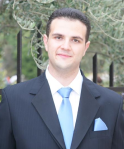
Title: Toward Self-Organizing Wireless Small Cell Networks (by Prof. Saad)
Date: Dec. 7, 2012, Fri.
Time: 2:00 - 2:30 PM
Venue: EH 2430
ABSTRACT
The deployment of small cells serviced by low-cost, low-power stations
(e.g., femtocells, picocells, microcells, etc.) is envisioned to
significantly improve the performance of next-generation wireless
networks. Maintaining and managing the heterogeneous and dense network
architecture resulting from small cell deployments mandates a paradigm
shift from centralized optimization toward self-optimizing,
self-organizing, and self-configuring networks. In this talk, we study the
potential of developing self-organizing algorithms, based on notions from
game theory and learning, for addressing various challenges in small cell
networks. In particular, we focus on two key problems: (i)-
Noncooperative and matching games for strategic access policies and
user-to-access point association, and (ii)- Cooperative games for spectrum
leasing and interference management. For each problem, we present the key
concepts, discuss the proposed solutions, and shed a light on future!
opportunities. Finally, we conclude with an overview on future research
directions and challenges in the area of small cell networks and adjunct
fields.
Prof. Saad'S BIOGRAPHY
Walid Saad received his B.E. degree in Computer and Communications
Engineering from the Lebanese University, Faculty of Engineering, in 2004,
his M.E. in Computer and Communications Engineering from the American
University of Beirut (AUB) in 2007, and his Ph.D degree from the
University of Oslo in 2010. Currently, he is an Assistant Professor at
the Electrical and Computer Engineering Department at the University of
Miami. Prior to joining UM, he has held several research positions at
institutions such as Princeton University and the University of Illinois
at Urbana-Champaign.
His research interests include wireless and small cell networks, game
theory, cognitive radio, wireless security, and smart grids. He has over
60 international conference and journal publications in these areas. He
was the author/co-author of the papers that received the Best Paper Award
at the 7th International Symposium on Modeling and Optimization in Mobile,
Ad Hoc and Wireless Networks (WiOpt), in June 2009, at the 5th
International Conference on Internet Monitoring and Protection (ICIMP) in
May 2010, and at IEEE WCNC in 2012.
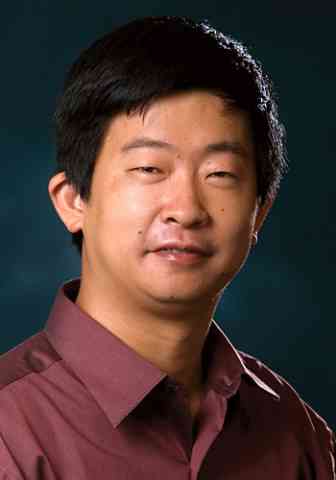
Title: Compressive Collaborative Spectrum Sensing for Cognitive Radio (by Prof. Han)
Date: Dec. 7, 2012, Fri.
Time: 2:30 - 3:00 PM
Venue: EH 2430
ABSTRACT
To increase spectrum utilization, cognitive radios can detect and share
the unused spectrum. However, each cognitive radio can only scan a
narrow band of spectrum, and the scan is time consuming. This bottleneck
limits spectrum sensing in terms of bandwidth, speed, and accuracy.
Aiming at breaking this bottleneck, we propose compressive collaborative
spectrum sensing based on the recent technique of compressive sensing,
which senses less and computes more. It lets a sensor acquire a signal,
not by taking many samples, but rather by measuring a few incoherent
linear projections. The sensor transmits the linear projections to a
receiver, where the signal is reconstructed by an algorithm. For many
applications, such a shift of resource demands from pre-transmission to
post-transmission can be of great benefit. This is true for spectrum
sensing, where the benefit is less and faster sensing at the cognitive
radio nodes, as well as reduced transmission from these nodes to the
fusion center.
Prof. Han'S BIOGRAPHY
Zhu Han received the B.S. degree in electronic engineering from
Tsinghua University, in 1997, and the M.S. and Ph.D. degrees in
electrical engineering from the University of Maryland, College Park, in
1999 and 2003, respectively.From 2000 to 2002, he was an R&D Engineer of
JDSU, Germantown, Maryland. From 2003 to 2006, he was a Research
Associate at the University of Maryland. From 2006 to 2008, he was an
assistant professor in Boise State University, Idaho. Currently, he is
an Associate Professor in Electrical and Computer Engineering Department
at University of Houston, Texas. His research interests include wireless
resource allocation and management, wireless communications and
networking, game theory, wireless multimedia, security, and smart grid.
Dr. Han is an NSF CAREER award recipient 2010. Dr. Han has 6 best paper
awards in IEEE conferences, and winner of Fred W. Ellersick Prize 2011.
CPCC Seminar by Prof. Michele Zorzi
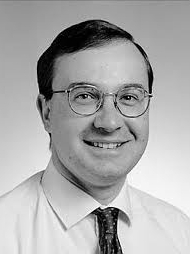
Title: Optimal Transmission Policies for Energy Harvesting Communication Devices
Date: Dec. 4, 2012, Tues.
Time: 11:00 - 12:00
Venue: EH 2430
ABSTRACT
Energy Harvesting (EH) is a new paradigm in Wireless Sensor Networks
(WSNs): sensor nodes are powered by energy harvested from the ambient,
rather than by non-rechargeable batteries, thus enabling a potentially
perpetual operation of the WSN. However, Energy Harvesting poses new
challenges in the design of WSNs, in that energy availability is
random and fluctuates over time, thus calling for radically different
energy management solutions. In this talk we investigate the following
fundamental question: how should the harvested energy be managed to
ensure optimal performance? First, we consider a sensor powered by EH
which senses data of varying importance and reports them judiciously
to a Fusion Center. Assuming that data transmission incurs an energy
cost, our objective is to identify low-complexity policies that
achieve close-to-optimal performance, in terms of maximizing the
average long-term importance of the reported data. We first consider
schemes that rely on the assumption of perfect knowledge of the amount
of energy available in the battery. Subsequently, we investigate the
design of operation policies that maximize the long-term reward under
imperfect knowledge of the State-Of-Charge (SOC). Moreover, for both
scenarios, we explore the impact of time-correlation in the EH
process, showing that simple adaptation to the state of the EH process
yields close-to-optimal performance, without requiring full knowledge
of the SOC of the battery.
SPEAKER'S BIOGRAPHY
Michele Zorzi is a Professor at the Department of Information
Engineering of the University of Padova. Prior to his current
appointment, he was employed at the Politecnico di Milano, the
University of Ferrara and the University of California at San Diego,
with which he still has an active collaboration. He received a PhD in
Electrical Engineering from the University of Padova in 1994.
Prof. Zorzi was the EiC of the IEEE Wireless Communications magazine
in 2003-2005, and the EiC of the IEEE Transactions on Communications
in 2008-2011, and has served on the Editorial Boards of the top
journals in his area of research and on the Organizing and Technical
Program Committee for many international conferences. He is an IEEE
Fellow. His main research interests are in the area of wireless
communications and networking, sensor networks and IoT, underwater
communications and networks, and energy-efficient protocol design.
CPCC Seminar by Prof. Chengshan Xiao
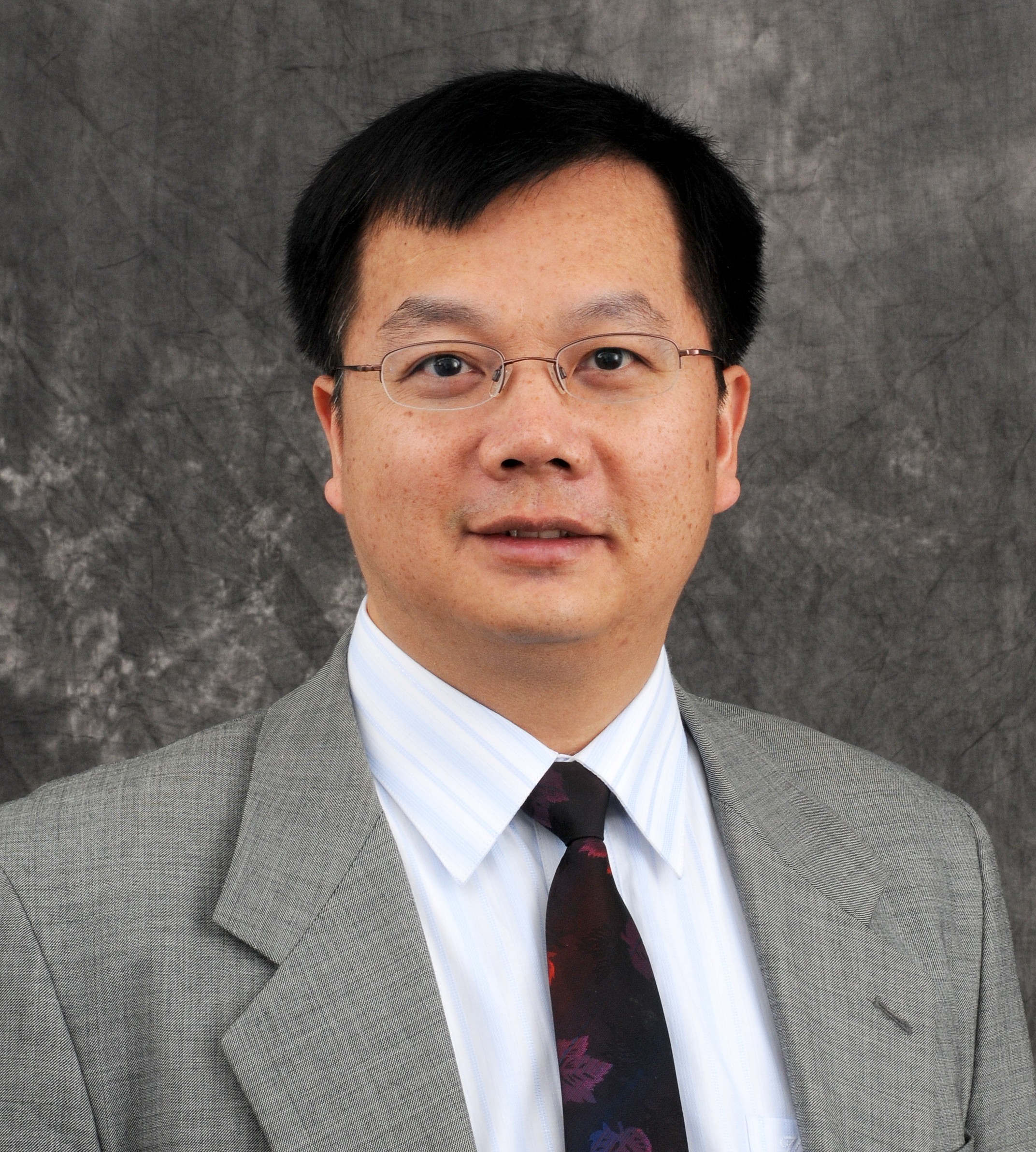
Title: Optimal Linear Precoding for Finite Alphabet Signaling in Wireless Systems and Networks
Date: Nov. 29, 2012, Thu.
Time: 11:00 - 12:00
Venue: EH 2430
ABSTRACT
Finite alphabet signaling refers to commonly used discrete-constellation modulations in practical communication systems, such as PAM,
PSK or QAM. In this talk, we will target at how to increase data rate or throughput via linear precoding in wireless systems and
networks such as multiple-input multiple-output (MIMO) systems, multiple access channels, broadcast channels, wiretap channels, and
cognitive radio networks. We will present backgrounds, theoretical results, hardware implementation, and experimental results for
maximizing the mutual information-based achievable data rate or throughput. Our results demonstrate that precoding for finite alphabet
signaling can be radically different from the precoding (or power allocation) for Gaussian signaling. Our examples show that the
finite-alphabet signaling-based approach provides not only higher achievable data rate but also lower coded bit error rate than the
approaches that design the precoder with Gaussian input assumption. Further research topics will be discussed in this talk as well.
SPEAKER'S BIOGRAPHY
Chengshan Xiao is a Professor of Electrical and Computer Engineering at Missouri
University of Science and Technology, Rolla, Missouri.
His research interests include wireless communications, signal processing, and
underwater acoustic communications. He is the holder of
three U.S. patents. His algorithms were implemented in Nortel's base station
radios after successful field trials and network
integration. Prof. Xiao is an IEEE Fellow and the Editor-in-Chief of IEEE Transactions
on Wireless Communications. He is also a Member of the
Fellow Evaluation Committee, a Member of the Board of Governors, and
a Distinguished Lecturer of the IEEE Communications Society.
Previously, he served as the founding Chair of the IEEE Technical Committee on
Wireless Communications and the Technical Program
Chair of the 2010 IEEE International Conference on Communications, Cape Town, South Africa.
CPCC Seminar by Prof. Michael Langberg
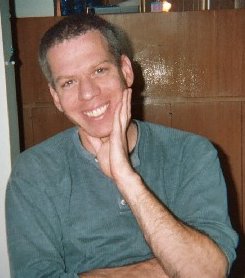
Title: Three Open Problems in Network Communication
Date: Nov. 27, 2012, Tue.
Time: 11:00 - 12:00
Venue: EH 2430
ABSTRACT
In this talk I will discuss three natural open questions in the context of
multi-source/ multi-terminal network communication via network coding.
(a) What is the maximum loss in communication rate experienced from
removing a single unit capacity edge from a given network? (b) What is
the maximum loss in rate when insisting on zero error communication as
opposed to vanishing decoding error? (c) What is the maximum loss in
rate when comparing the communication of source information that is
``almost'' independent to that of independent source information?
Recent results including intriguing connections between the three
questions will be presented.
Based on joint work with Michelle Effros.
SPEAKER'S BIOGRAPHY
Michael Langberg is an Associate Professor in the Mathematics and
Computer Science department at the Open University of Israel.
Previously, between 2003 and 2006, he was a postdoctoral scholar in
the Computer Science and Electrical Engineering departments at the
California Institute of Technology. He received his B.Sc. in
mathematics and computer science from Tel-Aviv University in 1996, and
his M.Sc. and Ph.D. in computer science from the Weizmann Institute of
Science in 1998 and 2003 respectively.
Prof. Langberg's research is in the fields of Information Theory and
Theoretical Computer Science. His work focuses on the design and
analysis of algorithms for combinatorial problems; emphasizing on
algorithmic and combinatorial aspects of Information Theory, and on
probabilistic methods in combinatorics.
CPCC Seminar by Prof. Wing-Kin (Ken) Ma
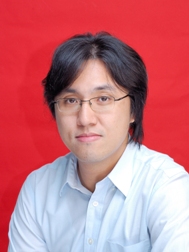
Title: Semidefinite Relaxation and Its Applications in Signal Processing and Communications
Date: Nov. 9, 2012, Fri.
Time: 2:00-3:00 PM
Venue: EH 2430
ABSTRACT
Semidefinite relaxation (SDR) has recently been recognized as a very
useful and handy tool in signal processing and communications. It is
a powerful approximation technique for a host of difficult optimization
problems, generally taking the form of nonconvex quadratically
constrained quadratic programs. SDR has found numerous applications;
among them particularly important applications are MIMO detection
(which covers multi-user, multi-antenna, space-time,...), transmit
beamforming (which covers classical single-cell multiuser downlinks,
multicell coordinated multiuser downlinks, unicasting and multicasting,
cognitive radio, physical layer security, one-way and two-way relays...),
and sensor network localization. And the application scope is still
expanding. This talk aims at giving an overview of SDR. I will describe
essential ideas and practical deployment aspects of SDR, and summarize
some of the key theoretical results offered by optimization researchers,
which will be presented from a non-expert viewpoint. And certainly, the
talk will cover the important SDR applications, and some very forefront
advances in those applications.
SPEAKER'S BIOGRAPHY
Wing-Kin Ma received the B.Eng. degree in electrical and electronic
engineering from the University of Portsmouth, Portsmouth, U.K., in
1995 and the M.Phil. and Ph.D. degrees, both in electronic engineering,
from the Chinese University of Hong Kong (CUHK), Hong Kong, in 1997 and
2001, respectively. He is currently an Assistant Professor with the
Department of Electronic Engineering, CUHK. From 2005 to 2007, he was
also an Assistant Professor with the Institute of Communications
Engineering, National Tsing Hua University, Taiwan, R.O.C. Prior to that,
he held various research positions with McMaster University, Canada;
CUHK; and the University of Melbourne, Australia. His research interests
are in signal processing and communications, with a recent emphasis on
MIMO communication, convex optimization, blind source separation, and
signal processing for hyperspectral remote sensing. Dr. Ma is currently
Associate Editor of IEEE Signal Processing Letters. He is also Guest
Editor of IEEE Journal of Selected Areas in Communications on the special
issue "Signal Processing Techniques for Wireless Physical Layer Security,"
and IEEE Signal Processing Magazine on the special issue "Signal and Image
Processing in Hyperspectral Remote Sensing." He previously served as
Associate Editor of IEEE Transactions on Signal Processing, and Guest
Editor of IEEE Signal Processing Magazine. He was a Speaker of a Tutorial
in EUSIPCO 2011. He is a recipient of the 2009 Exemplary Teaching Award
given by the Faculty of Engineering, CUHK, and co-recipient of an ICASSP
2011 Best Student Paper Award and a WHISPERS 2011 Best Paper Award.
CPCC Distinguished Seminar by Prof. P. R. Kumar
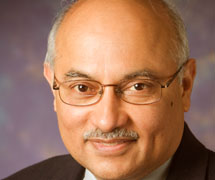
Title: The Challenge of Cyber-Physical Systems
Date: Oct. 22, 2012, Mon.
Time: 3:00 PM
Venue: EH 2430
ABSTRACT
Cyber-physical systems (CPSs) are the next
generation of engineered systems in which computing, communication,
and control technologies are tightly integrated.
We present a historical account of paths leading to the
present interest in CPSs.
Research on CPSs is fundamentally important
in many important application domains such as
transportation, energy, and medical systems. We overview
CPS research from both a historical point of view in terms of
technologies developed for early generations of control
systems, as well as
several foundational research topics that underlie
this area. These include issues in data fusion,
real-time communication, security,
middleware, hybrid systems and proofs of correctness.
SPEAKER'S BIOGRAPHY
P. R. Kumar obtained his B. Tech. degree in Electrical Engineering
(Electronics) from I.I.T. Madras in 1973, and the M.S. and D.Sc. degrees in
Systems Science and Mathematics from Washington University, St. Louis, in 1975 and 1977,
respectively. From 1977-84 he was a faculty member in the Department of Mathematics
at the University of Maryland Baltimore County. From 1985-2011 he was a faculty member
in the Department of Electrical and Computer Engineering and the Coordinated Science
Laboratory at the University of Illinois. Currently he is at Texas A&M University,
where he holds the College of Engineering Chair in Computer Engineering.
Kumar has worked on problems in game theory, adaptive control, stochastic systems,
simulated annealing, neural networks, machine learning, queueing networks,
manufacturing systems, scheduling, wafer fabrication plants and information theory.
His current research interests are in wireless networks, sensor networks, and
networked embedded control systems. His research is currently focused on wireless
networks, sensor networks, cyberphysical systems, and the convergence of control,
communication and computation.
Kumar is a member of the National Academy of Engineering of the USA, and the Academy
of Sciences of the Developing World. He was awarded an honorary doctorate by the
Swiss Federal Institute of Technology (Eidgenossische Technische Hochschule) in
Zurich. He received the IEEE Field Award for Control Systems, the Donald P. Eckman
Award of the American Automatic Control Council, the Fred W. Ellersick Prize of
the IEEE Communications Society, and the Outstanding Contribution Award of ACM
SIGMOBILE. He is a Fellow of IEEE. He was a Guest Chair Professor and Leader of
the Guest Chair Professor Group on Wireless Communication and Networking at
Tsinghua University, Beijing, China. He is an Honorary Professor at IIT Hyderabad.
He was awarded the Distinguished Alumnus Award from IIT Madras, the Alumni
Achievement Award from Washington University in St. Louis, and the Daniel C.
Drucker Eminent Faculty Award from the College of Engineering at the University of
Illinois.
CPCC Distinguished Seminar by John G. Proakis
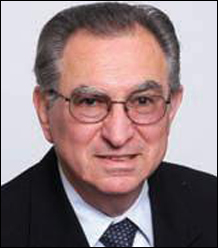
Title: Digital Communication Techniques for Underwater Acoustic Channels
Date: Oct. 1, 2012, Mon.
Time: 11:00 AM
Venue: EH 2430
ABSTRACT
Underwater acoustic channels are generally characterized as randomly time-varying multipath channels. In this presentation, the characteristics of these channels are described in terms of their time-varying impulse response, time dispersion, frequency dispersion, path loss and additive noise. Then, the design of modulation/demodulation and coding/decoding techniques are considered, including single carrier and multicarrier transmission, turbo coding/decoding, and equalization for intersymbol interference. The performance of these techniques are assessed from the viewpoint of bandwidth efficiency and signal processing requirements.
SPEAKER'S BIOGRAPHY
John G. Proakis (S'58-M'62-F'84-LF'99) received the BSEE from the University of Cincinnati in 1959, the MSEE from MIT in 1961 and the Ph.D. from Harvard University in 1967. He is an Adjunct Professor at the University of California at San Diego and a Professor Emeritus at Northeastern University. He was a faculty member at Northeastern University from 1969 through 1998 and held the following academic positions: Associate Professor of Electrical Engineering, 1969-1976; Professor of Electrical Engineering, 1976-1998; Associate Dean of the College of Engineering and Director of the Graduate School of Engineering, 1982-1984; Interim Dean of the College of Engineering, 1992-1993; Chairman of the Department of Electrical and Computer Engineering, 1984-1997. Prior to joining Northeastern University, he worked at GTE Laboratories and the MIT Lincoln Laboratory.
His professional experience and interests are in the general areas of digital communications and digital signal processing. He is the co-author of the following books: Digital Communications (New York: McGraw-Hill, 2008, fifth edition), Introduction to Digital Signal Processing (Upper Saddle River: Prentice Hall, 2007, fourth edition); Digital Signal Processing Laboratory (Englewood Cliffs: Prentice Hall, 1991); Advanced Digital Signal Processing (New York: Macmillan, 1992); Algorithms for Statistical Signal Processing(Upper Saddle River: Prentice Hall, 2002);Discrete-Time Processing of Speech Signals (New York: Macmillan, 1992, IEEE Press, 2000); Communication Systems Engineering, (Upper Saddle River: Prentice Hall, 2002, second edition); Digital Signal Processing Using MATLAB V.4 (Boston: Brooks/Cole-Thomson Learning, 2007, second edition); Contemporary Communication Systems Using MATLAB (Boston: Brooks/Cole-Thomson Learning, 2004, second edition); Fundamentals of Communication Systems (Upper Saddle River: Prentice Hall , 2005)
CPCC Distinguished Seminar by Vahid Tarokh
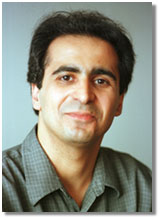
Title: Fundamentals, Regulatory Issues, and the Future of Cognitive Radio Networks
Date: Feb. 24, 2012, Fri.
Time: 11:00 AM
Venue: Donald Bren Hall (DBH 6011)
ABSTRACT
I will discuss the current regulatory issues for opportunistic transmission, and the future networks based on these concepts. I will argue that the current regulations are very conservative. Then I will overview limits of cognitive transmission, and discuss that they may be hard to achieve in some scenarios. Finally, I will speculate (based on these facts) about the future of cognitive Radio networks.
SPEAKER'S BIOGRAPHY
Vahid Tarokh was an associate professor at the Department of Electrical Engineering and Computer Sciences (EECS) at MIT until 2002 . In June 2002 , he joined Harvard University, where he is a Perkins Professor of Applied Mathematics and a Hammond Vinton Hayes Senior Fellow of Electrical Engineering. He is the recipient of a number of awards and holds 2 honorary degrees.
CPCC Seminar by Khaled Salama
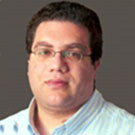
Title: The Memristor: An Elusive Device
Date: Feb. 23, 2012, Thu..
Time: 11:00 AM
Venue: CALIT2 room 3008
ABSTRACT
The memristor (M) is considered to be the fourth two-terminal passive element in electronics, alongside the resistor (R), the capacitor (C), and the inductor (L). Its existence was postulated in 1971, but its first implementation was reported in 2008. Where was it hiding all that time and what can we do with it? Come and learn how the memristor completes the roster of electronic devices much like a missing particle that physicists seek to complete their tableaus. The future of memristors is being modeled today at KAUST.
SPEAKER'S BIOGRAPHY
Dr. Salama received his Bachelor's degree with honors from the Electronics and Communications Department at Cairo University in Egypt in 1997, and his Master's and Doctorate degrees from the Electrical Engineering Department at Stanford University in the United States, in 2000 and 2005 respectively. He was an assistant Professor at RPI between 2005 and 2009. He joined KAUST in January 2009 and was the founding program chair till August 2011. His work on CMOS sensors for molecular detection has been funded by the National Institutes of Health (NIH) and the Defense Advanced Research Projects Agency (DARPA), awarded the Stanford-Berkeley Innovators Challenge Award in biological sciences and was acquired by Lumina Inc. He is the author of 90 papers and 8 patents on low-power mixed-signal circuits for intelligent fully integrated sensors and nonlinear electronics specially memristor devices. He is a senior member of IEEE.
CPCC Seminar by Itsik Bergel
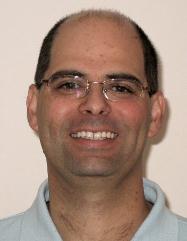
Title: THE SPECTRAL EFFICIENCY OF CSMA AD-HOC NETWORKS
Date: Feb. 22, 2012, Wed.
Time: 11:00 AM
Venue: Calit2 3008
ABSTRACT
Wireless ad hoc networks (WANETs) allow users to communicate, sharing the same wireless channel, without the need of any infrastructure. The performance of wireless ad-hoc networks (WANET) is mainly limited by its self-interference. The talk will focus on the performance of WANETs applying slotted carrier sense multiple access (CSMA) mechanism and possibly utilizing also directional antennas. The CSMA protocol is based on RTS/CTS messages, which allow each node to evaluate the amount of interference that it will cause to other active nodes, and provide a powerful tool for network coordination.
Our analysis gives simple expressions for the network area spectral efficiency (ASE). The presented ASE expressions allow an evaluation of the optimal system parameters, and give insight on the behavior of the ASE as a function of the various system parameters. In particular we show that the ASE of a CSMA WANET is well approximated by the ASE of an optimized ALOHA WANET, multiplied by the exponent of the network back-off probability. We also show that if the network has a maximal delay constraint then the ASE grows linearly with the allowed delay.
SPEAKER'S BIOGRAPHY
Itsik Bergel was born in Beer-Sheva, Israel, in 1971. He received the B.Sc. degree in electrical engineering and the B.Sc. degree in physics from Ben Gurion University, Beer-Sheva, Israel, in 1993 and 1994, respectively, and the M.Sc. degree and Ph.D. in electrical engineering from the University of Tel Aviv, Tel Aviv, Israel, in 2000 and 2005 respectively. In 2005 he did a postdoc research at the Dipartimento di Elettronica of Politecnico di Torino. He currently is a lecturer at the School of Engineering, Bar-Ilan University, Ramat-Gan, Israel. His research spans various aspects of communications theory, including add-hoc networks, DSL systems, UWB communications and capacity evaluations of non-coherent channels.
CPCC Distinguished Seminar by Ali H. Sayed
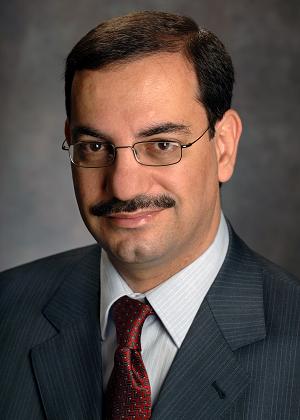
Title: BIO-INSPIRED COGNITION AND DIFFUSION ADAPTATION OVER NETWORKS
Date: Feb. 14, 2012, Tue.
Time: 10:00 - 11:00 AM
Venue: EH 2430
ABSTRACT
Complex patterns of behavior are common in many biological networks, where no single agent is in command and yet forms of decentralized intelligence are evident. Examples include fish joining together in schools, birds flying in formation, bees swarming towards a new hive, and bacteria diffusing towards a nutrient source. While each individual agent in these biological networks is not capable of complex behavior, it is the combined coordination among multiple agents that leads to the manifestation of sophisticated order at the network level. The study of these phenomena opens up opportunities for collaborative research across several domains including economics, life sciences, biology, and information processing, in order to address and clarify several relevant questions such as: (a) how and why organized behavior arises at the group level from interactions among agents without central control? (b) What communication topologies enable the emergence of order at the higher level from interactions at the lower level? (c) How is information quantized during the diffusion of knowledge through the network? And (d) how does mobility influence the learning abilities of the agents and the network. Several disciplines are concerned in elucidating different aspects of these questions including evolutionary biology, animal behavior studies, physical biology, and even computer graphics. In the realm of signal processing, these questions motivate the need to study and develop decentralized strategies for information processing that are able to endow networks with real-time adaptation and learning abilities. This presentation examines several patterns of decentralized intelligence in biological networks, and describes diffusion adaptation and online learning strategies that our research group has developed in recent years to model and reproduce these kinds of behavior.
SPEAKER'S BIOGRAPHY
Ali H. Sayed is Professor of Electrical Engineering at the University of California, Los Angeles, and Principal Investigator of the UCLA Adaptive Systems Laboratory (www.ee.ucla.edu/asl ). He has published widely in the areas of adaptation and learning with over 350 articles and 5 books. His research interests span several fields including adaptation and learning, adaptive and cognitive networks,biological networks, cooperative behavior, distributed processing, and statistical signal processing.
CPCC Seminar by Tara Javidi
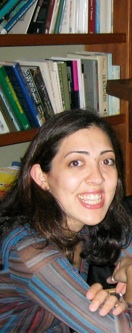
Title: Active Sequential Hypothesis Testing
Date: Dec. 1, 2011, Thu.
Time: 1:00 - 2:00 PM
Venue: EH 2430 (Colloquium room)
ABSTRACT
Active sequential hypothesis testing problem arises in a broad spectrum of applications in cognition, communications, design of experiments, and sensor management. In all of these applications, a decision maker is responsible to take actions dynamically so as to enhance information about an underlying phenomena of interest in a speedy manner while accounting for the cost of communication, sensing, or data collection. In particular, due to the sequential nature of the problem, the decision maker relies on his current information state to constantly (re-)evaluate the trade-off between the precision and the cost of various actions. In this work, we first discuss active sequential hypothesis testing as a partially observable Markov decision problem. In particular, we provide a brief survey of the design of experiment literature and the dynamic programming interpretation of information utility introduced by De Groot. Using Blackwell ordering, we, then, connect this stochastic control theoretic notion of information utility to the concept of stochastic degradation and uncertainty reduction in information theory. Finally, we discuss the dynamics and expected drift of log-likelihood, entropy, and probability of error as well as their connection to Kullback-Leibler divergence and mutual information in order to approximate the optimal value function (i.e. the solutions to the DP). We then utilize these value function approximations (lower bounds) to provide simple sequential test strategies (heuristics) whose performance is numerically compared to the optimal policies. Finally, we prove the asymptotic optimality of one class of these heuristic test strategies and, as a special case, recover Burnashev's coding scheme in the context of variable-length block coding over memoryless channels with feedback. Time permitting, we will compare and contrast our approach with recent results in Bayesian active learning literature. This is joint work with Mohammad Naghshvar and Ofer Shayevitz.
SPEAKER'S BIOGRAPHY
Tara Javidi studied electrical engineering at Sharif University of Technology, Tehran, Iran from 1992 to 1996. She received the MS degrees in electrical engineering (systems), and in applied mathematics (stochastics) from the University of Michigan, Ann Arbor, in 1998 and 1999, respectively. She received her Ph.D. in electrical engineering and computer science from the University of Michigan, Ann Arbor, in 2002. From 2002 to 2004, she was an assistant professor at the Electrical Engineering Department, University of Washington, Seattle. She joined University of California, San Diego, in 2005, where she is currently an associate professor of electrical and computer engineering. Tara Javidi was a Barbour Scholar during 1999-2000 academic year and received an NSF CAREER Award in 2004. Her research interests are in communication networks, stochastic resource allocation, stochastic control theory, and wireless communications.
CPCC Seminar by Mohamed-Slim Alouini

Title: Novel Generic Formulas and Relations for the Ergodic Capacity and Average Bit Error Rate over Generalized Fading Channels
Date: Sept. 9, 2011, Fri.
Time: 11:00 AM
Venue: Bren Hall (DBH) 3011
ABSTRACT
Analysis of the average binary error probabilities (ABEP) and ergodic capacity (EC) of wireless communications systems over generalized fading channels have been considered separately in the past. This talk introduces a novel moment generating function (MGF)-based unified approach for the exact computation of the ABEP and EC of single and multiple link communication with maximal ratio combining. This approach leads to a generic unified performance expression that can be easily calculated and that is applicable to a wide variety of fading scenarios. The talk introduces also a new analytical connection between the EC and the ABEP of binary modulation schemes. In particular formulas to obtain the EC from the ABEP and vice versa are proposed. Analytical and numerical examples are provided to illustrate the mathematical formalism for a variety of fading conditions.
SPEAKER'S BIOGRAPHY
Mohamed-Slim Alouini was born in Tunis, Tunisia. He received the Ph.D. degree in electrical engineering from the California Institute of Technology (Caltech), Pasadena, CA, USA, in 1998. He was with the department of Electrical and Computer Engineering of the University of Minnesota, Minneapolis, MN, USA, then with the Electrical and Computer Engineering Program at the Texas A&M University at Qatar, Education City, Doha, Qatar.
Since June 2009, he has been a Professor of Electrical Engineering in the Division of Physical Sciences and Engineering at KAUST, Saudi Arabia, where his current research interests include the design and performance analysis of wireless communication systems.
CPCC Networkshop

Title: CPCC Networkshop
On August 29, CPCC held an internal workshop on networking. CPCC researchers presented their work and discussed future possible collaborations.
CPCC Networkshop
Monday August 29
EH 2430
|
12:00-12:45
|
Lunch
|
|
12:45- 2:30 |
Ali Behbahani "Linear Decentralized Estimation of Correlatd Data for Wireless Sensor Networks"
Jie Chen "On the Achievable Sum Rate of Multiterminal Source Coding for a Remote Gaussian Vector Source"
Feng Jiang "Phase-Only Analog Encoding for a Multi-Antenna Fusion Center"
Roberto Pagliari "Programming and Deployment of Wireless Sensor Networks"
|
| 2:30-2:45 |
Break |
| 2:45-4:00 |
Furong Huang "Concurrent Load Balancing in Distributed Systems with Partial Information
Pegah Sattari "Network Coding for Inference Problems"
Maciej Kurant "Walking on a Graph with a Magnifying Glass: Stratified Sampling via Weighted Random Walks"
|
4:00-4:15 | Break |
| 4:15-5:00 | Discussion, future directions, collaborations, etc. |
CPCC Seminar by Azadeh Vosoughi
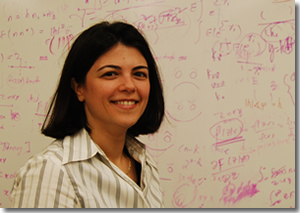
Title: Wireless Channel Uncertainty in Relay-Assisted Communication and Distributed Detection Systems
Date: July 20, 2011, Wed.
Time: 11 AM
Venue: Engineering Hall 2430
ABSTRACT
One of the main challenges in wireless communications is coping with channel uncertainty. Dealing with this uncertainty, and the limitations it imposes, is tightly related to the specific system and its application. In this talk, we consider two systems, namely a wireless bi-directional relay-assisted communication system and a wireless distributed detection system. We study the impacts of channel uncertainty on the performance limits of these two systems and investigate optimal transceiver designs that minimize these impacts.
For the bi-directional relay-assisted communications we consider a training-based system, in which receivers learn the channels via employing dedicated pilot symbols. Assuming Gaussian inputs and block Rayleigh fading channel model, we study the trade-off between the accuracy and the bandwidth/energy costs of channel estimation and explore optimal transmit resource allocation, subject to network power constraint. We consider Cramer-Rao lower bound for channel estimation, sum-rate and outage probability bounds as the performance metrics.
Next, we discuss the effects of channel uncertainty on the design and performance of a wireless distributed detection system that is tasked with solving a binary hypothesis testing problem. We consider systems with training-based and blind channel estimation and coherent/non-coherent receptions. We investigate the optimal data fusion rules that maximize the overall system detection reliability and error exponent. Furthermore, we present and compare several detection and data fusion designs that exploit diversity to combat channel uncertainty and enhance system performance.
SPEAKER'S BIOGRAPHY
Azadeh Vosoughi is Wilmot Assistant Professor in the Department of Electrical and Computer Engineering at the University of Rochester. She received her BS degree from Sharif University of Technology, Tehran, Iran, in 1997, her MS degree from Worcester Polytechnic Institute, Worcester, MA, in 2001, and her PhD degree from Cornell University, Ithaca, NY, in 2006, all in Electrical Engineering. Her research interests lie in the areas of wireless relay-assisted communications, distributed detection and estimation, and distributed source coding and compression. She was the recipient of the Furth award in 2006 and was appointed as Wilmot Assistant Professor in 2009 at the University of Rochester. Dr. Vosoughi received the NSF CAREER award in 2011 for her research on the integration of signal processing and communications for distributed detection systems.
CPCC Distinguished Seminar by Ramesh Rao
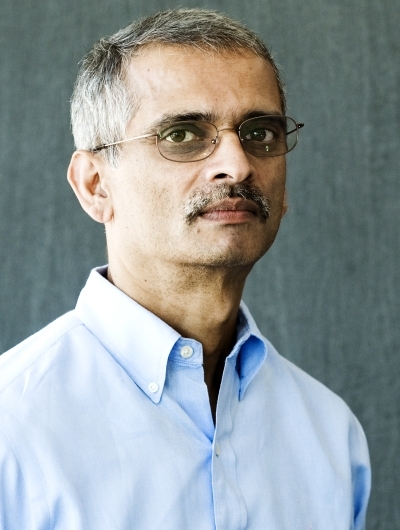
Title: Enabling Citizen Science to Enhance and Transform Health
Date: April 22, 2011, Fri.
Time: 11 AM
Venue: DBH 6011
ABSTRACT
The dramatic spread in the use, along with significant increases in speed and efficiency, of broadband Internet and wireless devices in recent years has produced an excellent platform for the development of novel approaches to improve health through applications using emerging information technology, telecom, and other technology advances. These new technologies have the potential to advance the science and body of medical knowledge, as well as improve public and personal health across all types of medical conditions including chronic diseases (such as cardiovascular disease and diabetes/metabolic syndrome), trauma, and cancer. The utility of cutting-edge technologies in healthcare is just beginning to be explored.
The wireless devices and services in wide use today are packed with ample sensing, processing, storage and communication capabilities. With adaptation and augmentation, these systems can be transformed into tools for the preservation of health, rapid intervention for acute care and long-term management of chronic conditions, as well as other medical applications. The personal nature of these devices makes it possible to connect one (or more) body sensors for persistent gathering of vital signs to enable a new generation of diagnostics and interventions. These unobtrusive, wirelessly connected devices will play a critical role in the translation of epigenetic understanding in support of personal health. Calit2 is engaged in multiple projects related to these possibilities, and others, which bridge emerging technologies with healthcare delivery, knowledge, research, and outcomes. Working with local, regional, national, and international partners, Calit2 brings together faculty, clinical, student and staff researchers with academic, industry, community, and government collaborators to form multidisciplinary teams to prototype systems of emerging, transformational and disruptive technologies.
We are currently engaged in several projects which investigate the power of information technology to enhance, even transform, healthcare resources, knowledge bases, and outcomes utilizing Web 2.0 technologies. These include efforts to develop decision support tools, wireless patient and population health interventions, integrative databases that support these operations, as well as personal health information exchange, clinical trials, and more. New models are being created for population-specific health information sharing and development, resulting in platforms and ontologies which are not only the best possible implementations, but also the most responsive to the wide-ranging needs of the community at large (patients, healthcare providers, and medical researchers, alike). We are currently in early stages of creating a scalable effort at tracking, organizing and analyzing biometric data, especially metrics pertaining to the heart. Heart rate variability (HRV) is a measure of the beat-to-beat interval. It has become a noninvasive tool for accessing the activities of the autonomic nervous system. The fact that HRV can be easily derived makes it a promising marker for the study of human physiological response. We will share a few _early_ experiences in engaging a group of lay citizen scientists who are involved in gathering, sharing and analyzing physiological data to enhance personal understanding and also developing new data informed practices.
SPEAKER'S BIOGRAPHY
Ramesh Rao is the director of the University of California, San Diego division of the California Institute for Telecommunications and Information Technology (Calit2). He holds the Qualcomm Endowed Chair in Telecommunications and Information Technologies in the department of Electrical and Computer Engineering at UC San Diego, where he has been a faculty member since 1984. Previous to Calit2, he was the director of UCSD's Center for Wireless Communications. Prof. Rao is involved on a day-to-day basis with a wide variety of interdisciplinary and collaborative research initiatives, leading several major projects at Calit2. He has been a lead investigator on dozens of major federal-, state-, foundation-, defense-, and industry-funded grants and has authored more than 225 technical papers.
For his leadership in wireless communications, Dr. Rao was named an IEEE Fellow. He has been a member of the Board of Governors of the IEEE Information Theory Society. He is a Senior Fellow of the California Council on Science and Technology (CCST) and is the chair of the CCST's Personalized Health Information Technology Task Force ("pHIT"). He is a member of the Rady Children's Hospital and Health Center's Information Technology Task Force. He is also a member of the Health Authority of Abu Dhabi's Weqaya Advisory Task Force. In 2010, he received a Professional Gordon Engineering Leadership Award from UCSD's Gordon Engineering Leadership Center. He is on the Board of Directors of CommNexus San Diego and is the vice-president of the San Diego Indian American Society (SDIAS). He participates in many other technical, academic and industry organizations, boards, councils and committees. He earned his Ph.D. and M.S. in electrical engineering from the University of Maryland, College Park, MD.
About 100 people attended the CPCC Research Showcase
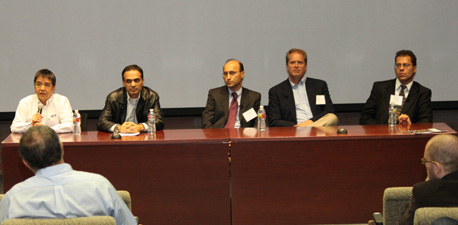
On March 9, CPCC held a research showcase in the Calit2 Building to share its accomplishments and present a look at future opportunities.
An audience of nearly 100 listened intently to researcher presentations, viewed posters and demonstrations, and shared their insights into the constantly evolving field of communications.
School of engineering Interim Dean Dimitri Papamoschou welcomed the guests, followed by John Hemminger, vice chancellor or research, who discussed the CPCC's role at UCI. Other speakers included Calit2 Irvine director G.P. Li and CPCC director Hamid Jafarkhani.
Three CPCC-affiliated professors made research presentations: Payam Heydari discussed circuit and hardware design; Lee Swindlehurst offered a look into communications systems; and Homayoun Yousefi'zadeh shared the center's efforts in networking.
The research showcase was co-sponsored and supported by Calit2.
Jafarkhani presentation
Li presentation
CPCC Research Showcase
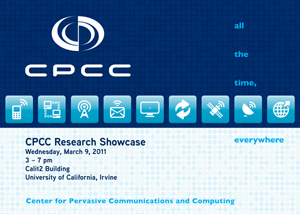
Join us Wednesday, March 9 for activities showcasing the center's novel research. Explore some of the technologies in development and discover emerging opportunities for collaboration.
The event is free, but, Registration is required.
Register
CPCC Distinguished Seminar by Vincent Poor
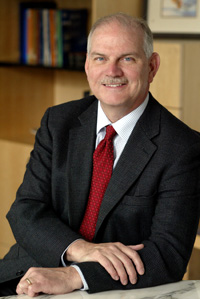
Title: Information and Inference in the Wireless Physical Layer
Date: January 14, 2011, Fri.
Time: 11:00 AM
Venue: DBH 6011
ABSTRACT
Wireless networking applications continue to motivate challenging problems in information theory, signal processing, and other fields. A salient feature of wireless networks is the close interaction between the physical layer and the other networking layers. This phenomenon is a result of the principal distinguishing features of wireless, namely mobility and the importance of physical properties (diffusion, interference, fading and radio geometry) in determining link characteristics. For example, the applications layer interacts considerably with the physical layer, as is well known through the importance of quality-of-service in wireless network design. This talk will explore briefly four research areas, primarily involving information theoretic or inferential problems, each of which is motivated by an applications-layer issue. In particular, the four applications of file transfer, inference, real-time multimedia transmission, and social networking, will be used to motivate consideration of four respective research problems involving the physical layer: physical layer security in data networks, distributed inference in sensor networks, finite-blocklength capacity in multimedia networks, and connectivity in small-world networks. Recent progress in each of these four research areas will be reviewed.
SPEAKER'S BIOGRAPHY
H. Vincent Poor is the Michael Henry Strater University Professor of Electrical Engineering at Princeton University, where he also Dean of the School of Engineering and Applied Science. His current research interests lie primarily in the area of wireless networking and related fields. Among his publications in these areas are the recent books Quickest Detection (Cambridge, 2009) and Information Theoretic Security (NOW, 2009). Dr. Poor is a member of the National Academy of Engineering, and is a Fellow of the IEEE, the American Academy of Arts & Sciences, and the Royal Academy of Engineering of the U.K. He has served as President of the IEEE Information Theory Society, and as Editor-in-Chief of the IEEE Transactions on Information Theory. In 2005, he received the IEEE Education Medal. Recent recognition of this work includes the 2009 Edwin Howard Armstrong Achievement Award of the IEEE Communications Society, the 2010 IET Ambrose Fleming Medal for Achievement in Communications, and the 2011 IEEE Eric E. Sumner Award.
CPCC Student Seminar Series Launched
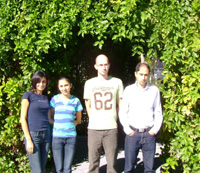
CPCC launched a student seminar series to provide a forum for graduate students to disseminate their research. In this series, CPCC graduate students and sometimes faculty present their research results to fellow researchers, talk about their open problems, and possibly find topics of mutual interest to collaborate on. For the first time, the series is run by current CPCC graduate students during the 2010-2011 academic year. Currently, the series covers topics in communications, networking, and information theory. In future, the topics will be extended to also cover circuit design. The talks take place Tuesdays at 11:00-12:00 in Engineering Hall 2430 and are open to the public. Refreshments will be served at 10:50 AM. The schedule of the talks can be found in the seminar webpage.
CPCC members participated in IEEE Globecom 2010
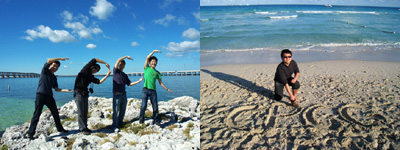
The IEEE Globecom 2010 was held in Miami, FL, from Dec. 7 to Dec. 10. CPCC faculty members, Ender Ayanoglu, Syed Ali Jafar, Hamid Jafarkhani, and Lee Swindlehurst served as session chairs in the conference. CPCC students, Tiangao Gou, Jing Huang, Feng Jiang, Boyu Li, Feng Li, Liangbin Li, and Chenwei Wang participated and presented 7 papers collaboratively.
CPCC Distinguished Seminar by Bhaskar Rao

Title: Insights into the Stable Recovery of Sparse Solutions
Date: June 9, 2010, Wed.
Time: 11 AM
Venue: Engineering Hall 2430
ABSTRACT
The problem of sparse signal recovery has received much attention recently with the development of compressed sensing. In this talk, we will examine the problem of stable recovery of sparse solutions in noisy environments. First we will briefly review algorithms for sparse signal recovery and discuss the connection between l1 minimization and support recovery of sparse signals to provide context. We then establish a connection between the sparse signal recovery problem and wireless communication models in network information theory. We will show that the stable recovery of a sparse solution with a single measurement vector (SMV) can be viewed as decoding competing users simultaneously transmitting messages through a Multiple Access Channel (MAC) at the same rate. With multiple measurement vectors (MMV), we relate the inverse problem to the wireless communication scenario with a Multiple-Input Multiple Output (MIMO) channel. In each case, based on the connection established between the two domains, we will leverage channel capacity results to shed light on the fundamental limits of any algorithm to stably recover sparse solutions in the presence of noise.
SPEAKER'S BIOGRAPHY
Bhaskar D. Rao received the B.Tech. degree in electronics and electrical communication engineering from the Indian Institute of Technology, Kharagpur, India, and the M.S. and Ph.D. degrees from the University of Southern California, Los Angeles, in 1981 and 1983, respectively. Since 1983, he has been with the University of California at San Diego, La Jolla, where he is currently a Professor with the Electrical and Computer Engineering Department. His interests are in the areas of digital signal processing, estimation theory, and optimization theory, with applications to digital communications, speech signal processing, and human-computer interactions.
He is the holder of the Ericsson endowed chair in Wireless Access Networks and is the Director of the Center for Wireless Communications. His research group has received several paper awards. Recently, a paper he co-authored with B. Song and R. Cruz received the 2008 Stephen O. Rice Prize Paper Award in the Field of Communications Systems and a paper he co-authored with S. Shivappa and M. Trivedi received the best paper award at AVSS 2008. " He was elected to the fellow grade in 2000 for his contributions in high resolution spectral estimation.
CPCC Fall 2009 Seminar Series Launched
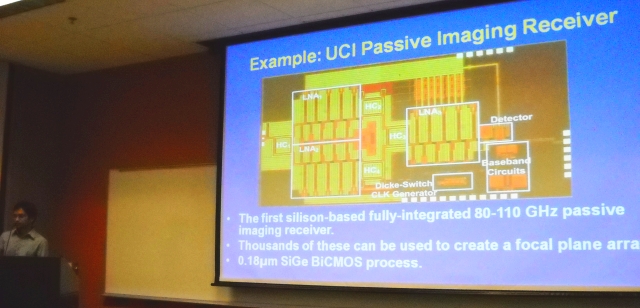
CPCC is continuing its seminar series during the Fall quarter of 2009, with an emphasis on circuits and systems for communications. CPCC faculty, postdoctoral fellows, and graduate students are presenting their research results to fellow researchers. Sample topics to be presented are integrated circuits for millimeter applications, equalization techniques for optical communication, and architectures for error correcting coding. The seminars take place Mondays at 10 AM at 2430 Engineering Hall and are open to the public. Weekly announcements are emailed to the EECS graduate student and CPCC mailing lists. In order to receive the talk announcements, subscribe to the CPCC Mailing List or visit the CPCC Mailing List Archives to browse through past announcements.
CPCC Seminar Series Launched
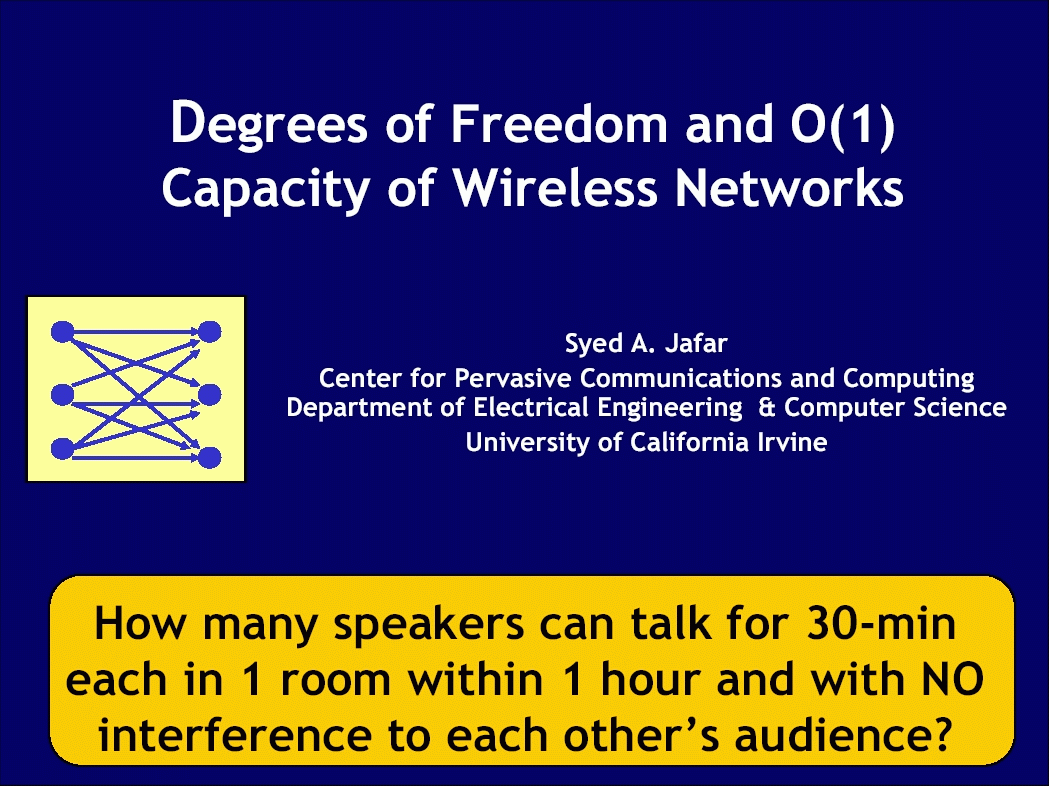
CPCC launched a seminar series in order to provide a forum for dissemination of its research during the Winter quarter of 2009, extending into the Spring quarter of 2009. In this series, CPCC faculty, postdoctoral fellows, and graduate students are presenting their research results to fellow researchers. Currently the series covers topics in communication and information theory. This series will be extended into the 2009-2010 academic year and then it will cover networking and circuit design in addition to communication and information theory. The talks take place Mondays at 10 AM and are open to the public. In order to receive talk announcements, subscribe to the CPCC Mailing List or visit the CPCC Mailing List Archives to browse through past announcements.
2005 HSSoE Research Symposium CPCC Session
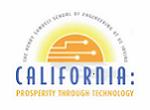
There is a research symposium organized every spring by the Henry Samueli School of Engineering at UC Irvine. The theme of the Symposium in 2005 was California: Prosperity Through Technology. One of the sessions during this symposium, titled Precursors of the Next Wave in Communications, was organized by CPCC. The session took place May 23, 2005. After a Keynote Opening by Raouf Halim, Chief Executive Officer of Mindspeed Technologies, Inc. (a CPCC donor), five faculty associated with CPCC outlined their most recent research. Presentations used during the session, as well as its video, are available from the links on the right.
Presentation Slides (PPS 14MB)
2005 HSSoE CPCC Panel
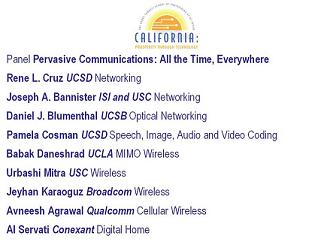
UC Irvine The Henry Samueli School of Engineering organized its yearly Research Symposium in 2005 on May 23-24, 2005. Center for Pervasive Communications and Computing contributed a panel, titled Pervasive Communications: All the Time, Everywhere, held on May 23, 2005. The eight panelists, drawn from Southern California academic and industrial organizations, discussed the state and the future of the telecommunications industry during the panel. For a video of the panel as well as the Power Point presentations, follow the links on the right.
Presentation Slides (PPS 12MB)
CPCC Summer 2004 Research Presentation Day for Conexant, Mindspeed, and Skyworks Takes Place

CPCC held a Research Presentation Day for three of its donor companies Conexant Systems, Mindspeed Technologies and Skyworks Solutions on July 15, 2004. The event was organized in order to bring CPCC member and affiliate faculty together with researchers from the three companies and to discuss research interests of both sides. The day was part of a series of planned events to put a process in place so that CPCC and its donors can engage in close cooperative research. The first phase of this plan was a CPCC/Cal-(IT)2 Poster Presentation Day held on-site at the lobbies of the Newport Beach facilities of Conexant and Mindspeed on May 14, 2004. The Research Presentation Day of July 15, 2004 will be followed by a number of proposals from CPCC member and affiliate faculty, which will result in the determination of a number of CPCC Research Fellowships for the academic year 2004-2005.
CPCC/Cal-(IT)2 Poster Presentation Day for Local High-Technology Companies Takes Place
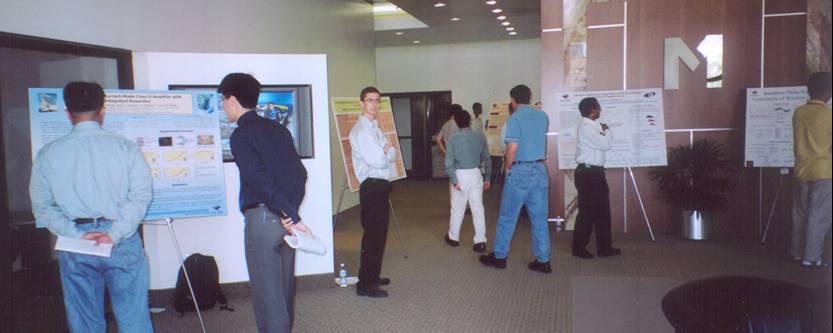
Graduate students from CPCC and Cal-(IT)2 presented their research in a poster presentation session held on-site at the Newport Beach lobbies of Conexant Systems and Mindspeed Technologies May 14, 2004. A total of 30 graduate students, 15 from UC Irvine and 15 from UC San Diego, displayed their research.
The goal of the event was to bring graduate student researchers in close contact with the technical teams from the companies. "It's not easy for our technical staff to get out of their offices and attend off-site research presentations," said Debbie Mountford, director of staffing and university relations at Conexant Systems. "We decided it was a great idea to bring the research to them and based on the reaction it appears to be the way to go."
H. Vincent Poor Gives Distinguished Speaker Talk

H. Vincent Poor, a worldwide known scholar, researcher, and educator in the fields of information theory, communications and signal processing visited UCI and gave a Distinguished Speaker talk on February 18, 2004. The event was co-sponsored by the UCI division of the California Institute for Telecommunications and Information Technology, The Henry Samueli School of Engineering, and the Center for Pervasive Communications and Computing. The talk was titled "Signal processing in communications: Issues and trends." In his talk, Professor Poor discussed a number of new areas in communications such as turbo processing, multiple-input multiple-output systems, cross-layer design, and quantum communications in a multiuser detection framework.
Presentation slides (PPS 1MB)
Digital Signal Processing Pioneer Visits CPCC
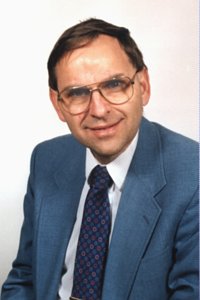
Professor Lawrence R. Rabiner, one of the pioneers of the field of digital signal processing, and a highly accomplished engineer, scientist, inventor, and research leader, visited the CPCC on February 13, 2003 and gave a presentation entitled "Telecom technology for the 21st century." In his talk, Professor Rabiner described the revolution that has taken place in telecommunications during the last decade and pointed to the new telecommunications network architecture that has arisen as a result of this big change. He outlined what the telecommunications network in the 21st century will look like, and gave demonstrations of new services that have already been built. Examples included a text-to-speech system that delivers the emotion in the text, a highly helpful customer care representative system based on speech recognition, and a travel agent software which employs speech recognition as well as facial expression on a 3-D model. Prior to assuming professor positions at Rutgers University and UCSB, Dr. Rabiner was most recently Vice President of Research at AT&T Laboratories where he managed a broad research program in communications, computing, and information sciences.
Presentation slides (PDF 6MB)
Inventor of TCM Visits CPCC
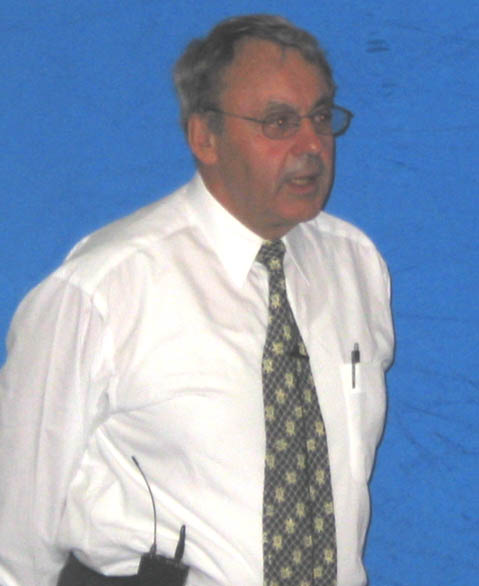
Dr. Gottfried Ungerboeck, inventor of the technique of Trellis Coded Modulation, visited the CPCC on December 9, 2002 and gave a presentation entitled "Coding with Euclidean-space signals: past, present and outlook." Dr. Ungerboeck, who is currently with Broadcom Corporation, is a well-known scientist and engineer, who has spent most of his career at the IBM Zurich Research Laboratory. While working on voiceband modems, he made the critical observation that it is possible to enlarge the signal constellation by a factor of two, code in the new signal space, and achieve a rate very close to channel capacity without increasing transmission bandwidth. The invention immediately made its way into voiceband modem standards, microwave transmission, and many other applications. The talk is an overview of the current state of coding and modulation.
Presentation slides (PDF 700KB)
Communication Theory Pioneer Visits CPCC
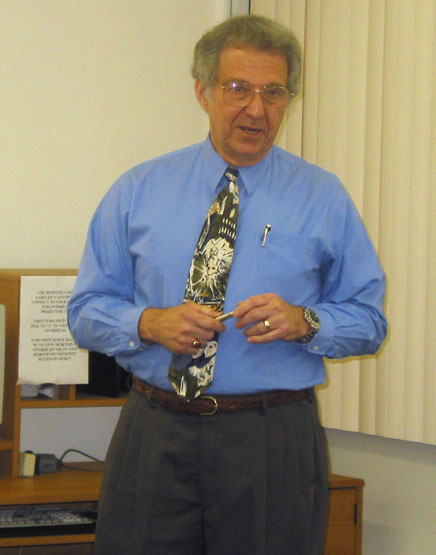
Dr. Marvin Simon, one of the pioneers of the field of communication theory, visited CPCC on October 28, 2002 and gave a talk titled "Advances in Performance Techniques for Wireless Communications." Dr. Simon is a Principal Scientist at the Jet Propulsion Laboratory, California Institute of Technology, Pasadena, California. He has been a technology pioneer for the last 34 years and has performed research applied to the design of NASA's deep-space and near-earth missions. Dr. Simon is currently on a Research Leave in the Department of Electrical Engineering at the University of California, Los Angeles where he is responsible from forming research collaboration with academic institutions. Dr. Simon is currently working with the CPCC faculty member Prof. Hamid Jafarkhani on extending the techniques presented in his talk to the analysis of error performance of space-time codes in fading channels. Dr. Jafarkhani is one of the inventors of space-time codes, invented three years ago and have already been adopted by next generation cellular network standards WCDMA and cdma2000.
In his talk, Dr. Simon illustrated techniques that enable a unified analysis methodology for different fading channel models and yield closed form solutions. Until recently, when Dr. Simon and his colleague Prof. Slim-Alouni invented the new closed form techniques, system design for fading channels was mostly based on simulations. In communication engineering, closed form solutions are preferable to simulations since they provide substantially more insight into system behavior. Most of the techniques described by Dr. Simon in his talk can be found in his two books Digital Communication Over Fading Channels: A Unified Approach to Performance Analysis (John Wiley and Sons, 2000) and Probability Distributions Involving Gaussian Random Variables: A Handbook for Engineers and Scientists (Kluwer Academic Publishers, 2002).




































































































